The Collapse of Housing Bubble in China
New Power as New Forms of Living
Hanwen Xu
Architectural Association School of Architecture
Projective Cities Programme 2021-2023

1
ARCHITECTURAL ASSOCIATION SCHOOL OF ARCHITECTURE GRADUATE SCHOOL
DECLARATION:
“I certify that this piece of work is entirely my own and that any quotation or paraphrase from the published or unpublished work of others is duly acknowledged.“
SIGNATURE:

DATE: 24.04.2023
2
The Collapse of Housing Bubble in China New Power as New Forms of Living
Dissertation Submited in partial fulfilment of the requirements of Taught Master of Philosophy in Architecture and Urban Design
Hanwen Xu
Architectural Association School of Architecture
Projective Cities Programme 2021-2023
3
4
Completing this thesis would not have been possible without the guidance, support, and challenging discussions of my supervisors and tutors at AA Projective Cities. I am deeply grateful to Dr. Plation Issaias, Dr. Hamed Khosravi, and Dr. Doreen Bernath for their selfless help and invaluable feedback throughout my research journey.
I would also like to express my gratitude to all my colleagues and friends in AA Projective Cities and in London, who have provided me with memorable experiences and insightful ideas.
Thanks to AA for supporting me with a bursary.
Lastly, I would like to give a special thanks to my parents. Their unwavering support and understanding have been a driving force for me to keep moving forward.
Hanwen Xu
April 2023
5



6
ABSTRACT
The Collapse of the Housing Bubble in China delves into contemporary issues facing China. The starting point is that a plethora of data points to the inevitable collapse of China’s real estate bubble in the 2020s. The collapse of financial capitalism’s logic in this industry goes beyond its surface-level implications and should be regarded as more than just an independent economic or industry crisis. Similar to Japan during the 1990s bubble economy, the collapse of the real estate market will not only lead to changes in housing typologies but also bring about changes in social structures, living forms, and even the urban context. Simultaneously, the housing market’s collapse represents a symbolic transformation of the four-decade-old system dominated by the big government in China, which prioritized “economic priorities” and rapid urbanization as the ultimate goals.
The thesis’ primary objective is to explore the new forms of living in China’s ‘post-real estate era’, which China had entered after real estate developers lost their absolute share in China’s housing industry. These new forms of living will be profoundly influenced by changes in power relations between the government, developers, and citizens resulting from the fall in land and housing prices and the rise of real estate tax. The burgeoning middle class in China, which has emerged in the hundreds of millions in the last two decades, will be a crucial subject of inquiry in this thesis. How they will exert influence in the housing system, fight for their agency, cooperate with the government/developers, and ultimately establish a new housing system will be explored.
Furthermore, the central argument’s ambition is to project such a change in living forms as a reflection of the state, providing the author with an opportunity to re-evaluate China’s past, present, and future. The thesis’s purpose is not to criticize capitalism, authoritarianism, or any other “-ism” in China using Western templates. On the contrary, this projection serves as an entry point to explore how different forces have played a role in the complex context during the past 70 years of the People’s Republic of China, which has undergone significant changes, ultimately shaping the prospect of China’s modernization.
FIG.0.1
In the past seventy years, the living form of urban residents in China has undergone drastic changes along with the social changes.
1. Left Top
The public housing in 1950s’ Shanghai. In planned economy China, urban residents lived in Danwei almost for free.
2. Left Middle
Henglong Housing, China’s first batch of commercial housing in Guangzhou. In 1993, a living unit sold for 170,000 yuan.
3. Left Bottom
In 2020s, the price of an apartment in Guangzhou is more than 3,000,000 yuan.
7


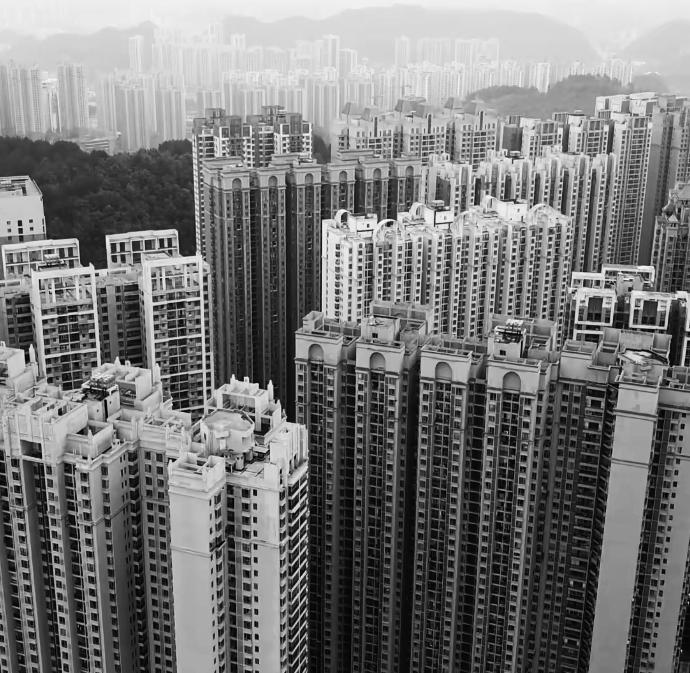



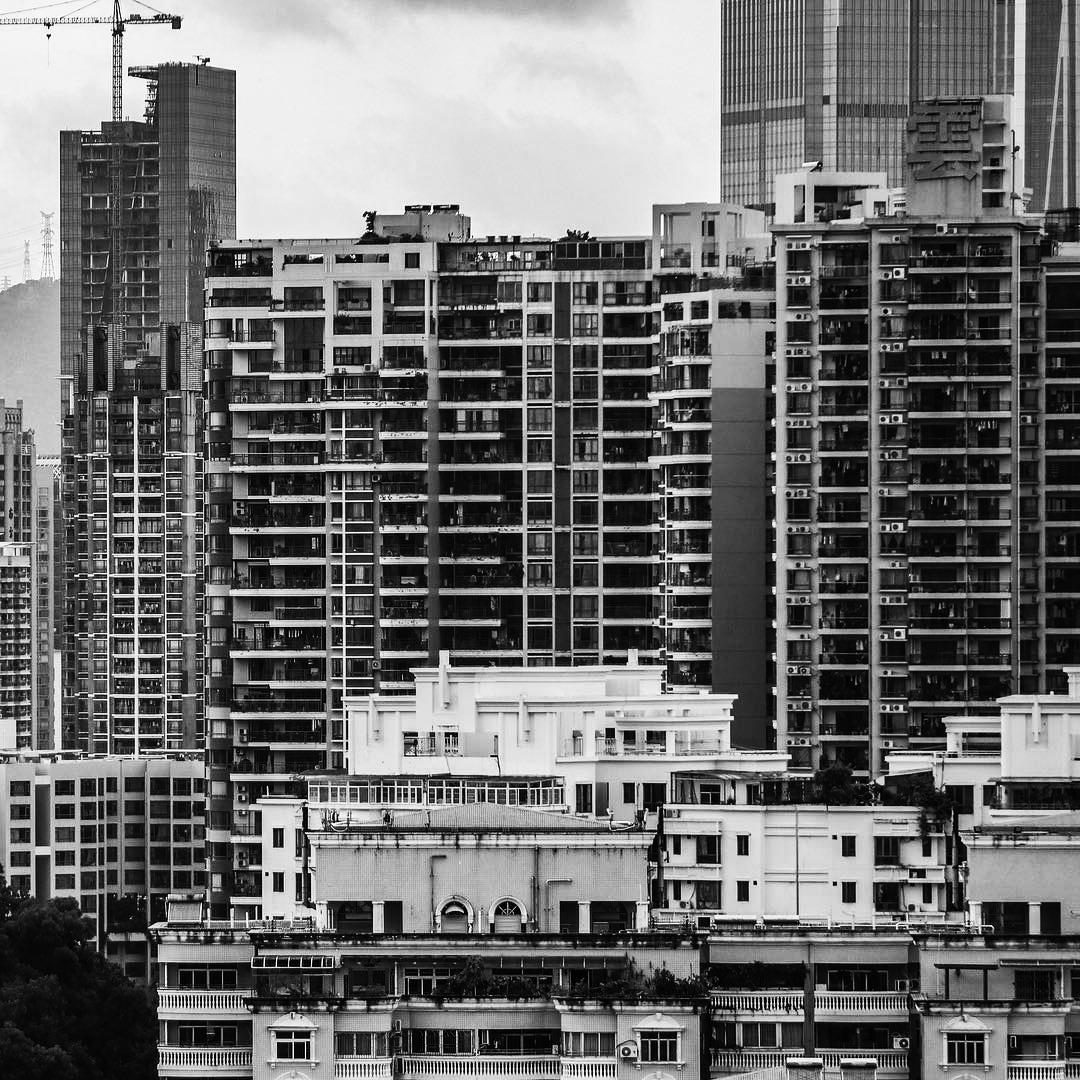

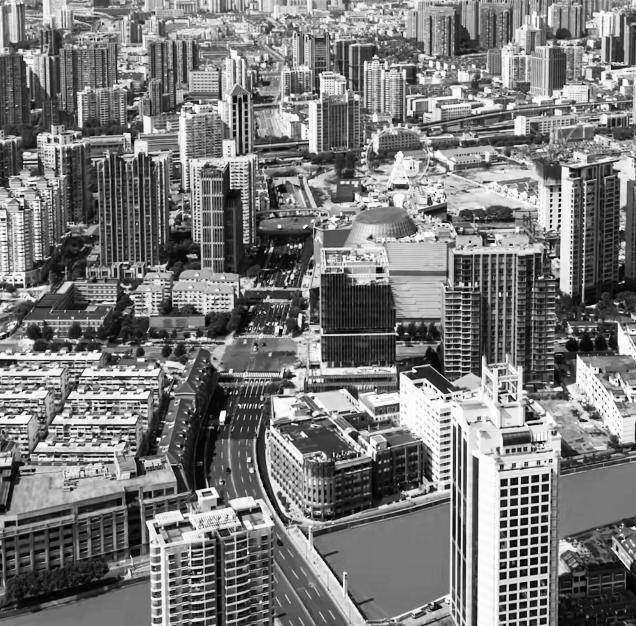
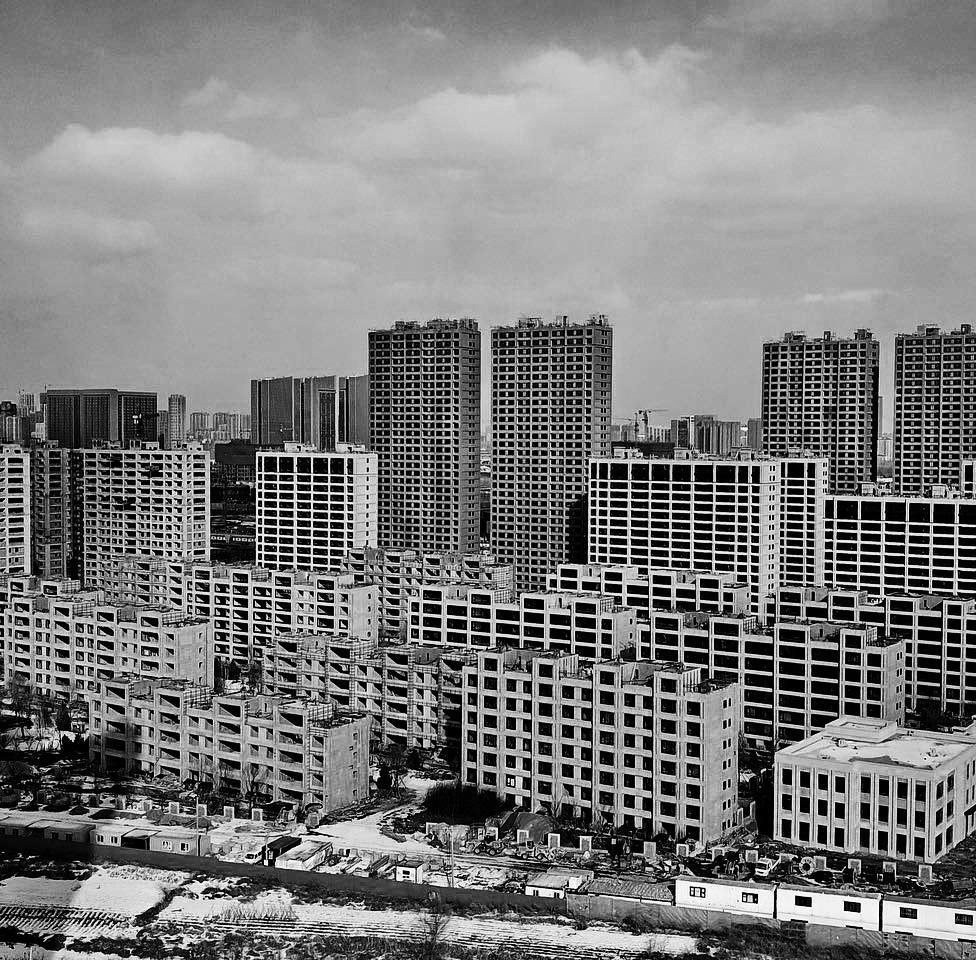


8
9 CONTENT CHAPTER 3. The Logic of (Financial) Capitalism CHAPTER 4. The Logic of Ownership CHAPTER 2. The Logic of Power Relation CHAPTER 1. From Welfare to Property: The Rise of Real Estate in Modern China INTRODUCTION RESEARCH STRUCTURE ABSTRACT BIBLIOGRAPHY CONCLUSIONS IMAGE SOURCES 7 10 14 17 35 59 105 140 146 150
1. The data comes from National Bureau of Statistics of China.
2. “People in the cities” (Chinese: 城里 人), In China’s dual urban-rural household registration system, “people in the cites” are considered to have better access to social welfare and public amenities, making them the envy of rural residents.
3. “the Great Rejuvenation of the Chinese Nation” (Chinese: 中华民族的伟大 复兴) is a governing concept proposed by the Communist Party of China at the 15th National Congress in 1997, which prioritizes economic development. This concept was later developed by Chinese leaders such as Hu Jintao and Xi Jinping.
4. Real estate is a significant source of revenue for local governments in China. In 2017, China’s revenue from land sales reached 5.2 trillion yuan, accounting for 24.0% of local governments’ overall financial resources. Eleven real estate-related tax revenues reached 2.5 trillion yuan, accounting for 11.4% of local comprehensive financial resources. In total, the real estate industry contributed 35.4% of local fiscal revenues.
5. Yingfang Chen, City Chinese Logic (Chinese Edition: 城市中国的逻辑), (Shanghai: Shanghai SDX Joint Publishing Company, 2012).
INTRODUCTION
Capital, Power and Urbanisation
Following the reform and opening up of the 1980s, China’s urban development movement has been widely regarded as an economic development model dominated by the government’s power and developers’ capital, with the aim of maximizing land and space benefits as quickly as possible. In this model, China’s urbanization rate grew rapidly from under 20% in 1978 to over 60% in 2019 (FIG.0.2), as a large number of Chinese shed their rural identities and became “people in the cities 2”. This process has undoubtedly been a miraculous feat that has stunned the world. Amidst this backdrop of success and pride, the national ideology’s “economy-first” strategy of the last forty years has conferred unchallenged ethical and moral validity upon “urbanization” and “urban development” as instruments for realizing “the Great Rejuvenation of the Chinese Nation 3”.
After the tax-sharing reform in 1994, local governments in China were faced with financial difficulties and had to resort to land finance as solution 4, which led to a surge in land and housing prices. Local government’s dependence on land finance created a strong alliance between the government and real estate developers, which has been wildly criticized as unjust and non-transparent (FIG.0.3.1) 5. As a result, corruption in urban development have become frequent. Citizens, including landowners and residents, have been excluded from participating in the urbanization process and have suffered losses in the interests.

10
FIG.0.2 The Urbanisation of China, 1949-2019 1
GOVERNMENT
CITIZEN DEVELOPER provide legitimacy sourcesof finance
FIG.0.3.1
GOVERNMENT
CITIZEN DEVELOPER
FIG.0.3.2
11
Power relation in the housing system between government, developer, and citizen in the era of real estate.
The collapse of real estate will lead to transformation in power relations in the housing system.
6. All the above data comes from Organisation for Economic Cooperation and Development (OECD) and CEIC Data.
7. Matthew Soules, Icebergs, Zombies, and the Ultra Thin: Architecture and Capitalism in the Twenty-First Century, (New York: Princeton Architectural Press, 2021).
8. The State Council of The People’s Republic of China, Decision of the Standing Committee of the National People’s Congress on authorizing The State Council to carry out pilot real estate tax reform in some regions (Chinese: 全国人 民代表大会常务委员会关于授权国务院在部 分地区开展房地产税改革试点工作的决定), Available at: http://www.gov.cn/xinwen/2021-10/23/content_5644480.htm.
The Collapse of the Real Estate Market and Real Estate Tax
After experiencing rapid economic growth for almost forty years, China’s economic growth is now gradually slowing down. However, with the depletion of land resource potential over the past 40 years, the Chinese government’s land finance policy has become unsustainable in the 2020s. The excess housing supply and exorbitantly high house prices have pushed the real estate industry to the brink of collapse. In the first quarter of 2022, the transaction area of new commercial housing in the top 100 cities in China dropped by 40% year on year. Since 2021, more than 400 real estate developers in China have gone bankrupt due to capital chain breaks. Among them are big names like Evergrande Group and Sunac China Holdings Limited, which have assets worth more than one trillion yuan and are now on the verge of total collapse. In the 2020s, the housing price in Shenzhen is 25 times higher than the average household disposable income 6, forcing many families to use all the money from six wallets (the wallets of the partner and their parents) to purchase a shelter. In the logic of financial capitalism, real estate is seen as an object of investment rather than a necessity for human habitation 7. To address this issue, Chairman Xi Jinping stressed in his address to the Nineteenth Party Congress in 2017 that “Houses are built to be inhabited, not for speculation.” This manifesto also reflects the end of China’s land development strategy during its rapid economic growth. After over two decades of the golden age, the logic of (state) financial capitalism has finally ended in China’s housing system.
Therefore, in 2021, the Chinese government initiated a pilot real estate tax reform program to fill the financial gap for land sales 8 (FIG.0.4). This reform is considered the Chinese government’s core policy to ensure the stability of local government finances. Although the nationwide roll out of real estate tax reform is still pending, it is reasonable to assume that the resources of government finance will shift from private capital (real estate developers) to property owners (citizens). As a result of this new source of tax revenue, the alliance between the government and real estate developers will gradually weaken, and a new power relation will form among the government, citizens, and real estate developers, creating diverse opportunities for new forms of living (FIG.0.3.2).
12
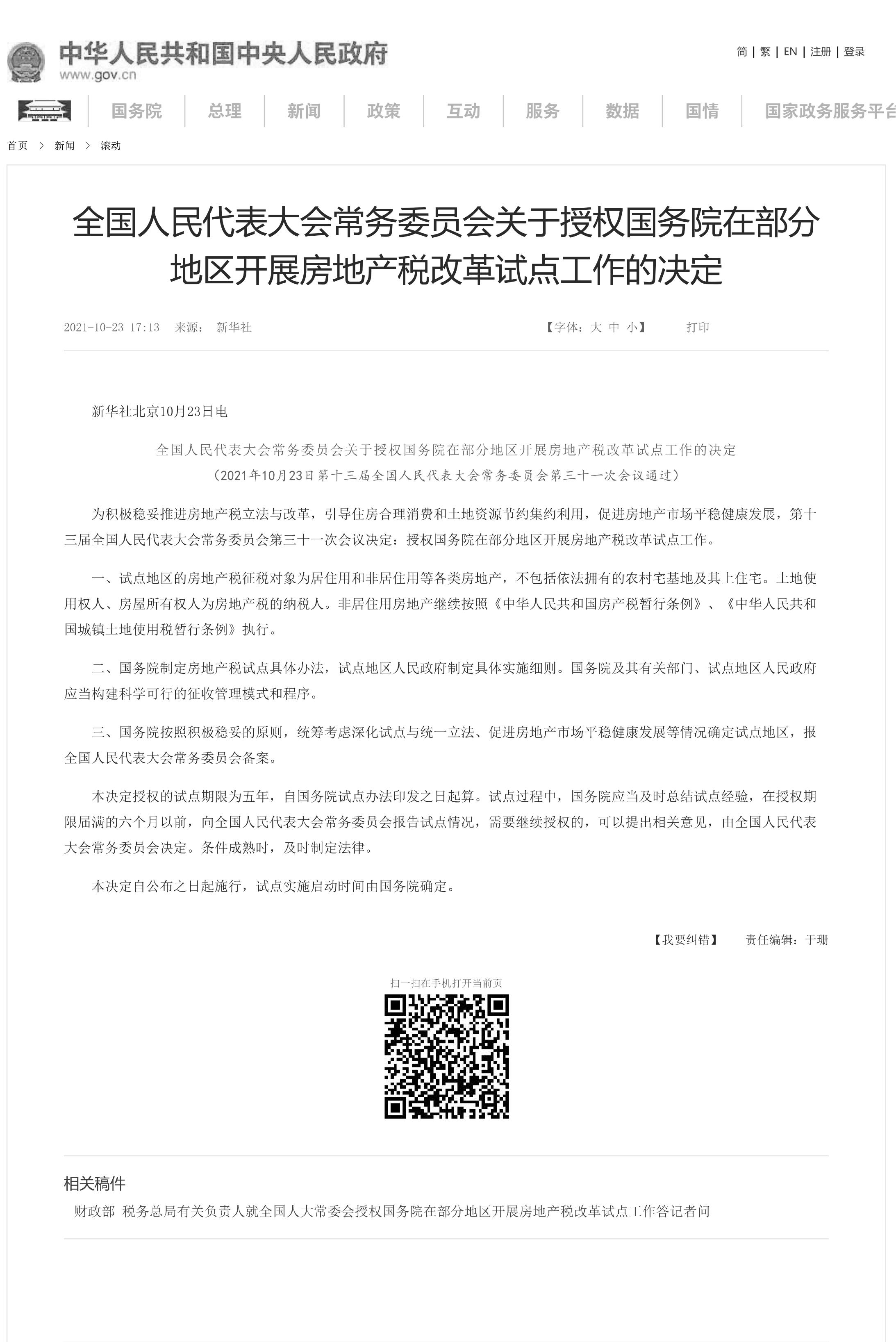
In 2021, Chinese government started real estate tax reform as core policy for the future. Real estate tax will become an important source of finance for China’s local governments in the future.
13
FIG.0.4
The Crisis of Real Estate as the Crisis of the State
Abstract and introduction
Chapter 1
From Welfare to Property: The Rise of Real Estate in Modern China
Looking at the transformation of China’s housing system since 1949, it can be gain insight into how China’s real estate industry developed from its birth to its peak, and then to its collapse in the 2020s.
Chapter 2
The Logic of Power Relation
The analysis of power among different interest groups within the housing system is the core methodology of this thesis. Through the analysis of this core element, we will guide the development of two different pathways of urban imagination in Chapters 3 and 4.
Different Pathway
The Continuation of Old Logic
Chapter 3
The Logic of (Financial) Capitalism
Based on the case of land fragmentation in urban Japan in the 1990s, how could for-profit developers cooperate with residents with new typologies?
The Transcendence of Old Logic
Chapter 4
The Logic of Ownership
Based on the case of planned economy China housing system, how could the forms of living influenced by the definition of ownership?
14
FIG.0.5 The Structure of the Thesis
RESEARCH STRUCTURE
The main structure of this thesis is divided into four chapter (FIG.0.5). The First Chapter will trace China’s housing system since 1949. Two key time points will be emphasised, on the crucial transformations that occurred in 1949 and 1978, thus establishing a understanding of the contextual and background of this thesis.
Chapter Two will continue the discussion in the Introduction, analysing the power relations among the government (public power), developers (capital), and urban residents (citizens) in China’s housing system, which is the core element of this research. With the decline of the real estate market and the emergence of China’s new city middle class, numbering in the hundreds of millions, how should they use their power to achieve a new balance with developer/government in the housing system? Moreover, what new forms of living will this lead to?
Chapter Three represents an empirical pathway for new living forms, examining how the old real estate logic could continue in the new housing system. Based on the Japanese case of land fragmentation and inter-generational spatial division in the 1990s’ real estate crisis, chapter three will show how residents in China’s high-rise, high-density urban fabric could cooperate with for-profit developers based on economic rationality as house prices drop and real estate taxes increase, and what kind of living form this will lead to.
Chapter Four presents an entirely different urban imagination from chapter three, attempting to go beyond the original framework based on real estate. This chapter argues that the collapse of China’s real estate market has proven the inevitable failure of financial capitalism logic in the housing system. Therefore, ownership, as the essential element of using housing as an investment object, will be re-discussed in this chapter. Comparing public housing in China’s planned economy era and today’s commercial housing based on different scales such as living units, community and urban relations, chapter four will observe the different living forms resulting from the different ownership situations. Ultimately, by reconstructing the meaning of ownership, this chapter will provide a new living form based on this point.
Disciplinary Question
How will urban living forms in China change after the real estate market’s collapse, and what is the role played by the architectural discipline in the specific case of China, especially with the changes in the power structure?
Urban Question
How did such a process reshape the generic urban context and xiaoqu (residential compound) developmental template in future China? How did such a process influence the relationship between living and different programs in China’s urban area?
Typological Question
How the transformation of the current residential housing types can influence Chinese citizens’ living forms (family structure, space utilization, program organization...)
Economic Question
How does economic rationality (of government, developer and residents) shape the living forms in contemporary China? How do the living forms change due to the change of different groups’ economic status?
15

CHAPTER 1.
From Welfare to Property: The Rise of Real Estate in Modern China
Previous Page
The text on the board: “Time is money and efficiency is life!” This is a famous propaganda slogan during China’s 1980s, which also marks the market-oriented reform in China.
17
1. Michel Foucault, Power/Knowledge: Selected Interviews and Other Writings, 1972-1977, (New York: Random House USA Inc., 1980).
FROM WELFARE TO PROPERTY THE RISE OF REAL ESTATE IN MODERN CHINA
Chapter one provides a retrospective of China’s housing system before delving into the main discussion of the thesis. This chapter will briefly introduce the transformation of China’s housing system from the establishment of the People’s Republic of China in 1949 to the reform and opening-up era of the 1980s (from planned economy to market economy), and then to today. After that, chapter one will examine how China’s local governments have become dependent on land finance and formed alliances with real estate developers after the 1994 tax-sharing reform, which is also the key reason that China’s real estate industry has entered its heyday and now on the brink of collapse after rapid development for four decades.
This retrospective shows that the transformation of China’s housing system is closely linked to its modernization process after 1949. As Michel Foucault suggested, “Anchorage in space is an economico-political form which needs to be studied in detail” 1 . Housing, as the basic unit of human habitation, especially in urban societies, provides a practical perspective for understanding the complex relationships between different groups in society. What does real estate (housing development) mean in the Chinese context in the pre-reform and reform era? Also, the understanding of the term housing may be strongly different between those who plan and approve (central/regional/municipal governments), those who build (danwei, then private developer), and those who inhabit (governments, workers, users).
Seeing Like a State
The transformation of China’s housing system at two pivotal points1949 and 1978 - was, in a sense, a reflection of the country’s ideological and social logic. Therefore, a retrospective of China’s housing system will help us establish a contextualized thinking framework and prepare for the whole thesis. In particular, chapter one’s review is based on a state-government perspective. Especially given the absolute status of the Chinese Communist Party’s one-party dictatorship since 1949, and most of China’s social transformation has been considered a top-down process lead by the government and the party. What do ownership,
18
tenancy, and usership mean from the perspective of regulation and governing, which could be very different from the perspective of users and inhabitants? According to such a top-down perspective, a more indepth understanding of certain pragmatic, ideological differences and paradigm shifts could be explained.
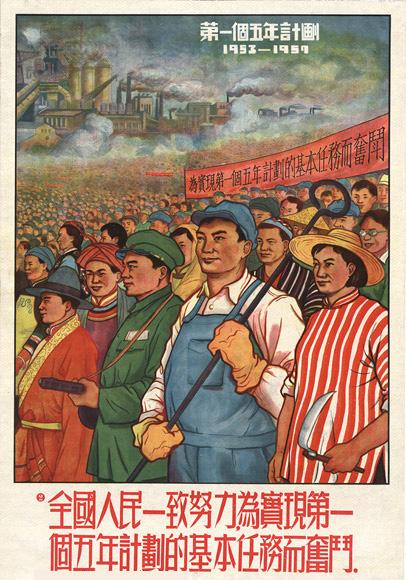
The slogan on the banner reads “Struggle for the realization of the basic tasks of the First Five Year Plan”.
In the poster, it could be clearly seen that the worker takes the lead of everyone, and in the distance is a huge new factory. All these indicated that the Chinese government attached great importance to industrialization at that time
19
FIG.1.1

1949 - 1978, HOUSING AS WELFARE
Public Housing: the Danwei Framework
After the establishment of the People’s Republic of China in 1949, urban land was nationalized due to the basic ideology of the communist party. In such a process, the city government strengthened its control and management of all buildings and land. Under the influence of the Soviet Union, “New China followed the socialist urban theory of the Soviet Union and Eastern Europe to carry out socialist transformation of traditional old cities, transforming ‘deformed consumer cities into productive cities’ and building ‘people’s cities’” 2. At the same time, the development goal of industrialization (FIG.1.1) led to a significant increase of workers, which further resulted in a housing shortage in urban areas. Therefore, the government gradually relied on the framework of danwei 3, the basic organizational structure of the planned economic city, to build public housing for residents, in addition to the nationalization of existing private properties. Public housing established within this framework became urban residents’ main form of living in this period 4 .
2. Yingfang Chen, City Chinese Logic (Chinese Edition: 城市中国的逻辑), (Shanghai: Shanghai SDX Joint Publishing Company, 2012).
3. In planned economic China, “Danwei” (Chinese: 单位) referred to a system of work units or organizations that were responsible for the allocation of resources to urban residents. A Danwei units typically included factories, government offices, schools, hospitals, and other institutions, and were responsible for providing a wide range of services and benefits to their employees. These services included housing, healthcare, education, and social welfare programs, as well as opportunities for career advancement and promotion within the Danwei.
4. In 1978, 94.6% of the urban labor force worked in the danwei. The vast majority live in public housing provided by danwei. Data Source: National Bureau of Statistics and Social Statistics, Statistical Material on Chinese Society, (Beijing: China Statistics Press, 1994).
5. Xueguang Zhou, Stratification Dynamics under State Socialism: The Case of Urban China, 1949-1993, Social Forces, March 1996. 74(3):759-796.
According to the housing welfare system gradually established by the Chinese government in the 1950s, most of the public housing for urban residents was allocated by the state and danwei where residents worked in. In this housing system, the state and danwei were responsible for housing investment and construction, and the allocation of housing adopted the principle of welfare distribution (danwei housing division is generally based on the employee’s contribution to the danwei, technical level, length of service and family population...) and a symbolic low rent strategy. This strategy has resulted in relatively equal living conditions for the vast majority of China’s urban residents base on the strong government control, and in fact, institutionalized the socialist principles of fairness (FIG.1.3) which aimed to improve the social and economic status of the working class 5 .
The Welfare Dilemma: Stagnation of Housebuilding
Under the guidance of communist ideology, the government had complete control over urban housing development during the planned
20
FIG.1.2
Plan for Xi’an University of Communications (a university Danwei), 1960s.

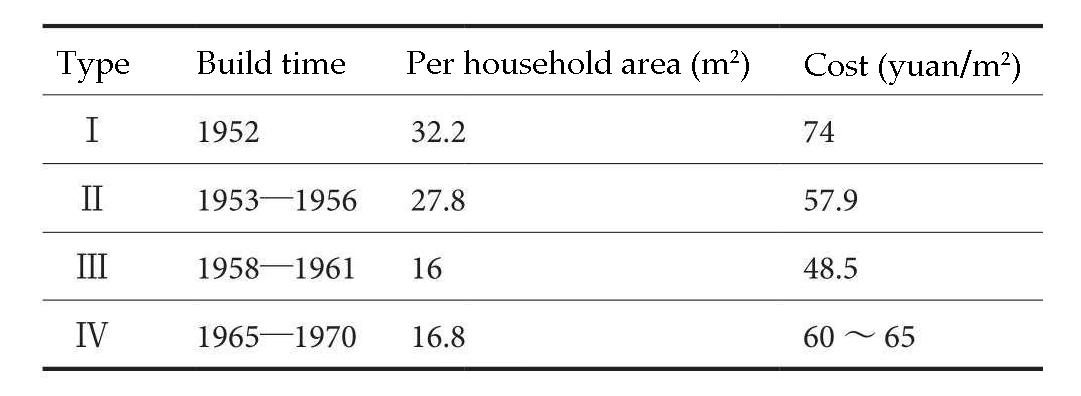
21
FIG.1.3 Crowds waiting for a lottery to decide on housing distribution in a danwei, 1970s.
FIG.1.4 The construction standard of Shanghai’s public housing (1952-1970).
6. “Six Unifications“ means “unified planning, unified investment, unified urban design, unified construction, unified distribution, unified management” (Chinese: 统一规划;统一投资;统一设计; 统一建设;统一分配;统一管理).
7. David Bray, Social Space and Governance in Urban China: The Danwei System from Origins to Reform, (Stanford University Press, 2005).
economy China. Besides the urban land, building materials and skilled labor were also monopolized by the state. Since housing construction is not profitable base on the welfare distribution system, the cost of materials and labor force would be calculated by the government based on the cost of housing construction (the cost of each square meter), and then allocated to construction danwei in the total urban construction plan (FIG.1.4). Furthermore, in the early stages of housing development planning, the Six Unifications 6 principle had to be followed. Under such a logic, housing developers did not aim for profit but were considered a technical department for implementing the national development plan.
During this period, danwei became almost the only way for urban residents to obtain housing. Therefore, housing during this era only served as social welfare, with almost no investment attribute.
However, behind the beautiful vision of housing as a socialist principle of fairness and the welfare during the planned economy China, there was a serious shortage of housing construction and living space for urban residents during the whole period. Taking Shanghai’s housing construction as example (FIG.1.5), during the planned economy period (1949-1978), housing construction was mainly dominated by government-led public housing. However, except two periods of concentrated construction campaigns initiated by the central government in 1952-1953 and 1956-1958, housing development remained stagnant for a long time. In 1949, the average housing area for urban residents in Shanghai was 4.5 square meters, but by 1978, this number had dropped to 3.6 square meters. It is shocking that the long-term economic development movement even led to a regression in living space 7 of the urban area due to inadequate housing construction.
Such a long-standing housing shortage in planned economic China can be understood from three perspectives. First, in planned economic China, the constitution prohibited land expropriation, rental, and sale. Therefore, it is impossible for urban residents to obtain housing in the housing market, while danwei becomes almost the only way to get living space in the city. Secondly, based on the allocation of public housing, government and danwei invested money, land, and labor to supply and maintain non-profit housing for all urban residents. The state
22
relied entirely on its own funds to maintain this system, which not only made it difficult to guarantee the quantity and quality of housing but also resulted in unsustainable finances. Especially Chinese government kept facing the continued stagnation of economic development under the planned economy system from 1949 to the 1980s. Thirdly, the urban population grew rapidly in the early years of reform and opening up (the late 1970s) era. At the same time, the priority of developing industry and infrastructure for reform and opening up resulted in long-term financial shortages for the housing system, which further led to the inability of the government to provide public housing through the old welfare model.
Due to fiscal unsustainability, the welfare-oriented housing policy was gradually abandoned after the reform and opening up. Through the reform of the housing system since the 1980s, Chinese government collaborated with profit-oriented developers and private capital, and has achieved unprecedented advancement in the development of Chinese housing and urbanization speed.
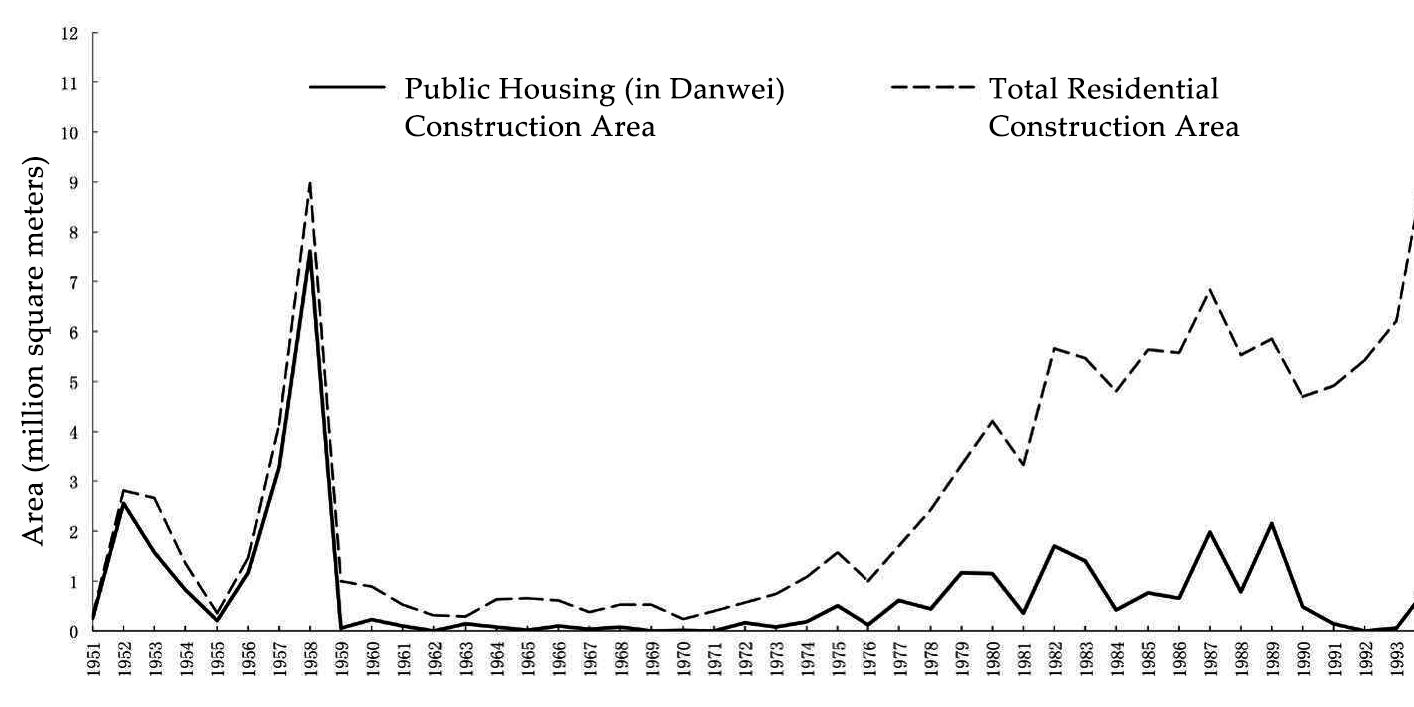
23 Planned Economy Era Market Economy Era
FIG.1.5
Construction of public housing (in danwei) and residential buildings in Shanghai over the years (1951-1995).

FIG.1.6
Since the reform and opening up in 1980s, Shenzhen has grown by an average of 200,000 to 300,000 residents a year. Today, Shenzhen’s urban district has a population of more than 5 million.
The different urban context of Shenzhen could be seen due to its super rapid urbanization in different periods.

8. The Up to the Mountains and Down to the Countryside movement (Chinese: 知识青年上山下乡运动)was a social and political campaign launched in China from 1968 to 1976.
The campaign aimed to send urban youth, especially high school and college students, to rural areas to work and learn from peasants and soldiers. In economic terms, the aim of the movement is to alleviate the problem of cities failing to provide enough jobs for youth.
9. Such a neoliberal tactic in the housing system could also be seen in mant other countries at the same time.
For example, in the 1980s, the UK implemented a series of Neo-liberalism policies, including the privatization of public housing (Right to Buy). These policies aimed to reduce government spending, relieve the government burden, and promote economic growth through increased market efficiency.
1978 - NOW, HOUSING AS PROPERTY
In this section, 1978, the beginning year of reform and opening up in China, was presented as an essential milestone of the housing system reform. However, it is necessary to figure out that, as a system directly related to hundreds of millions of residents’ crucial human basic needs, the housing system’s institutional change could not be completed in very short time. In fact, the market-oriented reform of China’s housing system should be seen as a gradual and ongoing process, adjusted according to the needs of society and the state. Therefore, the year 1978 should be regarded as the beginning of the Chinese state and government’s reform in spirit and ideology, which involved all aspects and gradually affected and changed China’s housing system. Over 40 years of continuous change, the housing system has gradually taken on its current form. This section attempted to provide a brief overview, demonstrating how China’s housing has evolved from a state-provided social welfare during the planned economy period to private property and investment objects in the market economy period, and what is the realistic logic behind such a process.
Housing System Reform and Neoliberal Magic
In the late 1970s, following the end of the Up to the Mountains and Down to the Countryside movement 8, a large number of educated youth returned from rural areas to cities. The shortage of urban living space led to a surge in demand for housing. However, long-term financial shortages made the city government cannot provide new public housing for urban residents. In addition, adopting the reform and opening up required the government to allocate limited funds to infrastructure development. The government had to rely on private capital for urban housing construction in such a context.
Nevertheless, during the planned economy era, the Chinese government (the only supplier) had long provided almost free housing to urban residents. Under such a system, China’s housing prices had long been maintained at extremely low levels (or no market for housing transactions), even lower than the cost of housing construction. As a result, private capital lacked the motive to enter the housing indus-
26
try for investment and construction purposes. To address this fundamental problem, the Chinese government adopted a neoliberal tactic to encourage private capital to invest in housing construction 9. Until the 1980s, the vast majority of housing in Chinese cities was non-profit public housing built by the government and danwei at a loss. In this situation, even if private capital invested in new housing construction, it was difficult to sell them due to the extremely low average housing prices. The strategy adopted by the Chinese government was to sell the ownership of non-profit public housing to individuals, allowing non-profit housing to flow into the for-profit housing market, which will gradually drive up market housing prices to above cost. With the rise in housing prices, private capital was encouraged to invest in housing construction, leading to an increase in for-profit housing. As a result, whether old or new housing, more and more housing was held by individuals rather than the state, non-profit housing was converted into for-profit housing that could be freely bought and sold. The market share of for-profit housing gradually expanded, driving up housing prices. When market prices became generally higher than cost, private for-profit builders took over the supply of housing.
Through this reform, the state transformed from the only housing supplier to a regulator outside the market, and rid itself of the financial unsustainability of housing construction, while also raising funds for urban development by selling land. By mobilizing the power of the market, urban housing supply became more sufficient and efficient (FIG.1.5 and FIG 1.9). After 1978, private capital poured into China’s housing system, significantly increasing the speed of urban housing construction. Such a market-oriented reform greatly improving China’s urbanization process, and enabling China to establish modern cities in a short period of time.


The
housing
in the 1970s in Shanghai. In the 1980s and 1990s, a lot of this public housing was privatised, mostly sold to its occupants (the employees of danwei) at low prices.
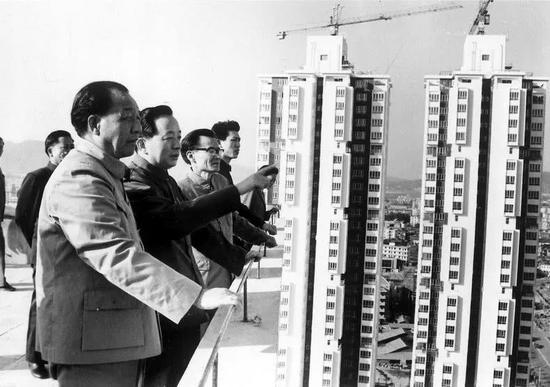
As can be seen from the data, take Shanghai for example, private capital investment in housing construction increased rapidly after 1977.
27
FIG.1.9
Proportion of Investment by different groups in urban housing construction in Shanghai (1950-1995).
FIG.1.8
Shenzhen’s first batch of commercial housing built by private developer, 1983.
FIG.1.7
public
built

TAX - SHARING REFORM IN 1994 AND THE BORN OF LAND FINANCE
In this chapter, the thesis has expounded on how China’s urban housing system has utilised the power of private capital to address the urban housing shortage after the 1980s. This neoliberal housing privatisation policy can be seen as a projection of the country’s overall policies and ideological transformations during the reform and opening-up era. However, overall, housing privatisation remains a technical strategy within the housing system, aimed solely at addressing the urban housing shortage.
Nevertheless, this still cannot explain how China’s real estate industry has been able to continuously expand into the abnormal state it is in today over the past four decades. Why has land finance become a crucial source of finance for China’s (local) governments, leading to an interest alliance between the government and private developers? Moreover, what ultimately led to the collapse of China’s housing market today? To answer these questions, linking them with the change in China’s financial system is necessary because all government actions are inextricably linked to finance and taxation. Without a solid financial foundation, administration and maintenance of government are all castles in the air 10 .
Tax-Sharing Reform and Local Financial Shortage
China’s financial system has undergone a complex reform process, particularly during the reform and opening up. Although this thesis does not intend to trace the complete reform process of China’s financial system since 1949, it is still necessary to highlight the far-reaching impact of the 1994 Tax-Sharing Reform 11 on China’s central/local governments and housing system. In a sense, the current dependence of China’s local governments on land finance and the collapse of China’s real estate market can be traced back to this financial system reform.
10. Xiaohuan Lan, Involved in the Matter: China’s Government and Economic Development (Chinese: 置身事内:中国 政府与经济发展), (Shanghai: Shanghai People’s Publishing House, 2021).
11. “the 1994 Tax-Sharing Reform” (Chinese: 1994年分税制改革).
In short, the Tax-Sharing Reform initiated by the Chinese central government in 1994 was a financial policy which aimed to centralise taxes to the central government. After the reform, the central government regained much financial power from local governments, strengthening
28
FIG.1.10
Real estate advertising in Shanghai in 1999. The text in the middle: “Recreating Cannes life in Shanghai.” The advertisement describes how to achieve “French style living” in this community.
its financial revenue and macroeconomic control ability (FIG.1.11)
12 . However, on the other hand, the reform did not change the task of local governments since the reform and opening-up period, which was to take economic development as the central task 13. In practice, the responsibilities of local governments should match their financial capacity. Especially after the reform and opening up, Chinese local governments have undertaken the heavy responsibility of economic development. The reduce of available financial resources, forcing local governments to seek new sources of finance.
The Seed of Land Finance
During the Tax-Sharing Reform in 1994, the decision-making power and revenue from the transfer of state-owned land were left to local governments, as this revenue was minimal then. Two significant events in 1998 led to the true value of urban land being revealed and gradually becoming the primary source of local government revenue.
First, the completely stop of housing allocation by danwei system end the welfare housing system, forcing city residents to access housing only through the housing market. From 1997 to 2002, the annual average growth rate of newly started urban residential construction areas in China was 26%, which increased nearly four times in five years. Commercial residential buildings and xiaoqu (residential compound) gradually became the primary living forms in Chinese cities. Second, the Land Administration Law of the People’s Republic of China 14 came into effect, establishing the monopoly power of urban governments over land development (while it is difficult to use rural land as construction land in law, the land of urban area becomes even more valuable) 15. Since then, urban land prices have risen year after year, becoming the main source of local government revenue. Housing in China was finally officially defined as an investment object/property rather than social welfare.
12. Feizhou Zhou and Mingzhi Tan, the Relationship of Central and Local Government in Contemporary China (Chinese: 当代中国的中央地方关系), (China Social Sciences Press, 2014).
13. “Take economic development as the central task” is guideline of Chinese government during the period of reform and opening up (Chinese: 以经济建设为 中心).
14. Chinese: 中华人民共和国土地管理法.
15. Xiaohuan Lan, Involved in the Matter: China’s Government and Economic Development (Chinese: 置身事内:中国 政府与经济发展), (Shanghai: Shanghai People’s Publishing House, 2021).
29
the 1994 Tax-Sharing Reform
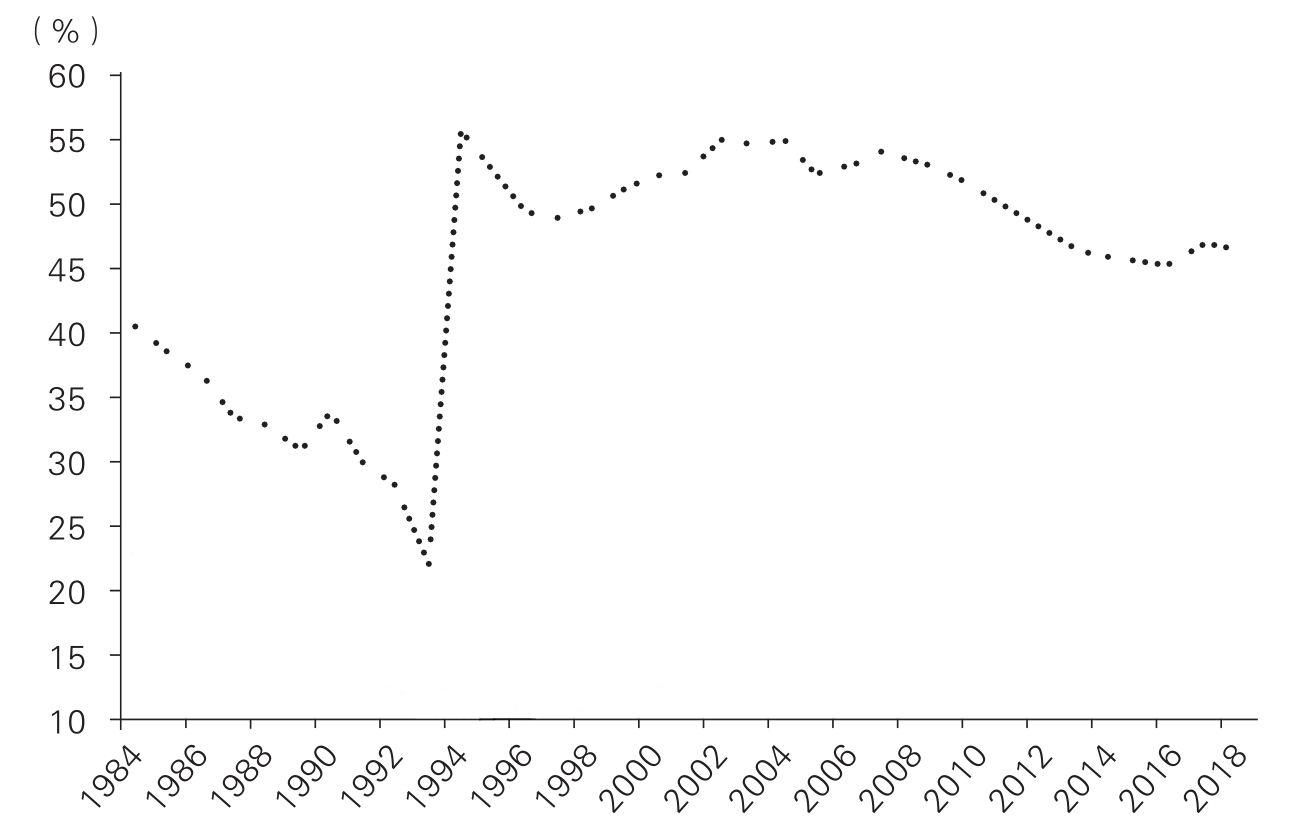
FIG.1.11.1 and FIG.1.11.2
The financial capacity of the Chinese central government has been greatly enhanced since the reform of the tax-sharing system in 1994. On the contrary, China’s local government’s fiscal revenue has fallen sharply.
30
Central government budget revenue as a share of total revenue
the 1994 Tax-Sharing Reform

Local government budget revenue as a share of total revenue
Proportion of local budget expenditure to total expenditure
31

The state provides and maintains housing for most citizens at a loss over the long term as a typical symbol of "socialism China".
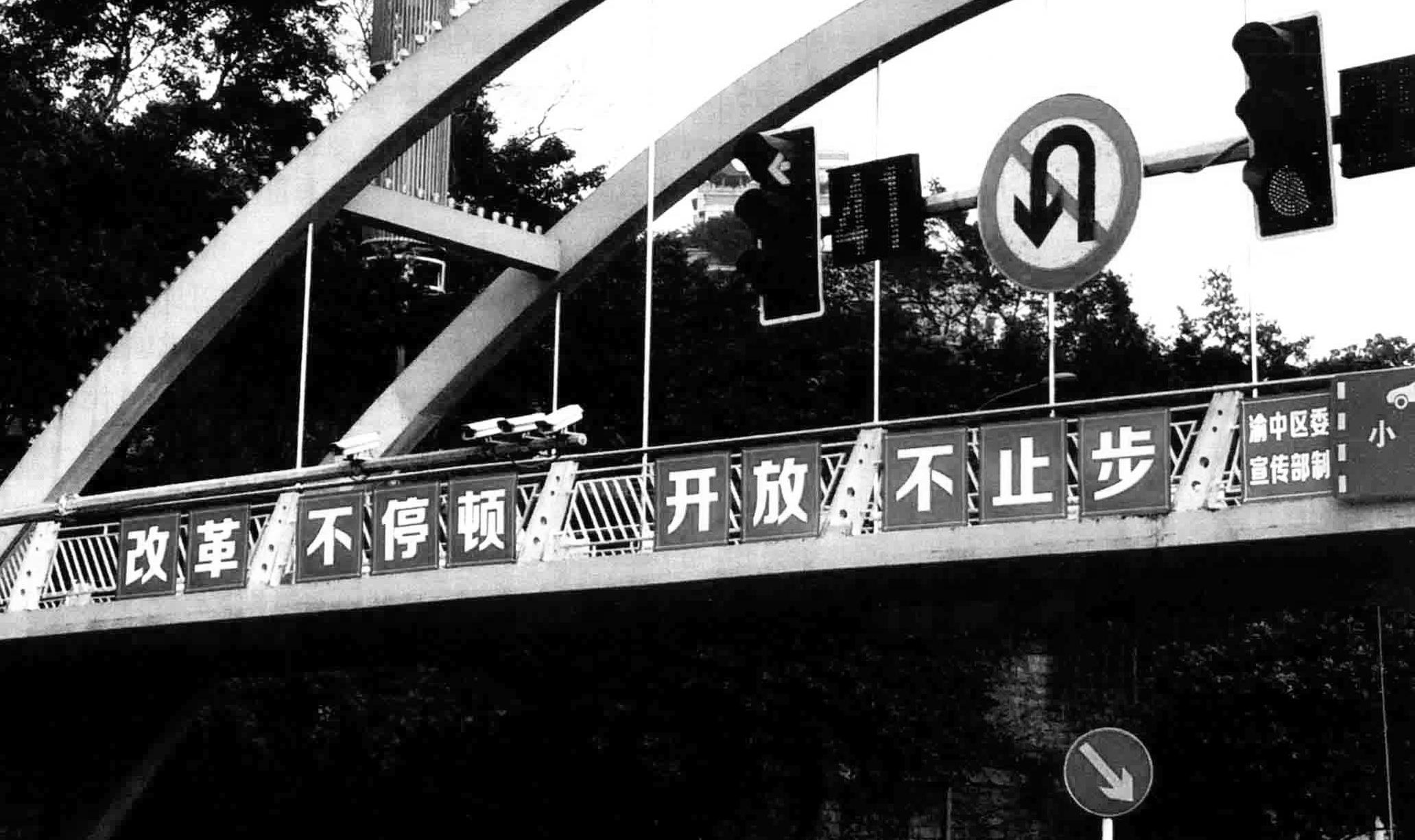
The government sells housing to individuals to raise the market price of housing. When market prices generally increase, for-profit real estate developers took over the housing supply.

For-profit developers have almost become the only housing provider in China. At the same time, housing prices have reached the highest point in Chinese history.
HOUSING AS WELFARE
HOUSING AS PROPERTY
HOUSING AS WELFARE
HOUSING AS PROPERTY
HOUSING AS WELFARE
HOUSING AS PROPERTY
32
1949-1980s Housing as Welfare
1980s The Reform of Housing System
1980s - 2020s Housing as Property (Investment Object)
the 1994 Tax-Sharing Reform
FIG.1.12 Time line of housing system change in China
2020s The Collapse of Real Estate in China
CONCLUSION
To conclude, the first chapter provides a comprehensive historical background, stating how housing has evolved from being a social welfare in China’s planned economy era (1949-1978) to an investment object in China’s market economy era (1978-now).
During the planned economy era, the state completely controlled China’s housing system in accordance with the fair distribution principle of the Communist Party and socialist country and it was integrated with the city’s texture based on the basic urban unit in that time. However, with the advancement of reform and opening up in the 1980s, the state urgently needed the power of private capital to provide more housing for the increasing urban population. Through the public housing privatization policy, housing prices in Chinese cities have continued to soar, and an increasing number of profit-driven real estate developers have begun constructing urban housing, ultimately taking over the responsibility of urban housing supply from the government.
After the Chinese housing system reform, the value of urban land has also been continuously exploited. Especially after the tax-sharing reform in 1994, Chinese local governments urgently needed new sources of finance to fill the shortfall. In such a context, land gradually became the money printing machine of Chinese local governments, and land finance became the most important strategy to maintain the stable fiscal revenue.
In the next chapter, the thesis will elaborate on land finance and the operating mechanism of the interest alliance between the government and real estate developers. How has this opaque and unfair alliance maintained in China for over forty years after the reform and opening up? Why has this alliance moved towards the edge of collapse in the 2020s?
33
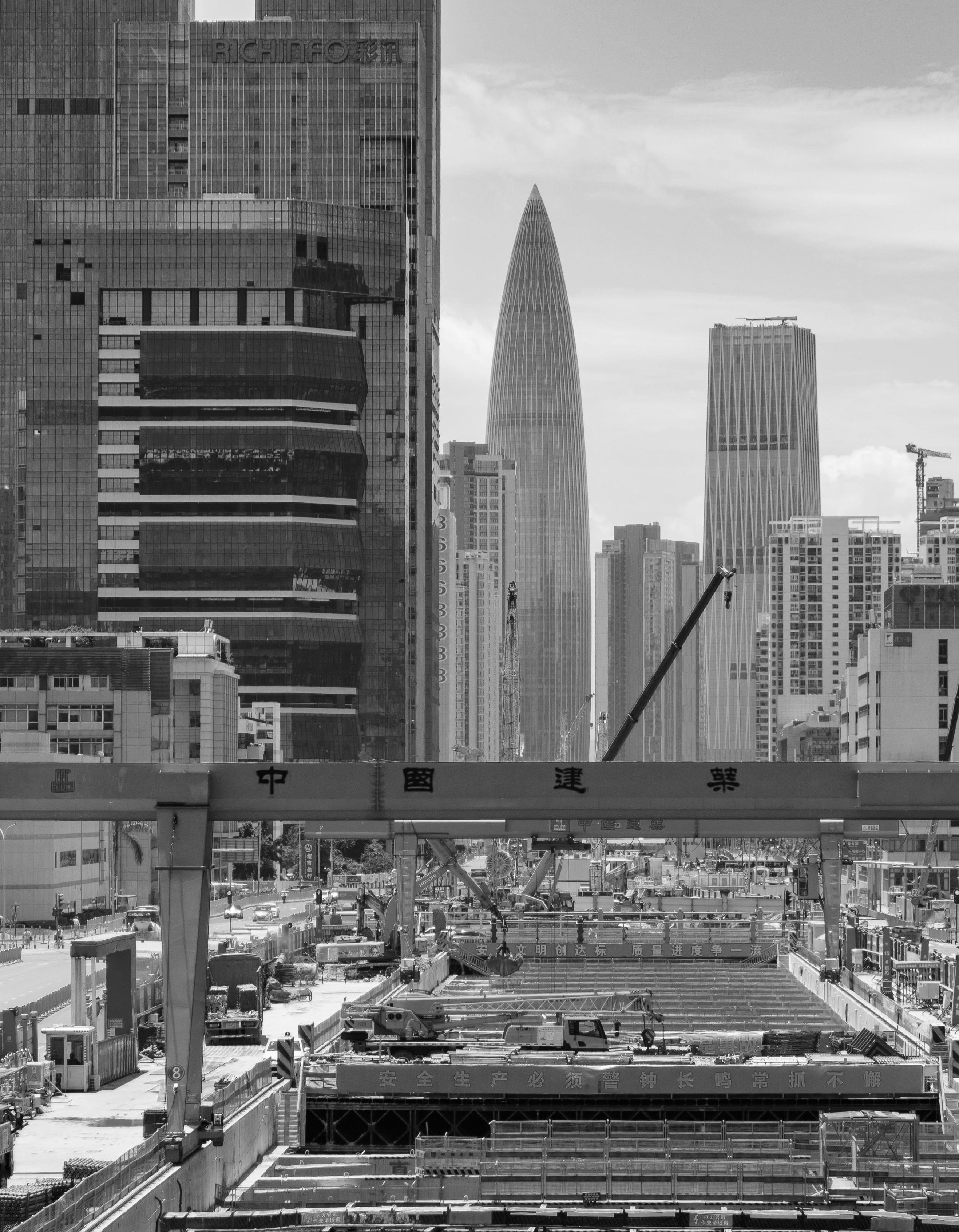
CHAPTER 2.
The Logic of Power Relation
Previous Page
The underground is under construction in downtown Shanghai, China. In China’s rapid modernization, infrastructure construction in, urbanization and land finance are inextricably linked with each other.
35
AND THE LOGIC OF POWER RELATION BEHINDE IT


During the planned economy era, most urban housing in China was owned by the state. Especially during the Great Cultural Revolution period from 1966 to 1976, the state further centralised urban housing distribution, and private housing was almost all confiscated or nationalised. At this stage, housing was regarded as social welfare provided by the state and danwei to reflect the superiority of the socialist system and to provide socialist and collectivist education to urban residents. However, with the demand for reform and opening up in the 1980s, the housing system underwent market-oriented reforms. Through Privatizing public housing and encouraging private investment, for-profit developers quickly took over the task of providing housing for Chinese urban residents from the government. Today, more than 90% of the housing in Chinese cities is provided by these developers.
1. Xiaoqu (Chinese: 小区), also called residential compound, is a Chinese word that refers to the most common type of residential community or neighborhood in contemporary China. The typical features of xiaoqu may include: enclosed form, shared green space and high-rise, high-density buildings (apartments).
2. Matthew Soules, Icebergs, Zombies, and the Ultra Thin: Architecture and Capitalism in the Twenty-First Century, (New York: Princeton Architectural Press, 2021).
With the establishment of the dominant position of real estate developers, Chinese people’s living form has also changed. Most urban residents have moved out of public housing built during the planned economy era and moved into xiaoqu 1 with their own private space and no shared spaces. In fact, the typology of xiaoqu itself is the reflection of the logic of maximising development profits of developers and owners. All spaces in this enclosed living form have clear ownership, and every square meter of space is clearly priced. Shared kitchens/bathrooms and toilets in the design of old public housing have been removed, and replaced by infrastructure exclusive to each living unit (FIG.2.2). As there is no direct profit, open space in the community have also been minimised to the greatest extent (FIG.2.3), which become non-functional spaces and serve only as landscapes. Therefore, the texture of China’s urban housing areas today is the best manifestation of financial capitalism, whoes primary goal is to maximise and efficiently obtain the economic value of every inch of land 2 .
Structure of the Chapter
This chapter will address three questions. Firstly, the thesis will continue the discussion of the last chapter, explain the significance of land finance to local governments in China after the tax-sharing reform in
36
( FINANCE ) CAPITALIST URBANIZATION
FIG.2.3
The open space in xiaoqu, Shanghai, which is basically non-functional.
FIG.2.1
A typical housing cluster built by real estate developer, Guizhou. Such highrise, high-density apartment has already become the main living forms in city China today.
1994. The importance of land finance is also a prerequisite for the government-developer interest alliance in China’s current housing system. This section will also answer a crucial question, why is there a strong incentive for the Chinese government to maintain this system and such an urban development mode until it is on the verge of collapse?
Secondly, a more realistic question will be asked. In modern society, governments hold vast power and resources, but their actions are constrained by institutional, legal, and social oversight to ensure their behaviour aligns with ethical and just standards 3. In the context of China, even though the Chinese Communist Party government is widely perceived as a one-party authoritarian “big government,” its actions are still subject to the moral rationality of public power and the socialist ideology of the state. Unjust policies (policies with no legitimacy) could bring moral pressure on the government and even trigger political crises. This section will explain how the Chinese government attempts to demonstrate moral rationality (legitimacy) in dominating this unfair economic development pattern with the real estate developer, especially in the context that China is a socialist country and the Chinese Communist Party is seen as always “representing the interests of the vast majority of the people” 4. The legitimacy shaped by the government makes


3. Pual Hirst, Space and Power: Politics, War and Architecture, (Cambridge: Polity Press, 2005).
4. This sentence comes from the report delivered by Chinese President Xi Jinping at the 19th National Congress of the Communist Party of China in 2017. (Original sentence in Chinese: 中国共产党 始终代表最广大人民根本利益,与人民休戚与 共、生死相依,没有任何自己特殊的利益,从 来不代表任何利益集团、任何权势团体、任何 特权阶层的利益。)
FIG.2.2
Some typical floorplan of the xiaoqu housing typology. It could be clearly seen that, except the space for circulation, all the space in them usually shows clear ownership.
37 Circulation A3 1:200 A3 1:200 A3 1:200 Two Units Three Units Four Units Circulation Circulation Program Program Program XIAOQU (residential compound) Circulation Living units
this (real-estate led) development pattern relatively stable in Chinese society through the concession of various classes, even if the distribution of benefits is uneven.
Thirdly, the thesis will explore why this urban development model, based on financial capitalism and profit-driven logic, will inevitably move from its peak to collapse as it develops. Why is the crisis of the real estate collapse unavoidable in China or in other capitalist countries (FIG.2.4)? Futhermore, with the failure of the current housing system, the emerging middle class in Chinese cities, who have rapidly accumulated wealth during the urbanisation trend of the past decades, will play what role as the main body of real estate tax collection in the new housing system? What kind of living form will this lead to?
All these questions answered will bring the thesis to chapter three and four, which provide two pathways of new living forms imagination, especially with different ways of cooperation and compromise between the changing power balance between the government, the real estate developer and the citizen.
38

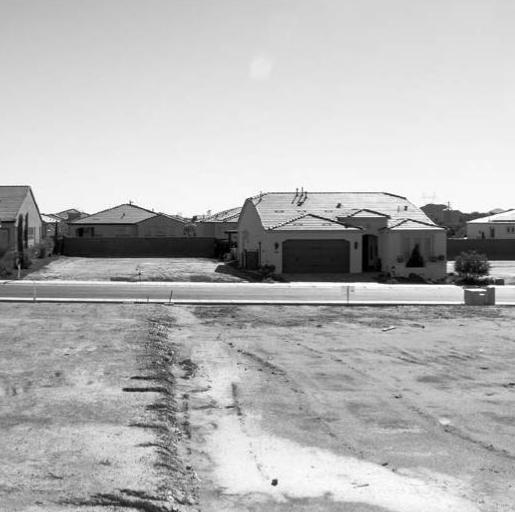


FIG.2.4
In the past few decades, the failure of profit-driven urban development models has been widely observed around the world. Despite the differences in political and cultural contexts, the failure of financial capitalism logic in the housing system seems to be no different in countries.
1. The two-thirds-incomplete Residencial Francisco Hernando, 2014, in Seseña, Toledo, Castile-La Mancha, Spain.
3. Complete but unoccupied homes (a ghost estate), 2013, in Drumshanbo, County Leitrim, Ireland.
2. Housing subdivision partially incomplete since the 2007– 8 financial crisis, 2015, metropolitan Phoenix, Arizona, USA.
4. Residential development that has been abandoned due to funding lack, 2012, Kangbashi District, Ordos, Inner Mongolia, China.
39
1 3 4 2
LAND FINANCE AND THE ALLIANCE

FIG.2.5
The satirical cartoon aims to the Chinese government’s land finance policies, portraying a surreal scene where government and real estate developers transform land into a money printing machine, conjuring up boundless wealth from the urban residents.

FIG.2.6
5. The numbers in this paragraph are from the “China Tax Yearbook” (Chinese: 中国税务年鉴) of previous years.
The field of finance and taxation is inherently complex and professional, and the focus of this section is not on finance and taxation itself, but rather on understanding Chinese government’s behavior (in the housing system) from the perspective of finance and taxation. Within the scope of this thesis, the question is why the Chinese government needs to establish a stable alliance with developers to maintain the policy of land finance. In this process, the behavior of the government and developers has gradually shaped the current housing system in China.
Land Finance and the “Endless Wealth”
The widely criticized “land finance” (FIG.2.5) of local governments in China includes not only enormous revenues from land use right transfers (land selling) (FIG.2.6), but also various tax revenues related to land use and development. These taxes are divided into two categories. One is directly related to land and mainly includes value-added land tax, urban land use tax, farmland occupation tax, and deed tax, with 100% of the revenue belonging to local governments. In 2018, the total revenue from these taxes was 1.5081 trillion yuan, accounting for 15% of local government revenue. The other category of taxes is related to real estate development and construction enterprises, mainly including value-added and corporate income taxes. In 2018, the portion of these two taxes belonging to local governments accounted for 9% of the revenue in the local public budget. If these taxes, together with land selling revenue, are considered the total revenue of “land finance,” the revenue in 2018 was equivalent to 89% of the revenue in the local public budget, which is a shocking number 5 .
With such data support, it could be said that “land sales” are the most critical source of financial revenue for local governments in China today. “Land finance” is an indispensable financing method to maintain the massive amount of funds invested by the government in infrastructure construction and urbanization every year since the reform and opening up. By land selling, primitive capital based on land credit can be accumulated, promoting rapid industrialization and urbanization. China’s unique state-owned urban land system has created con-
40
The proportion of revenue from the transfer of state-owned land in local public budget revenue.
ditions for the government to monopolize the land market 6, turning this hidden wealth into a huge capital for launching urbanization. It’s also important to note that, equating “land sales” with “land finance” is one-sided. Local governments not only generate revenue through “land sales,” but also benefit from a range of economic activities attracted by land development, including tax revenue from emerging businesses, the growth of related industries in development activities (such as building materials and construction), and a large number of new employment opportunities (FIG.2.7). However, the magic of land finance also makes the local government’s finances highly dependent on land values, real estate, and housing prices. Housing prices are connected to land prices, land prices are connected to finance, and finance is connected to infrastructure investment. Therefore, a complex relationship of “one prosperity begets all, one decline begets all” has been formed among economic growth, local finance, banks, and real estate 7
The Opaque Alliance and the Silence of the Civic Class
Therefore, it is easy to understand that, land finance not only plays an irreplaceable role in the financial revenue of China local government, but also becomes the magic wand to leverage Chian’s urbanization and economic development. Such a strong connection between all these factors makes the local governments in China must find ways to maintain this development model. On the one hand, keep-rising housing prices have brought substantial profits to real estate developers. On the other hand, continuous land development has provided sufficient financial sources for local governments and has become the engine of regional economic growth.
With such an opaque alliance between local governments (public power) and real estate developers (capital), the citizen class has become the the weak party in the process of urbanisation. In fact, in such a process, a series of severe corruption problems have occurred due to the alliance between the government official and real estate developer, which has seriously affected the credibility of the Chinese government. These corrupt practices include government officials using their authority to
6. During the planned economy era from 1949 to 1978, the Chinese government’s long-standing nationalization strategy accumulated a significant amount of urban land resources. In addition, according to Article 13 of the Chinese Constitution, the state may, in accordance with the law, requisition or expropriate private property of citizens (in the context of this thesis, referring to houses and urban land resources) for public purposes and provide compensation (Original sentence in Chinese: 中国 宪法第十三条: 公民的合法的私有财产不受 侵犯。国家依照法律规定保护公民的私有财产 权和继承权。国家为了公共利益的需要,可以 依照法律规定对公民的私有财产实行征收或者 征用并给予补偿。), which makes it is legal for the government to obtain urban land from the local residents.
7. Xiaohuan Lan, Involved in the Matter: China’s Government and Economic Development (Chinese: 置身事内:中国 政府与经济发展), (Shanghai: Shanghai People’s Publishing House, 2021).
41
8. The relevant papers can be found in: Yingfang Chen, City Chinese Logic (Chinese Edition: 城市中国的逻辑); David Harvey, Social Justice, Postmodernism and the City; Jane Jacobs, The Death and Life of Great American Cities, et al.
The criticism of this modernist and spatial profit-oriented urban development model has been an important topic of discussion since the rise of the post-urban era theory in the 1970s. Corruption in this development model and its destruction of the urban context have made it the target of widespread doubt and criticism in the western country.
intervene in bank loans and provide financing convenience for private developers; government officials assisting (or tacitly approving) private developers in carrying out forced demolitions to ensure the smooth implementation of development plans (FIG.2.8); and government officials’ relatives using their advantages to obtain land resources for development, and so on. Some corruption cases in urban development that have been investigated in recent years have involved hundreds of millions yuan. However, it needs to be pointed out that, such a corruption between the government and developers caused by this space-benefit-led development model has been a common problem worldwide, which is not not unique to China. There already have been thoughtful discussions on this in a series of theories 8 .
Rather than discuss the details of corruption, the thesis will point to a more core question in the next section. The land finance policy has brought so many problems about corruption and social equity, and aroused widespread controversy in Chinese society, which not only come from the citizens but also within the government and the party. Why does the Chinese government still show great enthusiasm for maintaining such a system till toady? As a representative of public credibility, how does the Chinese government solve the political pressure from citizens, farmers and within the government based on the requirement of social justice and moral rationality?
42
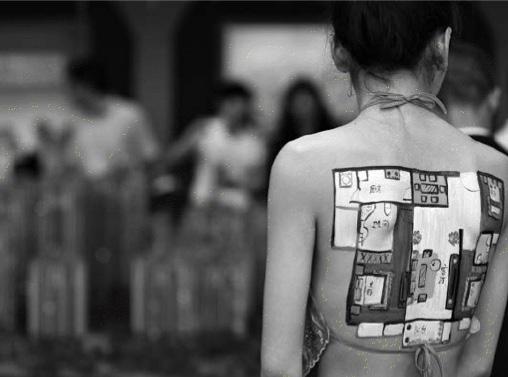
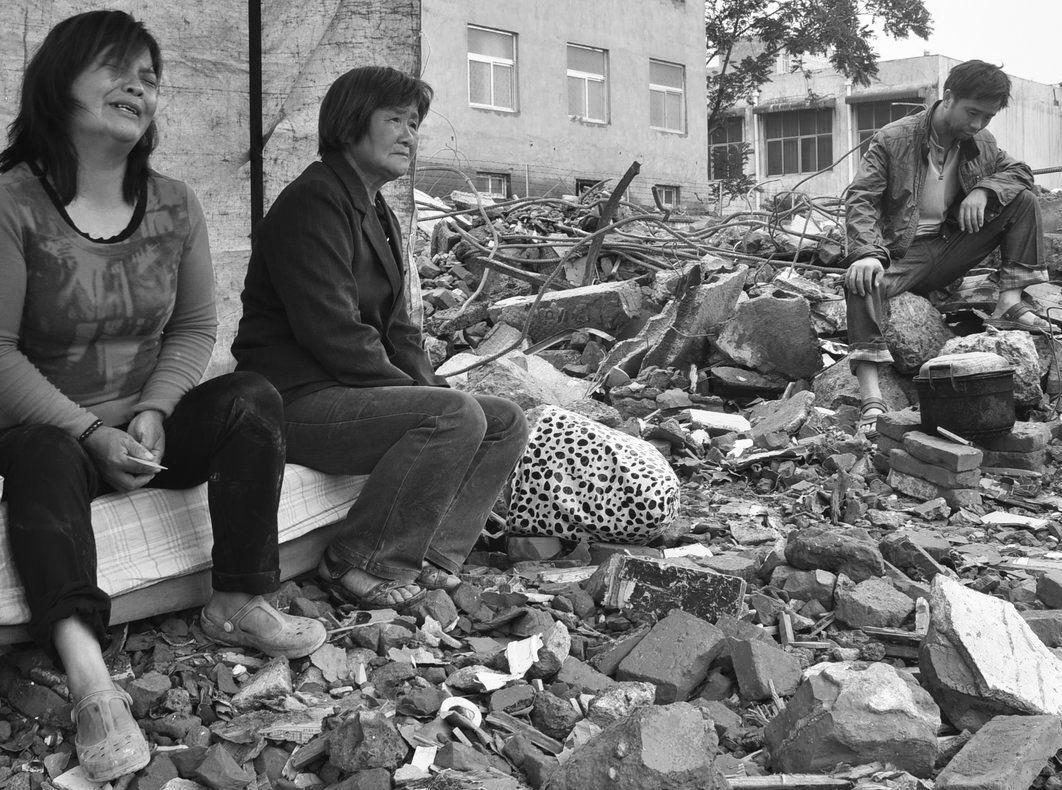
43
FIG.2.7
A residential floorplan painted on the back of a model as part of a marketing strategy, at 55th Housing Fair, Nantong, China. The real estate boom has spawned all sorts of crazy activity in related industries.
FIG.2.8
City outskirts’s farmers sit on the ruins of their homes after the forced demolition by the real estate developer.
URBAN
DEVELOPMENT
AND THE LEGITIMACY OF GOVERNMENT
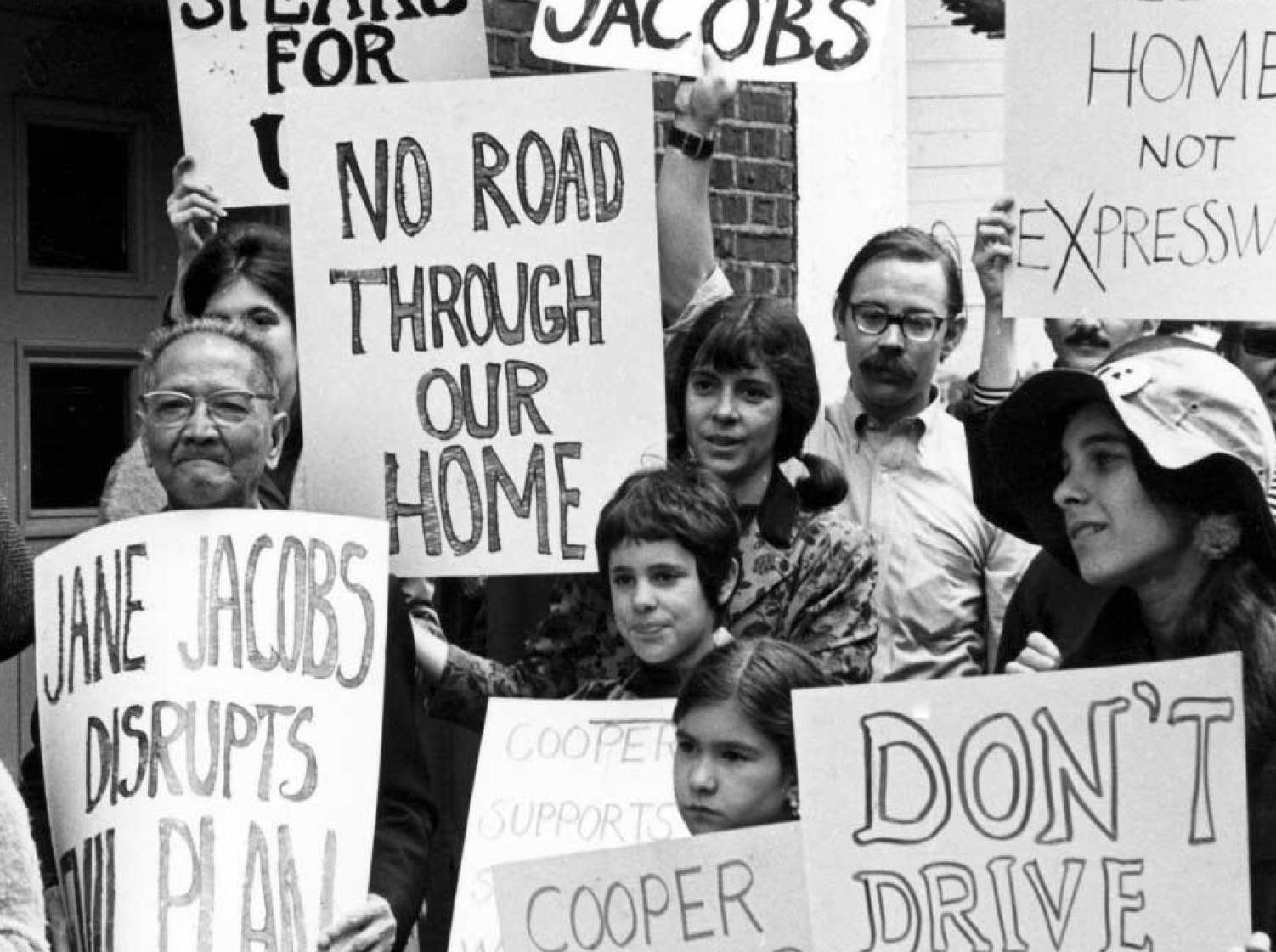
FIG.2.9
After the 1970s, there were protests in the United States and around the world against this spatial profit-oriented model of urban development.
9. China’s cities are widely believed to have a surplus of housing due to irrational development. In 2023, China’s Ministry of Housing and Urban-Rural Development officially says now there are “30 million buildings in urban areas across China.”
10. According to a study conducted by the Beike Research Institute in 2022, the vacancy rate of urban residential housing in 28 large and medium-sized cities across China is generally higher than 12%. Generally speaking, the vacancy rate exceeding 10% indicates an oversupply of housing. Nevertheless, the development pace of urban housing in China has been continuously increasing until 2022.
11. Max Weber (1864-1920) was a German sociologist, historian, philosopher, economist, and political scientist. He is one of the founding figures of modern social science and made significant contributions to sociology, history, economics, cultural studies, and religious studies. Weber’s typology of authority and his critique of bureaucracy have been important contributions to the field of sociology. They have provided a framework for analyzing the distribution of power and authority in organizations, facilitated comparative analysis of different types of organizations, and stimulated critical examination of the role of bureaucracy in modern society.
The theroy of Three models of Organizational Authoritarianism used in this section mainly come for his book Economy and Society: An Outline of Interpretive Sociology, (University of California Press, 1978).
After the 1980s, urban development movement led by private real estate developers provided a significant amount of housing for Chinese cities. However, even though the urban housing shortage has already been resolved in China 9, it can still be observed that this urban development model keeps running, and its pace is accelerating 10. In this context, the meaning of this profit-driven development strategy has transcended its original purpose of solving the problem within the housing system technically, but has become a projection of the state’s policy and economic development model. While at the same time, in the post-urban era, Western and East Asian developed countries, considered the learning objects for China’s modernization, have started widely questioning and criticizing this modernist-style urban development model that prioritizes economic interests. The new urban theory proposed by Henri Lefebvre, David Harvey, Edward Soja and other urban planners has profoundly revealed the unfair nature of this development model and the damage it inflicts on urban residents’ lives (FIG.2.9).
Therefore, this section tries to answer why the Chinese government has insisted on this high-speed economic development model with serious potential problems. Under such a development model, how could the tendency to pursue the government’s self-interests for economic efficiency and the ability to sacrifice other relevant interest groups (citizens and farmers) be reconciled with government’s represented public power (the government’s moral rationality and justice pressure)?
Max Weber’s Three Models of Organizational Authoritarianism
This section will reference three authoritarian organizational models of German sociologist Max Weber as the main theoretical foundation to analyze the current situation in China 11. In his book Economy and Society: An Outline of Interpretive Sociology, Max Weber divided human society into three authoritarian organizational models. These three types of organizational authoritarianism represent the source and legitimacy of different types of government power. All three types are not mutually exclusive and can coexist with each other. Furthermore, each type has its required condition for existence. By using this theoretical frame-
44
work, this section aims to elucidate why the Chinese government persists in pursuing a high-speed economic development model by continuing the space-profit-oriented urban development model. Solutions can only be provided when the essence through appearances has been observed.
In Max Weber’s three models of organizational authoritarianism, the first type of organizational authoritarianism model is Traditional Authoritarian Organization. Such authoritarian organizations are based on tradition and custom, with their authority and legitimacy stemming from history and tradition. A leader or family usually controls them, and their domination is often seen as legitimate and justified because of their strict hierarchical system and unquestionable authority. Feudal dynasties in Europe and ancient China could be seen as examples of this organizational model (FIG.2.10). The second type is Legal-rational Authoritarian Organization. This type of authoritarian organization stems from a widely recognized ideology, such as religious belief, nationalism, or patriotism. Legal-rational authoritarian organizations maintain authority and status by grasping and utilizing these beliefs and ideologies. Most modern governments are based on this organizational form to obtain legitimacy (FIG.2.11).
The third type is called Charismatic Authoritarian Organization, also the main organizational models will be discussed in this thesis. Charismatic authoritarian organizations are based on the charisma of a leader or a group of leaders, with authority and legitimacy stemming from their exceptional personal qualities or abilities. The charisma of these leaders can inspire followers and make them willing to obey. However, it can also be unstable and dependent on the leader’s or leaders’ continued charisma. A typical example is Napoleon Bonaparte, who led the French from one victory to another victory with his charismatic military capabilities and eventually became the emperor of France (FIG.2.12). However, when he failed at the Battle of Waterloo, his myth shattered, and his reign ended.
45


46
FIG.2.10
“Coronation of Emperor Franz Joseph and Empress Elisabeth of Austria as King and Queen of Hungary, on June 8th, 1867, in Buda, Capital of Hungary.”
Emperors and kings have relied on the legitimacy conferred by history and tradition to justify their rule.
FIG.2.11
President Trump sworn in as the 45th president of the United States on a Bible, 2017.
U.S. president’s legitimacy comes from the free election process stipulated in the US Constitution.

47
FIG.2.12
“Napoleon Crossing the Alps.”
Napoleon I, Emperor of France, gained legitimacy for his rule through his genius abilities of war and charismatic leadership.
12. Chinese: “占人类总数四分之一的中国人 从此站立起来了!”
13. Li Zhang and Aihwa Ong, ed,. Privatizing China: socialism from after, (Ithaca : Cornell University Press, 2008).
“Charisma” and Economic Development in China
“It’s the economy, stupid!” ——1992 Presidential Campaign, Bill Clinton
The thesis argues that after the market-oriented economic reform in the 1980s, the charismatic authoritarian organization model became the dominated organization way of China’s government. In more detial, the “charisma“of the Chinese Communist governing is the rapid economic development after the 1980s under the authoritarian rule of the Communist Party system.
As the first national government to unify China in the long-lasting civil strife from the late 19th century, the Communist Party of China (CPC) has built its most crucial legitimacy on the independence, prosperity, and strength of the Chinese nation. This can be likened to the enthusiastic slogan Mao Zedong proclaimed upon the establishment of the People’s Republic of China in 1949: “Now, the Chinese people have stood up! 12”. However, during the first three decades after the regime’s founding, the economic development campaign, which was conducted on a national scale under the planned economy system, failed to fulfil the ruling party’s political commitment of “building a prosperous and strong country and benefiting the people.” Even worse, the prolonged economic stagnation severely undermined the credibility of the communist party government of China. Therefore, the political crises that occurred in the ruling parties of Eastern European socialist countries and China during the 1970s and 1980s were more likely the result of the long-term economic decline of national states under the planned economy system than a strong demand for democratization 13. Consequently, after Mao Zedong’s death in 1976, China’s reform and opening up policies, led by the new generation of CPC leader Deng Xiaoping, have consistently prioritized economic development. This can be viewed as a response to such a political crisis. The CPC government must demonstrate that in the post-war and ideologically divided 20th century, the Party can still lead China to achieve victory economically.
Therefore, the thesis believes that in today’s China, the legitimacy of the dominant authoritarian organizational model government depends on
48
its ability to “perform miracles.” In the context of China, this “miracle” refers to the rapid economic growth sustained since the adoption of market-oriented economic reforms. Under the leadership of the Communist Party of China, rapid economic growth has enhanced China’s international status, not only rapidly improving the living standards of its citizens but also “realizing the great rejuvenation of the Chinese nation” 14. Due to the significant progress of the economy, China has become the world’s second-largest economy in jusr forty years, wielding significant global influence. This is the most successful manifestation of the Communist Party’s governance and its centralized and authoritarian regime.
At the same time, a strong connection has been built between China’s modernization, economic development and Communist Party’s governance. Under propaganda, economic development is considered the success of both the nation and the Communist Party (FIG.2.13). On the other hand, economic failure will also be seen as party’s failure. Therefore, as long as sustained and rapid economic growth is maintained, no matter the issues in the housing system (for example, the rising housing prices and the opaque interest alliances between the government and real estate developers), as well as structural problems in China’s society, can be considered the secondary issue 15 (and can be solve later).
However, due to the natural of economics, China’s economic growth now is slowing down like every successful economy. In housing system, real-estate-led developing strategy is also in the risk of collapsing. The financial chain of housing prices, land prices, and economic development is now facing challenges. Therefore, it becomes even more important to think about the new forms of living in the post reform and opening up China. The transformation of living forms will also become the projection for the country about new governance and political form in the post real estate era.
14. “The great rejuvenation of the Chinese nation” (Chinese: 中华民族的伟 大复兴) is a slogan put forward in the report of the 16th National Congress of the Communist Party of China in 2002. In 2012, after assuming the position of General Secretary of the Communist Party of China, Xi Jinping proposed the slogan of the “Chinese Dream” on this basis.
15. In regards to this paragraph, reader can also refer to the China Communist Party’s concept of primary and secondary contradictions (Chinese: 主要矛盾和 次要矛盾). Since 1981, Deng Xiaoping’s explanation of China’s government’s “primary contradiction and secondary contradiction” during the reform and opening up era suggests that, inadequate economic development is the “primary contradiction” in today’s Chinese society and the most important governing goal of the Communist Party government in the new era.
49

The relationship between China’s modernization, economic development and Communist Party governance has been strongly linked with each other.
50
FIG.2.13
Top left: “Unswervingly uphold the leadership of the Communist Party for one hundred years”. The elder in the image is Deng Xiaoping, the leader of the Communist Party in the 1980s, looking at the modern skyscrapers that rise up from the ground after the reform and opening up.
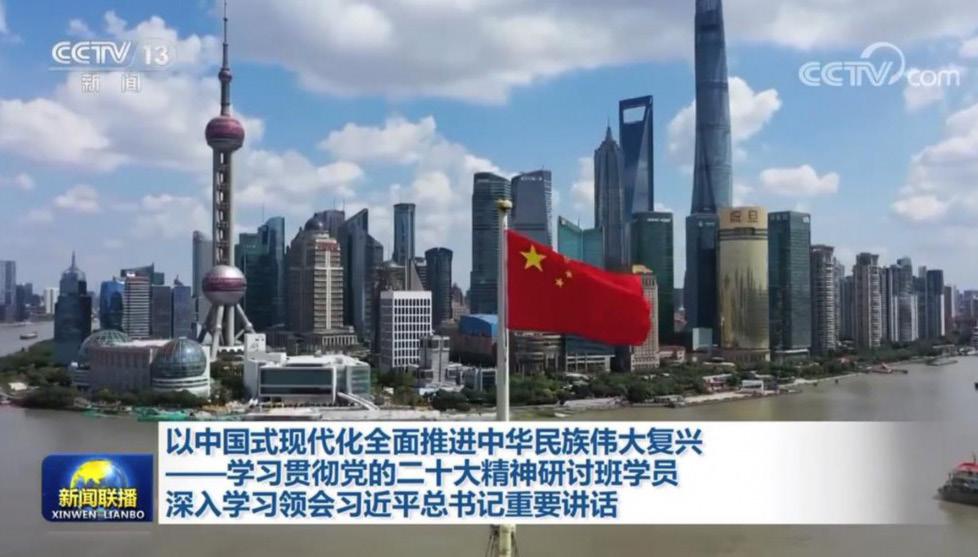
FIG.2.14
Text: “Promoting the great rejuvenation of the Chinese nation with Chinese style modernity - Learning and implementing the spirit of the 20st National Congress of the Communist Party - Learning from Xi Jinping’s important speech”.
Urban development, China’s Modernization, Communist Party and top leader are closely linked in propaganda.
51
16. Tendentious housing shortages does not refer to a widespread housing shortage caused by inadequate housing construction, but to the housing shortage of specific groups, especially the low class in the urban area.
THE LOGIC OF FINANCIAL CAPITALISM AND IT’S FAILURE
A housing system solely based on a for-profit developer is unsustainable. Capitalism’s profit-driven nature will lead to an imbalance in the housing supply, ultimately leading to a crisis in the housing system. After China’s urban housing providers gradually changed from government and danwei to for-profit developers in the 1980s, more than 90% of urban housing is provided by real estate developers today. Such rapid urbanization and the flourishing of the real estate industry in China over the past four decades has resulted in severe problems of tendentious housing shortages 16, which further leads to a widening wealth gap and social differentiation.
This section will explain why it is impossible to establish a stable and sustainable housing system when for-profit housing developers become the only housing providers. Such a failure is not the failure of execution and governance, but the failure of the finalcial capitalism’s nature. Furthermore, this will also explain why China’s land finance strategy and national modernization model, which focuses on real estate development, cannot be sustained after four decades of rapid development.
Tendentious Housing Shortage
Housing, along with clothing, food, and transportation, is one of the four most basic human needs. Whether it is the wealthiest billionaire in the world, or an unemployed person with no income or savings, they both need a space as shelter for the body. The only difference is that people from different social classes choose housing that they can afford based on their income and wealth, which is also the basic logic of the market economy in modern society.
However, real estate developers who prioritize profits as their ultimate goal will inevitably lead to a tendency towards developing housing with more profit. This logic means that profit-driven developers always tend to develop housing projects (for investment) that cater to the middle-high-income class with higher profit rather than developing affordable housing with social care attributes for low-income earners.
52
High incomes have become more profitable and less risky by renting/selling their investment housing to low-middle incomes. Therefor, high incomes are more likely to buy housing for investment.
For-profit developers have become more profitable and less risky by providing investment housing for high incomes.
The number of middle-low incomes who cannot buy their own homes has increased
Too many people cannot afford their house. The real estate crash.
For-profit developers are more likely to provide (investment) housing for high incomes.
The housing market becomes more prosperous while housing prices becomes higher
53
FIG.2.15 The endless chain of Tendentious Housing Shortage

This imbalance in housing provision ultimately leads to a vicious cycle of tendentious housing shortages.
The logic chain of this vicious cycle is as follows (FIG.2.15): 1. High-income class who possess capital tend to invest by purchasing housing.
2. With this type of investment increase, for-profit real estate developers tend to supply investment properties for these high-income to gain more profit. 3. As investment properties increase, housing prices continue to rise. 4. Consequently, the number of middle-low incomes who cannot afford their housing expands, forcing them to rent or purchase housing from high-income individuals with investment properties. 5. The risk of purchasing housing for investment purposes by high incomes becomes smaller and smaller, and they can transfer the rising investment cost to middle-low income who rent or buy their houses. At the same time, the desire and purchasing power of high-income for housing investment becomes stronger and stronger. 6. As a result, for-profit real estate developers have become more and more willing to build housing for high-income investors...... The danger of such a logic is that, as the chain continues, more and more people cannot afford their housing, and the wealth gap between the classes will continue to widen 17. In the end, this will cause serious social problems (FIG.2.16).
Although China’s governments have tried to encourage real estate developers to build affordable housing for low-middle incomes by providing preferential tax rates, loan rates and financial subsidies for for-profit housing builders. However, the actual results have been limited. The essence of this phenomenon lies in the underlying logic of for-profit housing developers (find more profit) mismatching the logic to develop low-income affordable housing (provide social care), which like putting a sword in a mismatched scabbard. Especially considering that in China today, since the government stopped acting as a housing provider, the existing housing system cannot find a suitable affordable housing provider for low-middle incomes (while real estate developers are almost the only urban housing providers).
17. Rujun Jia and Yin Li, More Than Living: One Hundred Years of Experience in Non-profit Housing Construction in Zurich, (Chongqing: Chongqing University Press, 2015).
Once the number of people who cannot afford their housing exceeds a threshold, such a housing system that cannot provide living units to
54
FIG.2.16
“Swap 4-room demolition apartment against Villa at Zurichberg!” Banner during protest against lack of housing in Zurich, 1980.
most residents will face a crisis of collapse. The collapse of the housing system will further lead to a chain reaction of decline in “real estate, banking, local finance, and economic growth” on the chain of land finance.
In China today, most people must use 60 to 70 years’ income to purchase housing. It must be realized that China’s housing system is already on the brink of collapse in this vicious cycle (FIG.2.17). The logic of (financial) capitalism once again verifies its unsustainability. Like all previous countries’ real estate collapse, its failure is no different in the system of China.

55
FIG.2.17
“Hegang (a city in Heilongjiang Province) cheap apartments 48 m2. Asking for only 15,000 yuan.” Until today, the bubble of housing prices in many small Chinese cities has already collapsed. Local government finances are already in trouble.
Pathway 1. (chapter 3)
Based on the case of land fragmentation in urban Japan, how could for-profit developers cooperate with residents with new typologies?
Pathway 2. (chapter 4)
Based on the case of planned economy China housing system, how could the forms of living influenced by the definition of ownership?
56 Government Citizen Developer Sources of Finance Provide Legitimacy Two
Continuous
Continuous Payment Government Citizen Developer
Pathway
Service
Government Citizen Developer Policy Provide Sourcesof Finance
Two different pathways of the thesis
FIG.2.18
TOWARDS HOUSING SYSTEM REFORM
NEW POWER AND NEW FORMS OF LIVING
Once the land finance model of the real estate era reaches its end, the government-developer alliance will no longer be able to maintain. For practical reasons, the Chinese government is attempting to use real estate tax to supplement land selling to compensate for the local fiscal deficit. Due to the coming of the real estate tax, the new middle class in Chinese cities, who have accumulated wealth rapidly during the urbanization wave of the past decades, will become the group that lose benefit from this important reform. This group of people often has received better education, has decent jobs and higher incomes, and often owns two or more properties (housing) in urban areas, making them the primary taxpayers of the real estate tax in the future.
“In reality, throughout history, the majority of ordinary people have been virtually powerless to affect the course of political events and have therefore rarely attempted to do so in an organized fashion. Such efforts, when undertaken, are usually fraught with danger and almost always doomed to failure” 18. In fact, most ordinary people pay more attention to how to deconstruct the “disadvantages of the system” through “everyday forms of resistance” in the framework of the system and minimize the impact on themselves 19. However, in some sense, the everyday resistance process also forces the rulers to compromise and adjust the system. Especially for China’s emerging middle class, they have corresponding wealth, as well as organizational and action capabilities brought by knowledge. The power of China’s neo-middle class and the government’s dependence on real estate taxes mean that their demands will no longer be ignored as they were in the era of real estate.
Furthermore, how to form a new cooperative relationship with this emerging, knowledge-based, and action-capable middle class of hundreds of millions of people will be the primary task of the government and developers. This thesis believes that due to the new real estate tax policy, the middle class, as the main target of taxation, will gain the influence they deserve in the housing system, giving them power to determine their living forms. In Chapters Three and Four, this thesis attempts to showcase the pathways of two distinctly different new forms of living through case study and design testing, which are also two very different urban imaginations toward the future of post-modern China.
18. Howard Zinn, A People’s History of the United States, (Harper Perennial Modern Classics, 2015).
19. James Scott, Domination and the Arts of Resistance: Hidden Transcripts, (Yale University Press, 1992).
57
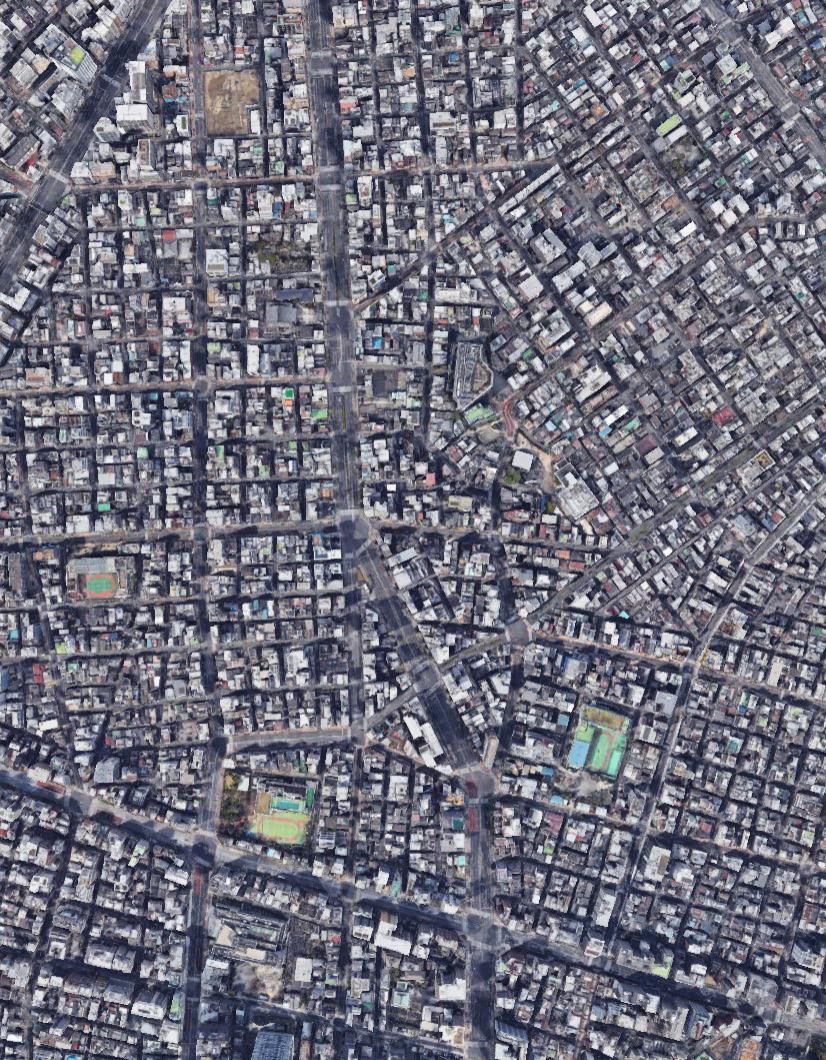
CHAPTER 3.
The Logic of (Financial) Capitalism
Previous Page
The land of Tokyo is shared by millions of landowners, 2010s. In today’s Japan, the urban fabric of city exhibits a state of fragmentation.
59
THE AGE OF PRODUCTS
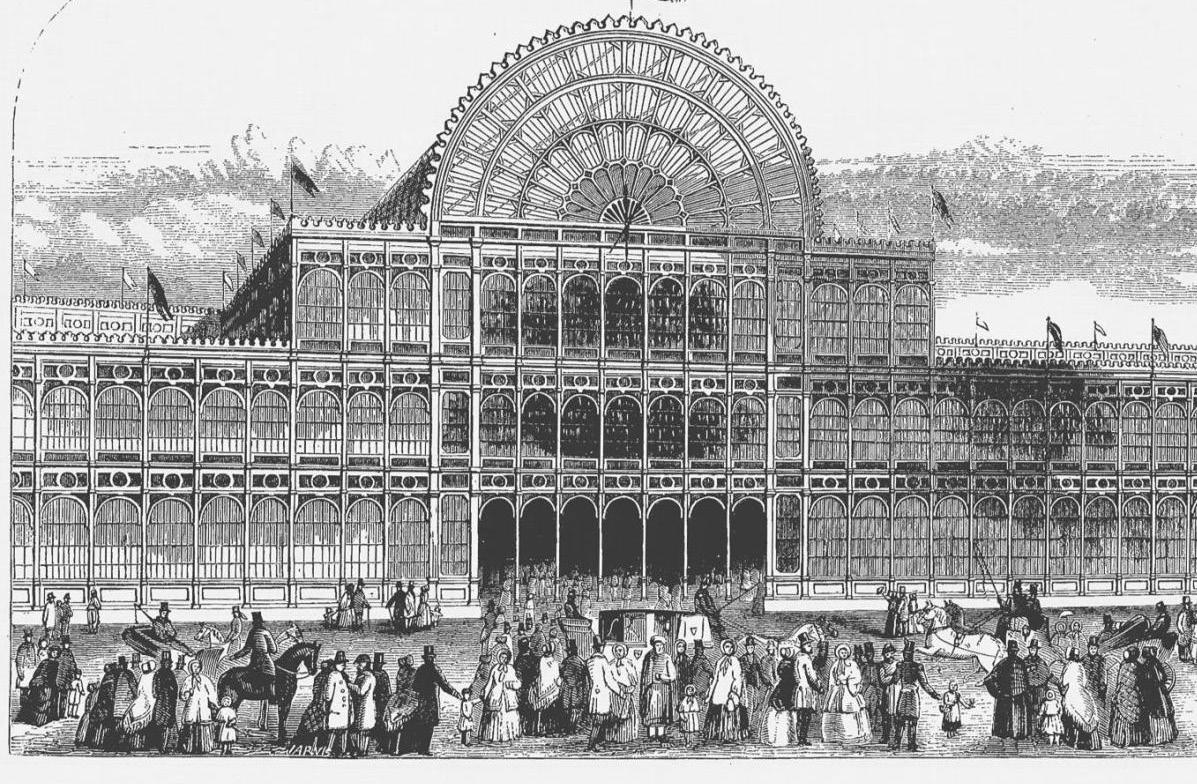
FIG.3.1
Crystal Palace, 1851. The building was constructed almost entirely of glass and cast iron. Crystal Palace creates a grand, light-filled space that showcased the wonders of modern industry and technology.
“Housing is a machine for living.” At the beginning of the 20th century, Le Corbusier’s modernist manifesto was filled with an ambitious desire to break from classical and traditional orders. Since then, modernism gradually transformed architecture into a discipline of mechanistic rationality, isolating it from the historical context of cities and countries. If observing modernist architecture in the context of historical materialism, this movement’s emergence can be considered an inevitable result of the development of human industrial civilization. The feasibility of modernist architecture was based on the industrial production of cheap and high-performance building materials, such as concrete, steel, and glass (FIG.3.1).
At the same time, the space and form of modernism architecture also made life more convenient and efficient, meeting the demands of rapid urbanization in the early 20th century for the construction of large amounts of living units in the cities. In this context, modernist architecture, especially residential building, the most basic human need, became the industrial products that had undergone precise processing. The essence of industrial products lies in their economic properties and homogeneity as commodities, just as Henri Lefebvre said: “The space produced by ‘modernity’ has specific characteristics: homogeneity - fragmentation - hierarchy. It tends towards the homogeneous for various reasons: manufacture of elements and materials (and corresponding demands on the part of those involved), methods of management and control, surveillance and communication.Homogeneity, but no plans or projects. False ‘ensembles’ - in fact, units. Because paradoxically (again) this homogeneous space is fragmented: lots and parcels. Reduced to crumbs! Which produced grettos, units, clusters of detached houses and pseudo-schemes, poorly linked with their surroundings and with towncentres 1”
1.
In the mid-20th century, humans began to realize that the form of capitalism was better suited to the city’s needs as a place for economic activity. The residential building in the city, as the shelter that accommodates a large urban population, is economical, too. In the latter half of the 20th century, homogeneous and uniform living units were built in cities worldwide. These buildings were divided by walls and structural pillars, with housing units arranged along narrow corridors
60
Henri Lefebvre, The Production of Space, trans. Mark Kammerbauer (Oxford; Cambridge, Mass.: Blackwell, 1991).
in collective housing or narrow streets in independent housing areas in the same form and size. Living units were separated from the external space by machine-produced steel doors (FIG.3.2). “Even if something unfortunate happened to a neighbor, we might not know which household it happened to, because everyone’s houses were so similar 2” This characteristic of modernism that closely links the city, housing, and economic (capitalist) development has continued to this day around the world. As a result, architecture has departed from its status as the pure stonemason (in the East Asian context, the carpenter) craft before the 19th century, and has become a loose concept complex that contains a great economic value and the possibility of speculation (FIG.3.3).
Structure of the Chapter
After the rise of modernism, housing as a mass production commodity appeared in the city. Naturally, modernism, housing, commodities (industrial goods), investment and finance were linked together as irreplaceable parts of market economy society. Reviewing the modern history of human civilization, the financial crises that modern societies face are often the result of real estate speculation. Some famous examples include the housing collapse during the Great Depression in the United States in the 1920s, Japan’s economic bubble burst in the 1990s, and China’s current real estate crisis in the 2020s. These events demonstrate the inextricable link between architecture (real estate) and economics.
In chapter two, the thesis has already explained the inevitability of the collapse of a housing system based on investment housing construction under the logic of (financial) capitalism. This profit-driven logic somehow conflicts with the most basic human needs, the living. With the collapse of China’s real-estate-based housing system, the alliance between the government and real estate developers will unravel. Therefore, chapter three represents an empirical urban imagination of the thesis. How will real estate developers, as the primary housing providers in China’s current housing system, continue to exist in the new system? The continuation of this existence does not require a change in


61
2. Jane Jacobs, The Death and Life of Great American Cities, (London : Pimlico, 2000).
FIG.3.2 Pruitt-Igoe Housing by Minoru Yamasaki, 1954. Pruitt-Igoe Housing is a large-scale social residential complex consisting of 33 11-storey board buildings, which is heavily influenced by the principles of modernist architecture and urban design.
FIG.3.3
Vessel by Thomas Heatherwick, 2019. As an interdisciplinary designer, Thomas Heatherwick has received a great deal of attention in the contemporary architecture industry
their profit-driven nature, but rather a transformation of the living form and development mode of urban housing through cooperation with the emerging city middle class in China’s cities.
The 1990s Japan as the Projection
In this chapter, the real estate bubble crisis in Japan in the early 1990s will serve as the starting point for the story. In this crisis, Japanese landowners divided their land among their children to reduce family financial risk, due to changes in land prices and increased property taxes. This spontaneous and rational economic action profoundly altered the texture and form of Japanese cities.
Japan is a neighbouring country separated only by a strip of water from China. There is no doubt that Japan has many connections to China regarding geography, culture and society. Therefore, Japan’s real estate bubble crisis will become a meaningful case for China. Based on the case of the 1990s Japan, this chapter attempts to bring similar thinking into China’s high-rise, high-density urban fabric. With the decline in housing prices and the implementation of property taxes in China, what kind of residential demands will urban residents need? Furthermore, as the most significant housing provider in Chian’s current housing system, what new role will real estate developers play in this process?
62
JAPAN’S HOUSING BUBBLE CRISIS
Generally speaking, both Japan and China belong to the East Asian cultural circle, which has a solid connection in culture, geopolitics and economic development model. Faced with the great success achieved by Japan, South Korea, Taiwan and other East Asian countries/regions after the second world war, people summed up the modernization process of East Asia as the “East Asian model” 3. In addition, after achieving outstanding economic achievements, these countries following the East Asian model have also encountered similar social problems (FIG.3.4), such as the rapid rise in housing prices, the sharp decline in birth rates and the ageing of the population. In the 1990s, Japan experienced the collapse of the real estate bubble. After the housing price peaked in Japan’s history, the destruction of real estate led to the collapse of financial markets. After an extended period, Japan’s economy fell into a long-term slump, also called the lost decade 4
Therefore, Japan’s real estate bubble collapse in the 1990s is significant for the current situation in China. The study on Japan’s real estate bubble is also a chance to review the current state of Chinese society. The 1990s housing crisis in Japan could also be considered a projection of what is happening in China today. However, it is also worth noting that despite abstract cultural traditions and the pathway of economic development similarities, there are considerable differences between modern Japan and China in housing systems, ideology and even ownership rights. For example, in Japan, buyers hold the title to land in perpetuity, while in China, land always belongs to the state due to the law, and buyers generally only own the house and have 70 years’ right to use the land. This chapter will not ignore these differences, but attempts to provide a reference for China on the changes in housing typologies, forms, and family composition from the collapse of the Japanese real estate bubble in the 1990s.
Urban Fragmentaion and Economic Rational Action
Today’s Japanese cities, take Tokyo for example, showcase a unique texture. In particular, compared to Chinese cities that are filled with high-rise, reinforced concrete residential compounds, Japanese res-

3. East Asian model typically refers to a set of economic policies and strategies that were adopted by several East Asian countries/regions, including Japan, South Korea, Taiwan, Hong Kong, and Singapore, during their rapid economic growth periods in the 1960s, 1970s, and 1980s.
It’s worth noting that the East Asian model is not a monolithic or uniform approach, and different countries have implemented it in different ways. Nonetheless, the term remains a useful shorthand for the set of policies and strategies that characterized the region’s economic success in the latter half of the 20th century.
4. Japanese: 失われた10年
63
FIG.3.4
Mass strikes in Japan after the collapse of the bubble economy, 1990s.
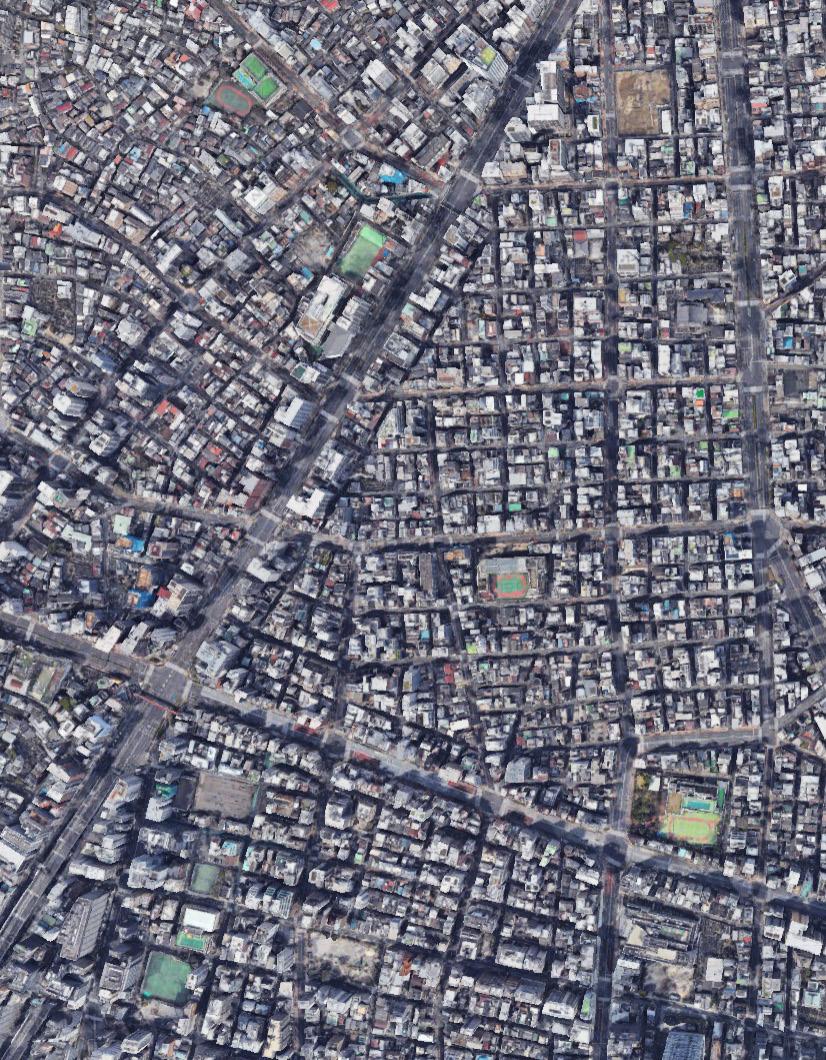 FIG.3.5 Tokyo, 2010s. The urban fabric of Japan exhibits fragment condition.
FIG.3.5 Tokyo, 2010s. The urban fabric of Japan exhibits fragment condition.

5. Koh Kitayama, Yoshiharu Tsukamoto and Ryue Nishizawa, Tokyo Metabolizing, (Tokyo : TOTO, 2010).
6. Claudia Hildner, Small Houses: Contemporary Japanese Dwellings, (Basel: Birkhäuser GmbH Basel, 2011).
idential areas exhibit a low-rise, high-density fractured feel (FIG.3.5). Most of the houses in urban areas are independent units with small footprints arranged side-by-side, with only a narrow path separating them, and the ground floor of some houses have also been converted into community shops. Although these detached houses are almost the same size, their different forms and colours still demonstrate the diversity of housing architecture to the fullest extent possible. Japanese architect Koh Kitayama calls this fragmented texture a reflection of “an egalitarian civil society and a functioning democracy exist in Japan”
5. Some research also considers this phenomenon as the traditions of Japanese society, that each Japan’s family all want to have their own detached houses 6. However, it should be noticed that Japan’s highly fragmented urban texture is not only rooted in its longstanding cultural tradition of small houses but also closely related to the most practical economic factors.
In Japan’s urbanization wave that followed World War II, the area of urban suburbs was continually consumed and divided into multiple blocks, giving rise to the urban segmentation pattern. Especially in the 1980s and 1990s, the land had become the scarcest and most sought-after investment product in Japan. Owning a piece of land in the rapidly developing city was like having a money-making machine that would
Bubble Economy and the Collapse in Japan

66
in inheritance
of
1985-2010.
FIG.3.6 Changes
tax rates
Japan,
appreciate over time. As a result, a series of economic games revolving around land began to play out among the government, developers, and landowners.
Firstly, with the rise in land prices came the sky-rocketing (property) inheritance tax (FIG.3.6). In 1985, the successor of a Japanese family in Setagaya-ku (one of Tokyo’s core areas) had to pay JPY 50 million in inheritance tax for the 240 square meters of land left by his parents. In just five years, by the early 1990s, this amount had soared to JPY 350 million 7. The soaring inheritance tax reflected the irrational land/housing prices of Japan’s 1990s bubble economy. It led to an economically rational outcome: the larger a family’s land has, the higher the real estate tax they had to pay.
Large-scale land (properties) were more likely to be divided into serval parts between generations because high inheritance taxes would be incurred when a family engaged in inter-generational inheritance. Whether distributing the divided properties to different children or selling part of the land, these were all ways to avoid high inheritance taxes. In this way, Japan’s landowners reduced the economic losses (inheritance tax) their families would lose in inter-generational inheritance. At the same time, with the development of generations, the land
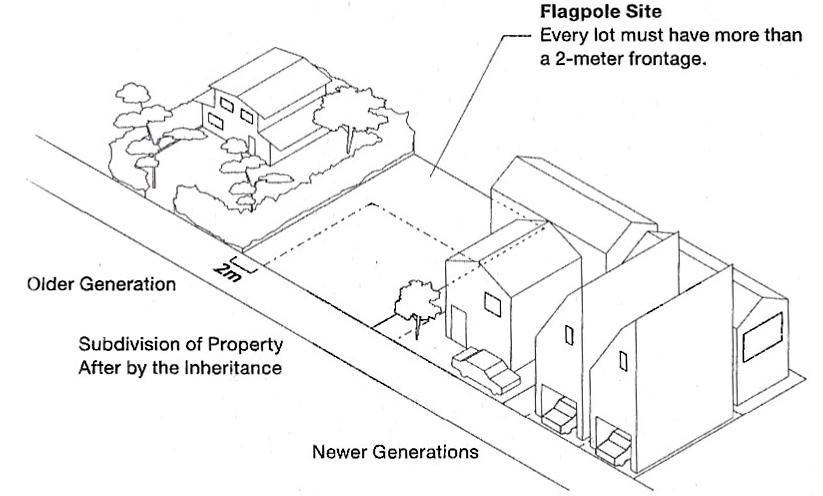
7. Yoshiharu Tsukamoto, Tokyo Metabolism, Escaping the Spiral of Intolerance: Fourth-Generation Houses and Void Metabolism.
67
FIG.3.7
The process of land cutting between generation in Japan’s urban area.
8. According to data provided by Tokyo government, Tokyo’s land is now shared by 1.8 million landowners, including 1.7 million individual landowners and 100,000 corporate landowners.
9. Japan maintained a relatively high birth rate until the early 1970s, with the birth rate remaining around 2.14 until 1974, so it can be imagined that families at that time generally had multiple children.
area of each family gradually became smaller (FIG.3.7). Till today, Tokyo, as a major metropolis, has undergone multiple rounds of land division over the years. The entire land of Tokyo has been divided into countless small particles, which are detached residential units of less than 100 square meters each 8
Typology based on Urban Fragmentation
As Kengo Kuma has pointed out, the policy of individual home ownership was imported from the U.S., and introduced to Japan as one of the urban economic principles that eventually led to the bubble economy. The increase in land prices and inheritance taxes in Japan has divided urban space into smaller and smaller plots. As a result of these changes in land area, housing forms and family organizations have naturally changed, and the changes in housing typology honestly reflect the changes in Japanese living styles during this process. Yoshiharu Tsukamoto conducted a detailed investigation of the changes in housing typology from the First Generation to the Third Generation during this process (FIG.3.8). Based on this phenomenon, the living forms of Japanese urban families could be inferred during the different generation. It will also become a powerful reference for China’s design test.
After the end of World War II, with the recovery of the Japanese economy, the owners of the First Generation housing in Japanese cities preferred to live in houses of about 240 square meters with fenced yards filled with flowers and grass. They would then build a single-story house in the centre of the garden for themselves, their spouses, and all their children to live in 9. A parking space was also reserved next to the house, which was nestled in the shade of the trees. As land was divided, the Second Generation of housing had shrunk to two-story houses occupying about 120 square meters of land, which retained the parking space while reducing the garden size. The Third Generation of landowners’ land was even more fragmented, and residents built their three-story houses on 80 square meters of land. Due to the limited space, the front space of the first floor was used as a parking space only, and the garden landscape was removed. At the same time, the gradually
68

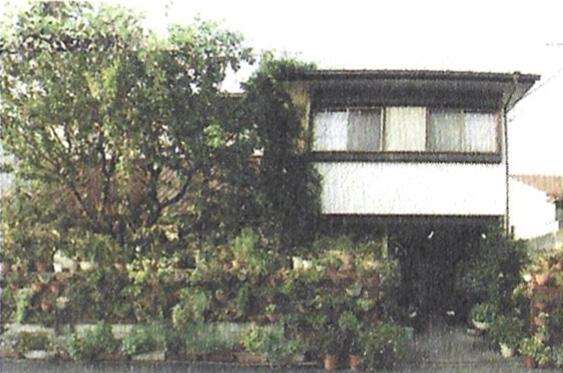
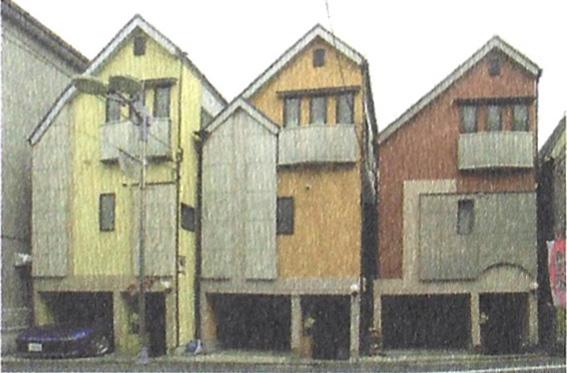


69
FIG.3.8.1
The townscape of Okusawa, with its mixture of multigeneratioanal houses (2009). Dwelling typology changes due to the policy of real estate tax in Japan.Landowner perfer to cut their land into small pieces. It could be clearly seen that the scale of each family and housing are gradually shrinking between generations. Source: Tokyo Metabolism.
10. After the 1990s, Japan’s birth rate began to fall below 1.5, and the “decline in the number of children” even became a problem for the country.
shrinking size of Japanese families corresponded to the narrow living spaces 10 .
It can be observed that with the division of land and changes in housing typology, Japan’s population and family size are undergoing profound changes at the same time. Now, only sixty percent of households in Japan are single-family households, and a larger percentage than ever before consists of unmarried people, single parents, and seniors. Low birth rates and high life expectancy are leading to increasingly smaller households. Many rural towns are experiencing shrinking populations. From the lifestyle of the main families in the first generation of housing to the family size dominated by nuclear families and even in today’s Japan, many urban residents choose to be childless or live alone.
70

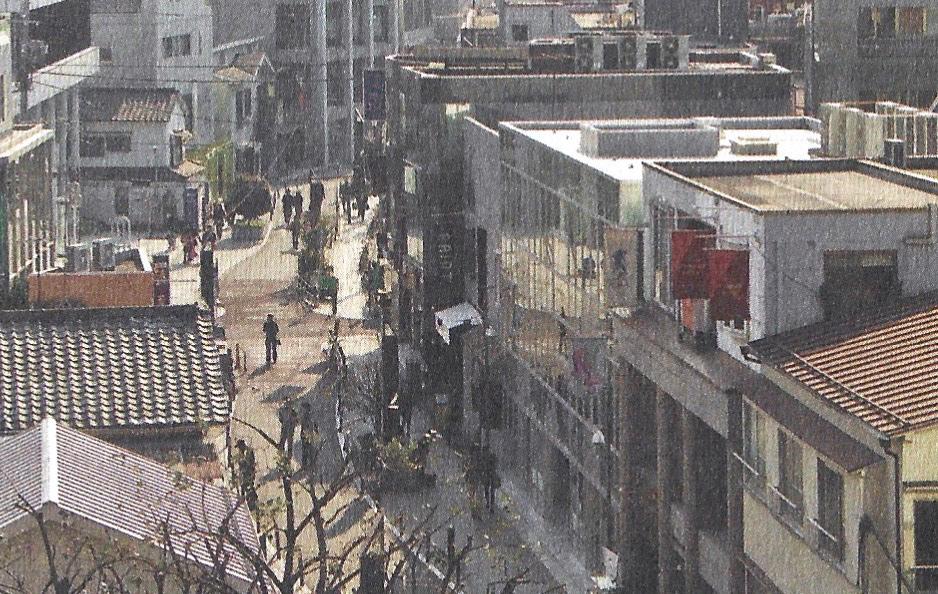
71
FIG.3.8.2
The transformation of Cat Street in Tokyo, the fragmented block as the result of land cutting. Source: Tokyo Metabolism.
11. The hybrid block means it has houses built for different purposes by different subjects at different times. For example, the housing in this block includes traditional Lilong (alleyway house), workers’new villages built in 1950s-1980s, and modern high-rise apartment buildings built after 2000s.
DESIGN TEST
THE POST - REAL -ESTATE URBAN IMAGINATION
The 1990s Japan as the Projection
Japan’s real estate bubble and property tax policy in the 1990s profoundly impacted living forms and family size in Japanese cities. The urban context is becoming increasingly fragmented, based on the spontaneous response of Japan’s landowners to economic rationality to reduce property taxes as much as possible. At the same time, the miniaturization of family size from stem family to nuclear family to “non-family coincides with the trend of land fragmentation. The change in urban form also reflects the change in residents’ living forms.
“The only source of knowledge is experience.” It is imperative to recognize the striking resemblance between the current real estate collapse in China and Japan thirty years ago. In addition to a similar real estate crisis, China was also experiencing negative population growth in 2022, like Japan in the 1990s (FIG.3.9). Therefore, Japan’s experience could be projected onto China as a precious example, especially as China begins implementing a real estate tax policy similar to Japan’s. The economic rationality behind Japanese landowners’ actions to divide the land between generations should be a significant reference point for China. It is particularly relevant in architecture, highlighting the importance of sustainable and responsible land management practices for future generations. The Generic Urban Block as Site
Based on the conclusions of Japan’s case, a design test will be applied to the Chinese context. Before starting the design, the thesis gives two constraints for the design test. Firstly, the design test should avoid excessive “design” and strive to ensure the universality of results. The design discussion focuses on the organizational pattern, spatial division and form of the housing rather than the completion of the individual elements of architecture, because isolated cases with personal aesthetics cannot support the entire residential system. Secondly, the design test should avoid the vagueness and abstraction of forms and follow the social reality and historical context of China’s city. Based on these prin-
72
ciples, the design test in chapter three selected a generic hybrid block 11 in the Hongkou District of Shanghai (FIG.3.10), the most ordinary block in every China’s city. The residential density of this area also shows the typical high-rise, high-density living forms in Chinese cities. In 2021, the average population density of Hongkou District was 32,935 people/ square kilometres, the average population of each household was 2.62, and the average housing area of Shanghai urban residents was 37.4 square meters 12. Due to the existence of this area index, the design test will inevitably adjust the scale and density. In principle, the typology and architectural form must ensure the design’s implementability in Chinese cities.
Common Characteristic
Economic Growth Rate
Global Economic Status
The economy shifts from high growth to medium growth
The economy is the second largest in the world; high-end manufacturing grew rapidly; trade friction with the United States.
Since 2012, China's GDP growth slowed from an average of 10% to 5-8%.
12. The data comes from National Bureau of Statistics of China.
13. The data in the table come from Organisation for Economic Cooperation and Development (OECD), National Bureau of Statistics of China, and populationpyramid.net, et al.
Population
Population structure changes, population aging problem gradually serious.
China's GDP surpassed Japan's in 2010 and became Second largest Country in GDP; in recent years, China has witnessed rapid development in high-tech sectors such as mobile Internet, 5G, new energy and high-end manufacturing; since 2018, the US has repeatedly picked trade disputes with China.
Population structure of China, 2022
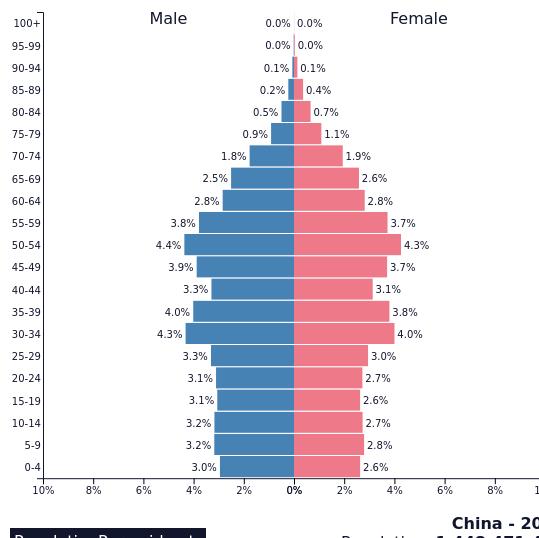
From 1975, The GDP growth rate of Japan began to decline; from 1980 to 1989, the GDP growth rate was between 4% and 10%.
Japan's GDP surpassed federal Germany's in 1968 and became Second largest Country in GDP; since 2018, the US has repeatedly picked trade disputes with Japan; the trade conflict in 1980s was main about automobile, machine tool, semiconductor and other high-tech industries.
Population structure of Japan, 1991

73
China in the 2020s
Japan in the late 1980s
FIG.3.9
The compartion between China in 2020s and Japan in 1980s.
13
 FIG.3.10.1 The urban context in Shanghai, the generic urban context of city China.
FIG.3.10.1 The urban context in Shanghai, the generic urban context of city China.



76 SITE
FIG.3.10.2
The generic urban block in Shanghai as site.
Slab-type Apartment 1990s
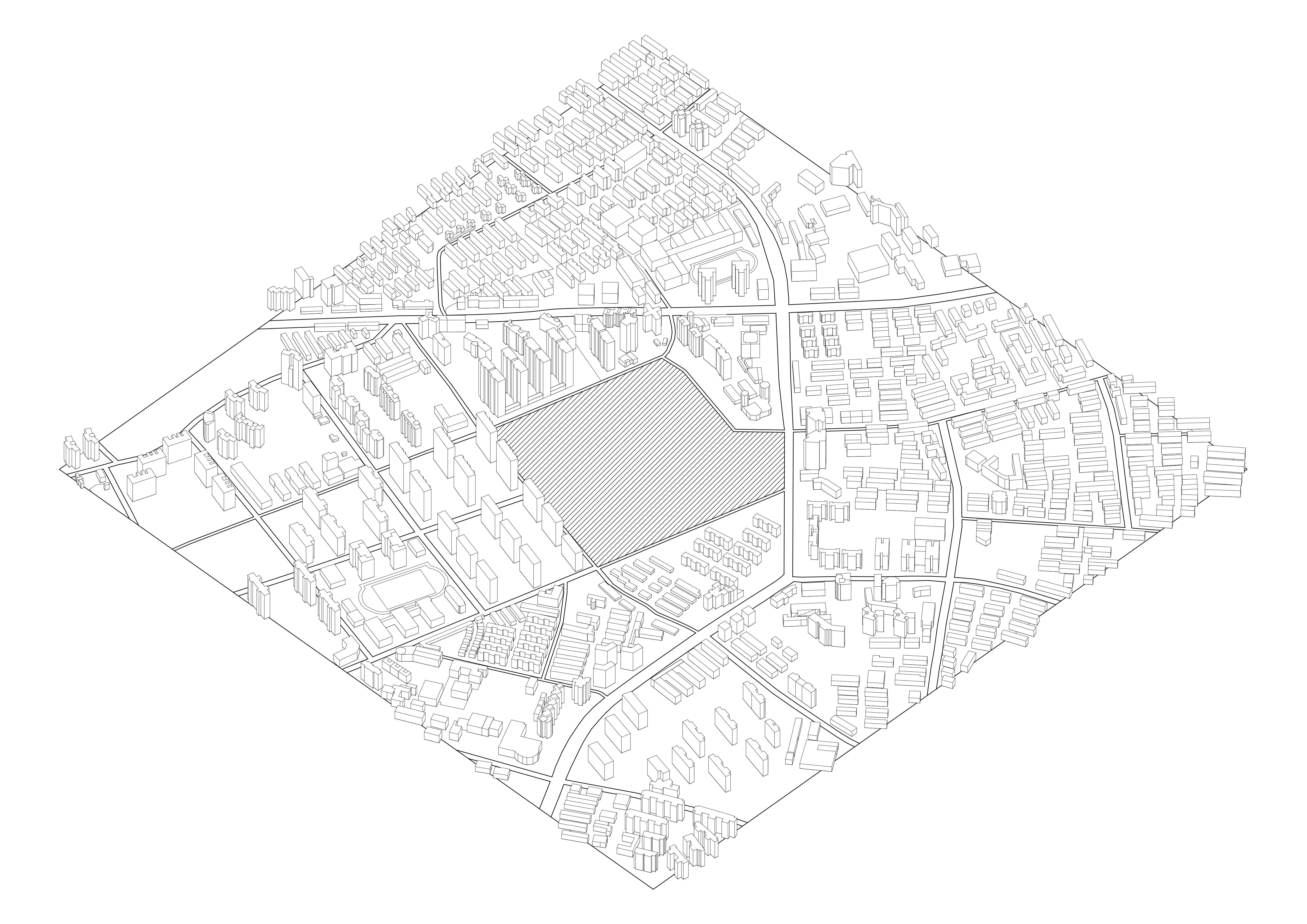
High-rise Apartment 2010s
Elevator Apartment 2000s
Elevator Apartment 2000s workers' new village 1970s
Slab-type Apartment 1990s
77
SITE
FIG.3.10.3
The site has a typical hybrid texture.
Space Cutting as the New Forms of Living
During Japan’s bubble economy in the 1990s, land fragmentation could be considered residents’ action to reduce property loss between generations. Especially for the city landowner (in some sense, the city middle class), they ensure property flexibility and inter-generational economic sustainability by cutting their land into small pieces. Such a process also brings a new form of living for the Japanese, with new dwelling typologies and family structures.
With the gradual implementation of property taxes in China, the city middle class, which has risen in the last few decades, will face the same dilemma. How to minimize the losses in the new property tax policy? In the design of chapter three, space cutting and generational transmission will become the core element to discuss based on this logic. With China’s high-rise and high-density urban context, this process of space fragmentation is implemented in the residential building rather than on the land itself (FIG.3.11).
78
79 A3 1:200 原图30% A3 1:200 原图30% A3 1:200 原原 30% A3 1:200 原原 30% JAPAN CHINA
FIG.3.11
Space cutting/generational transmission as the core method in design.
Architectural Framework: Family Expand/Shrink
Based on the guideline of space cutting, a new architectural framework has been built, which considers the building as the space to be fragmented. Compared with the old residential typology in China’s city, the whole building will be considered a flexible and continuable framework rather than a disposable, immutable industrial product.
By utilizing a central core space for residential infrastructure such as electricity, water and plumbing, and two flexible spaces on either side, this architectural framework aims to provide residents with the ability to adjust the size of their living (whether it is expanded or shrunk), in response to changes in real estate taxes and living cost across generations (FIG.3.12). Considering the unique ownership system in China (in China, land always belongs to the state due to the law, and buyers generally only own the house and have 70 years of right to use the land), this approach is also particularly relevant in the high-rise and high-density urban context.
80
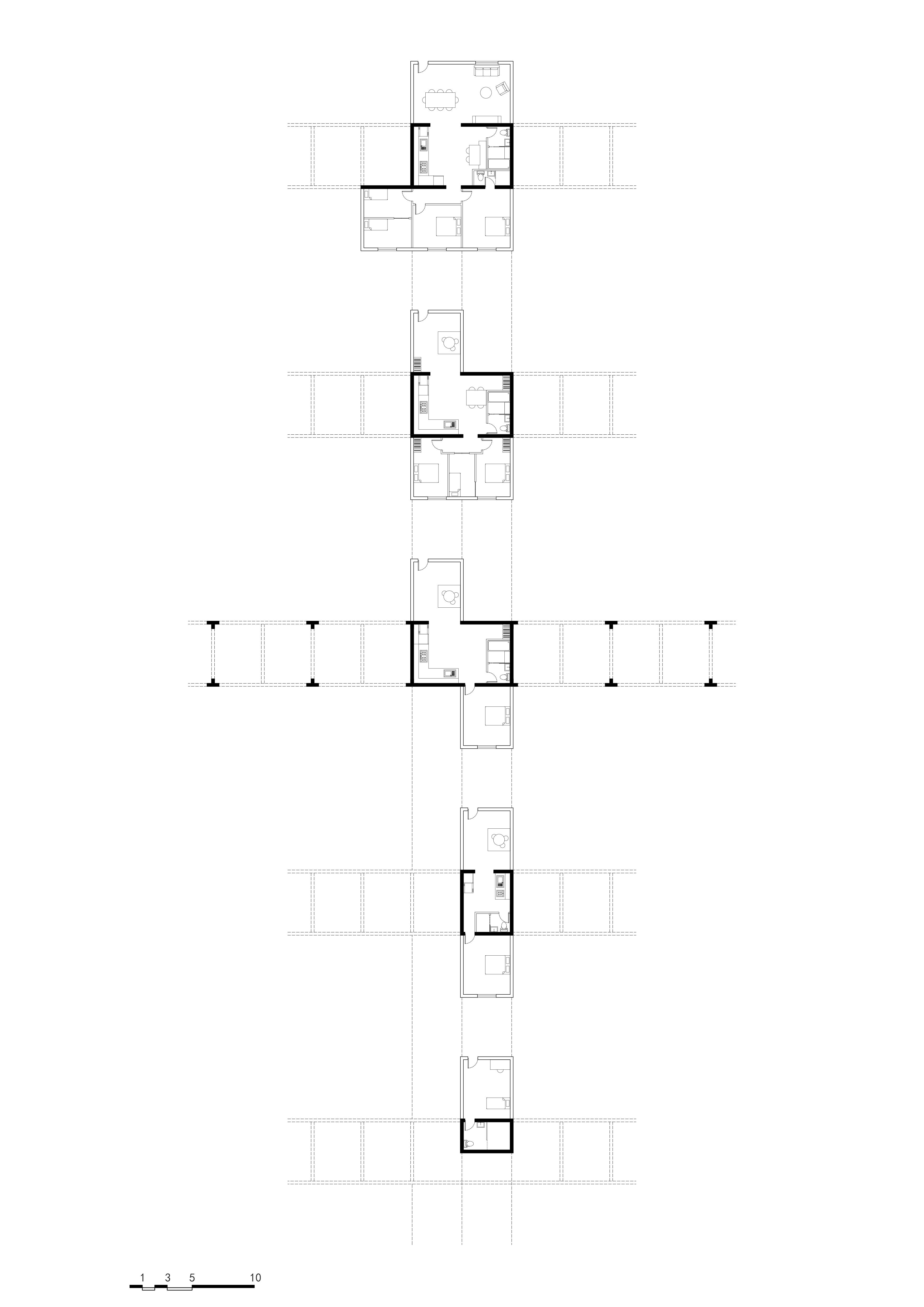

81
Family
Family
Nuclear
Extended
EXPAND SHRINK
FIG.3.12
m
The architectural framework based on space cutting.
Type 1. The Terrace Block
The terrace type is the primary type with the highest generality in the residential complex. The client of such a residential type includes youths, most of the core family and individuals with middle and low income.
Due to the flexibility of this type, these terrace blocks can be easily adjusted to suit the site and community, which makes such a type become the backbones of the whole residential area. It not only becomes the shelter for most residents but also builds the vision of the whole landscape and ground public space of the community.
82
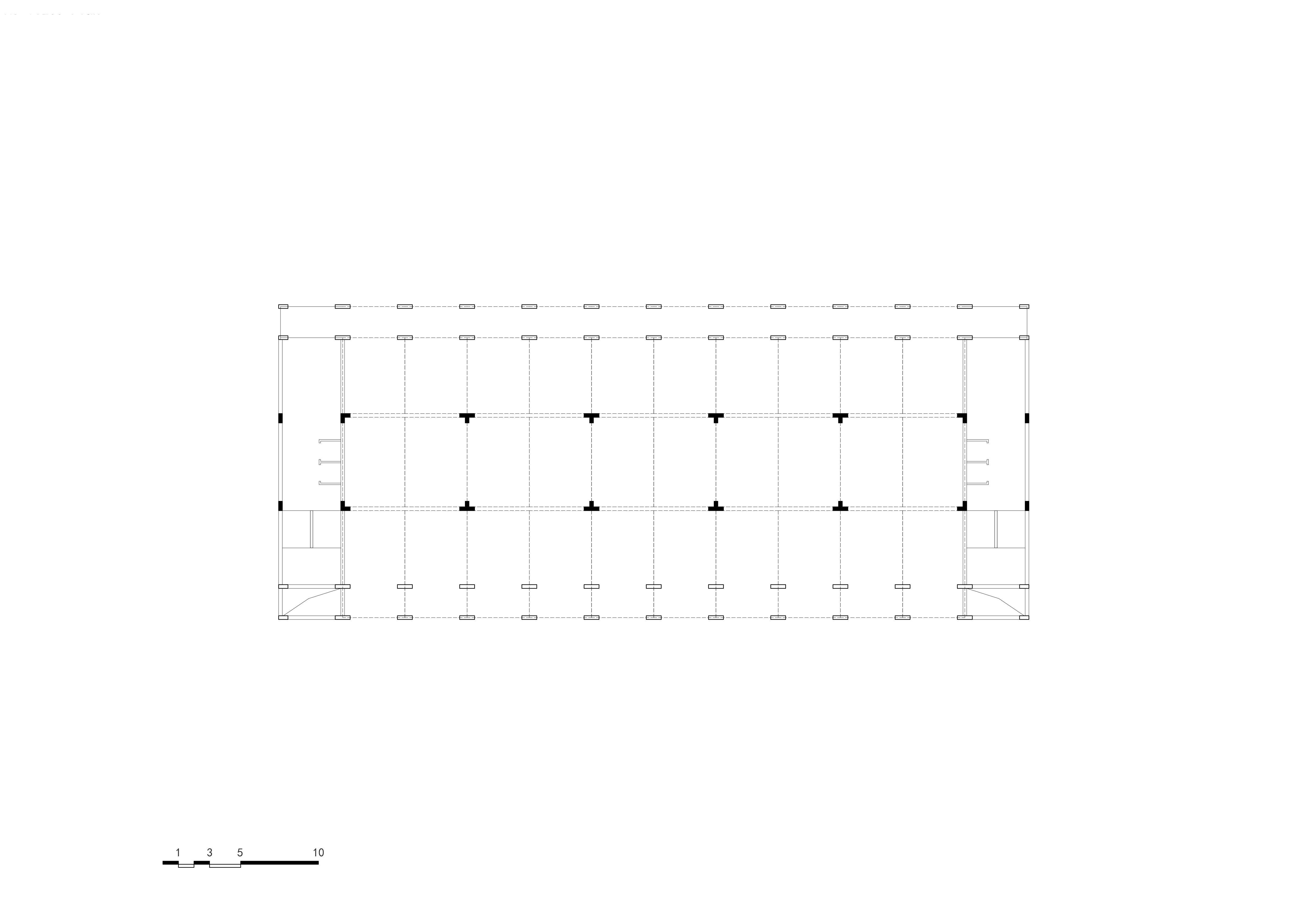


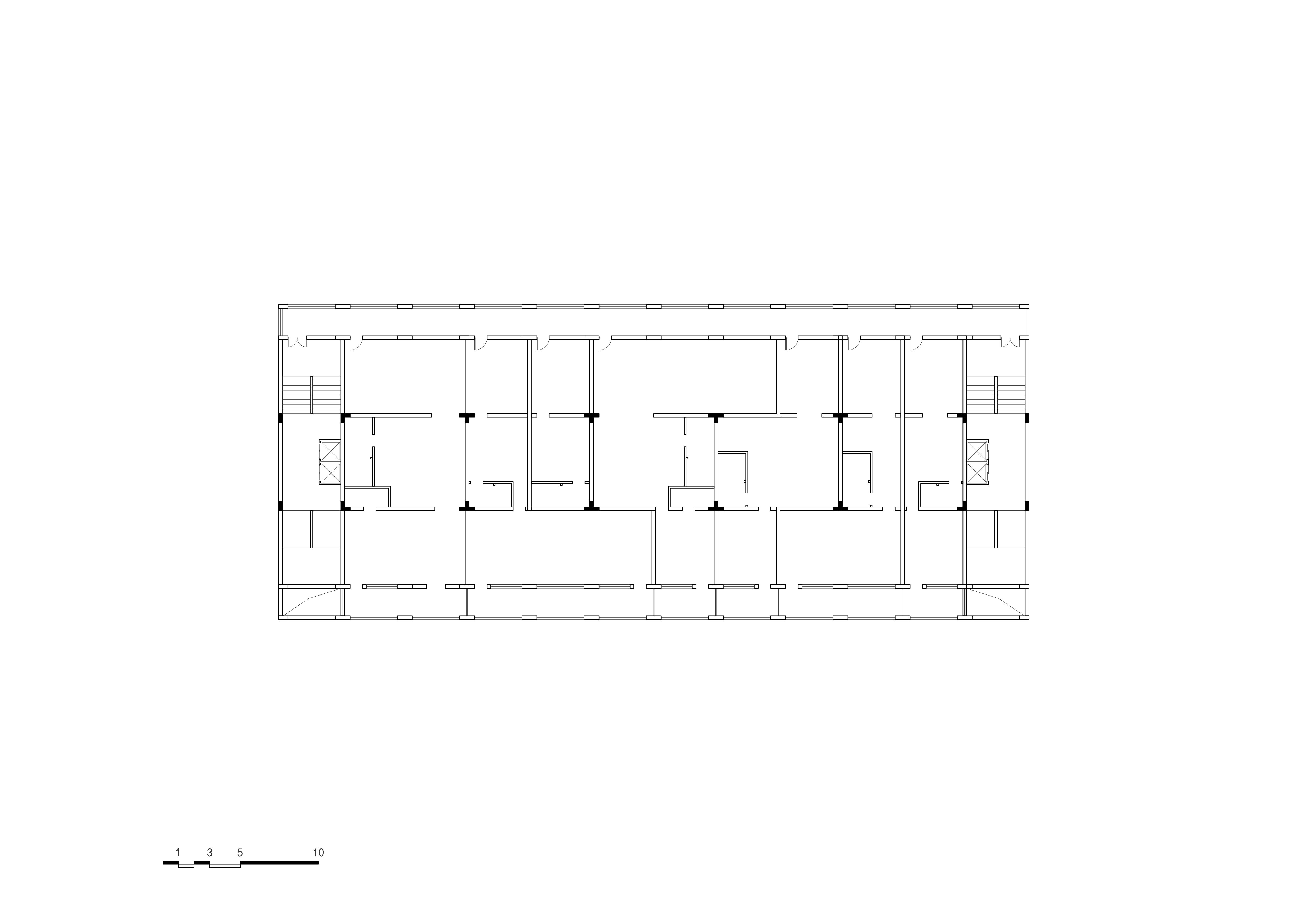
83
FIG.3.13.1 Architectural Framework
m m
FIG.3.13.2 Plan

84
A3 50%
FIG.3.13.3 Ground
FIG.3.13.4 Evolve
FIG.3.13.5 Single
85
FIG.3.13.6 Cluster
Type 2. The Tower Block
From the view of the city, the tower block is a type which respond to the skyline in China’s high-rise, high-density urban context. The exist of the tower block makes the new community a natural part of the old urban fabric.
Comparing with the terrace block and elliptic block, the tower type has higher living quality and better privacy. The main client of this type would be core family and stem family with middle-high income. The exist of the tower type actually support a life quality’s promotion pathway in the community.
86




87
FIG.3.14.1 Architectural Framework
m m
FIG.3.14.2 Plan

FIG.3.14.3 Ground
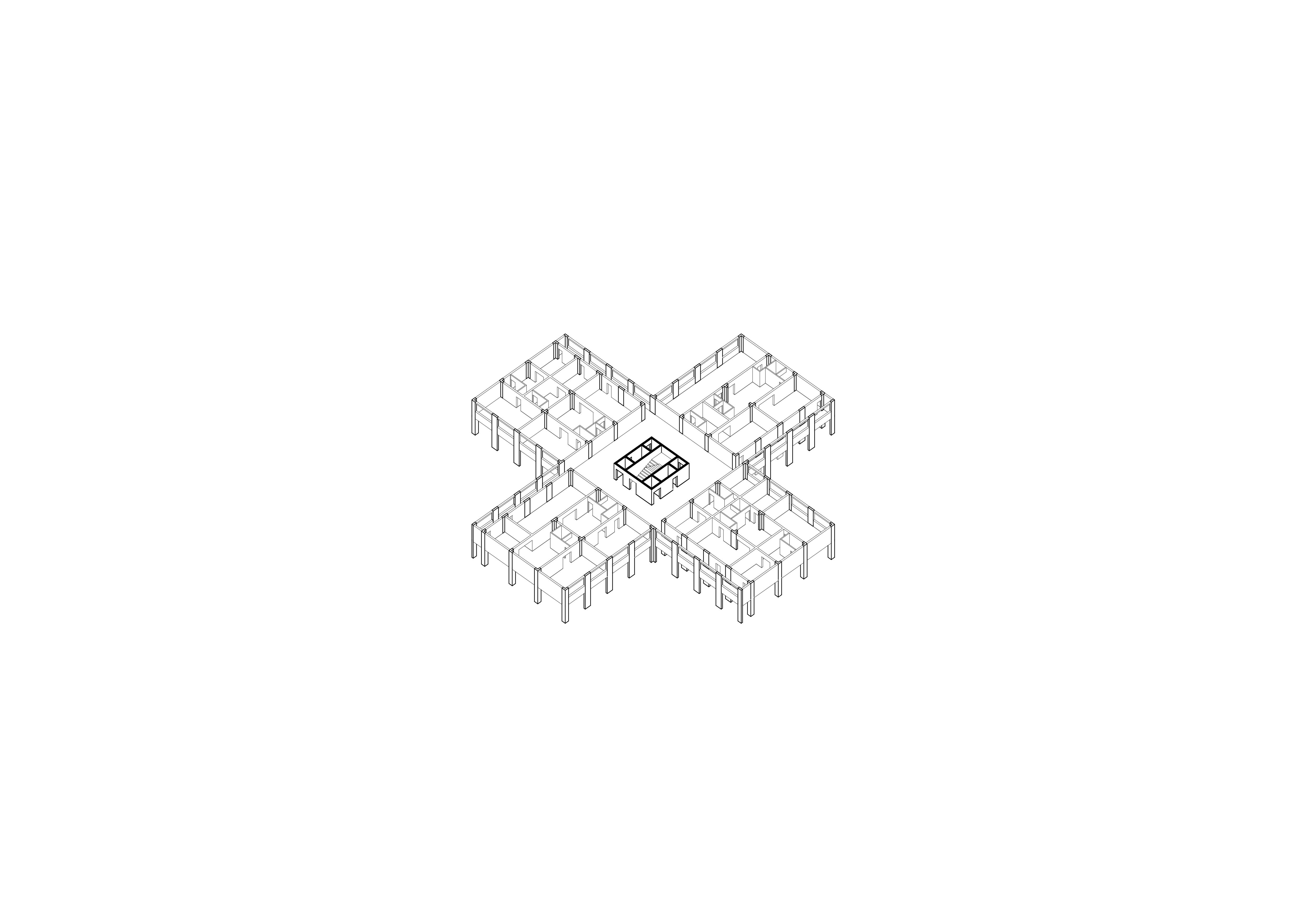
Evolve

FIG.3.14.5 Single
88
FIG.3.14.4

89
FIG.3.14.6 Cluster
Type 3. The Elliptic Block
The elliptic type is the living complex with the highest density and efficiency. The high-density living complex could decrease the living cost for low-income residents. The willingness of such a type is not only to increase the diversity of residences class in the community. It also provides potential community service labour for the whole residential complex.
Such a type with a large volume also further improves the possibility of space cutting. When the neighbourhood has the same intention of expanding or shrinking, such a process could also happen vertically in the building (FIG3.15).
90

91
FIG.3.15 The vertical space division in the living complex


92
m
FIG.3.16.1 Architectural Framework



93
m
FIG.3.16.2 Plan


94
FIG.3.16.3 Ground
FIG.3.16.4 Evolve
95
FIG.3.16.5 Single/Cluster
 FIG.3.17
The axonometric, different residential type create a diverse and sustainable communities.
FIG.3.17
The axonometric, different residential type create a diverse and sustainable communities.

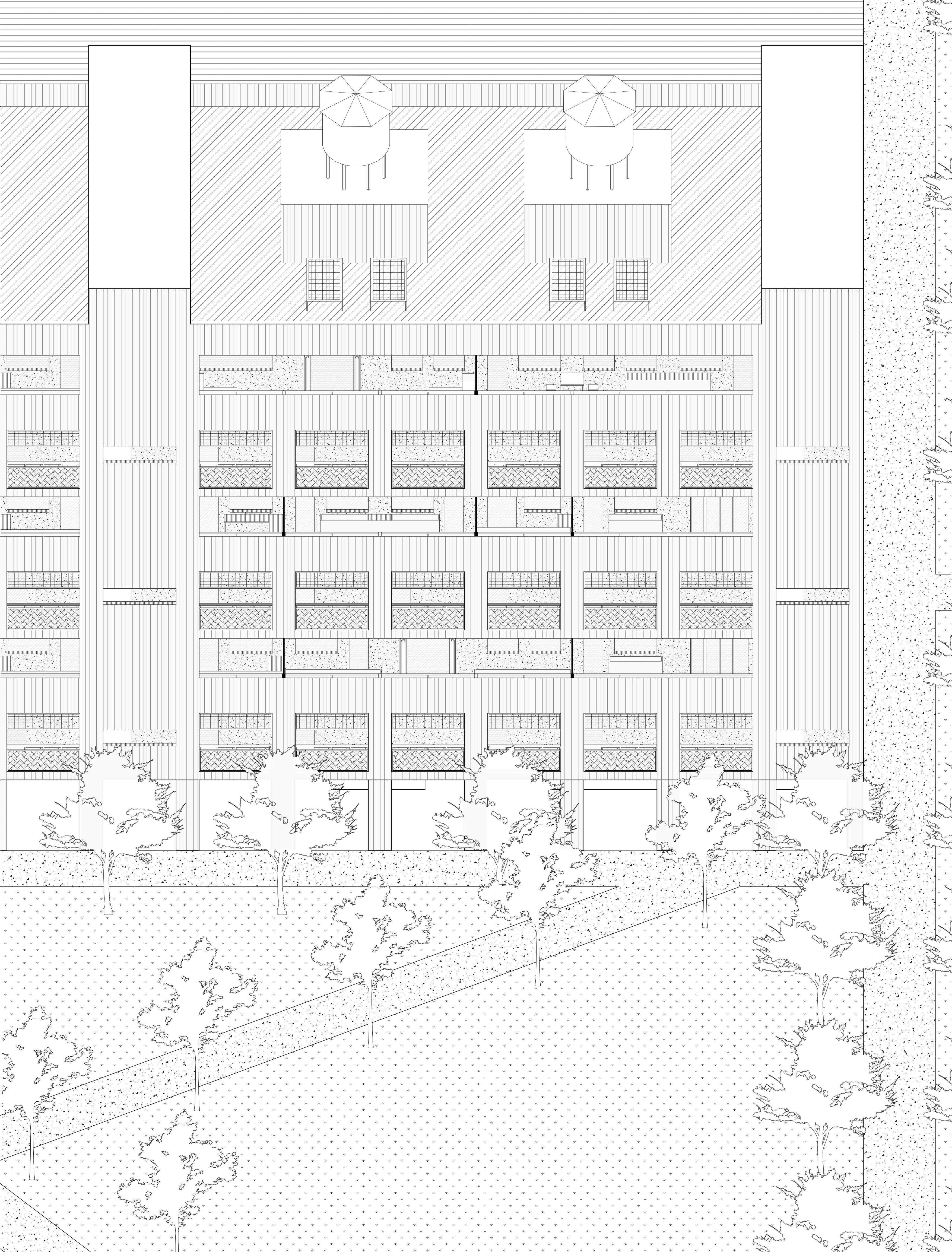
98

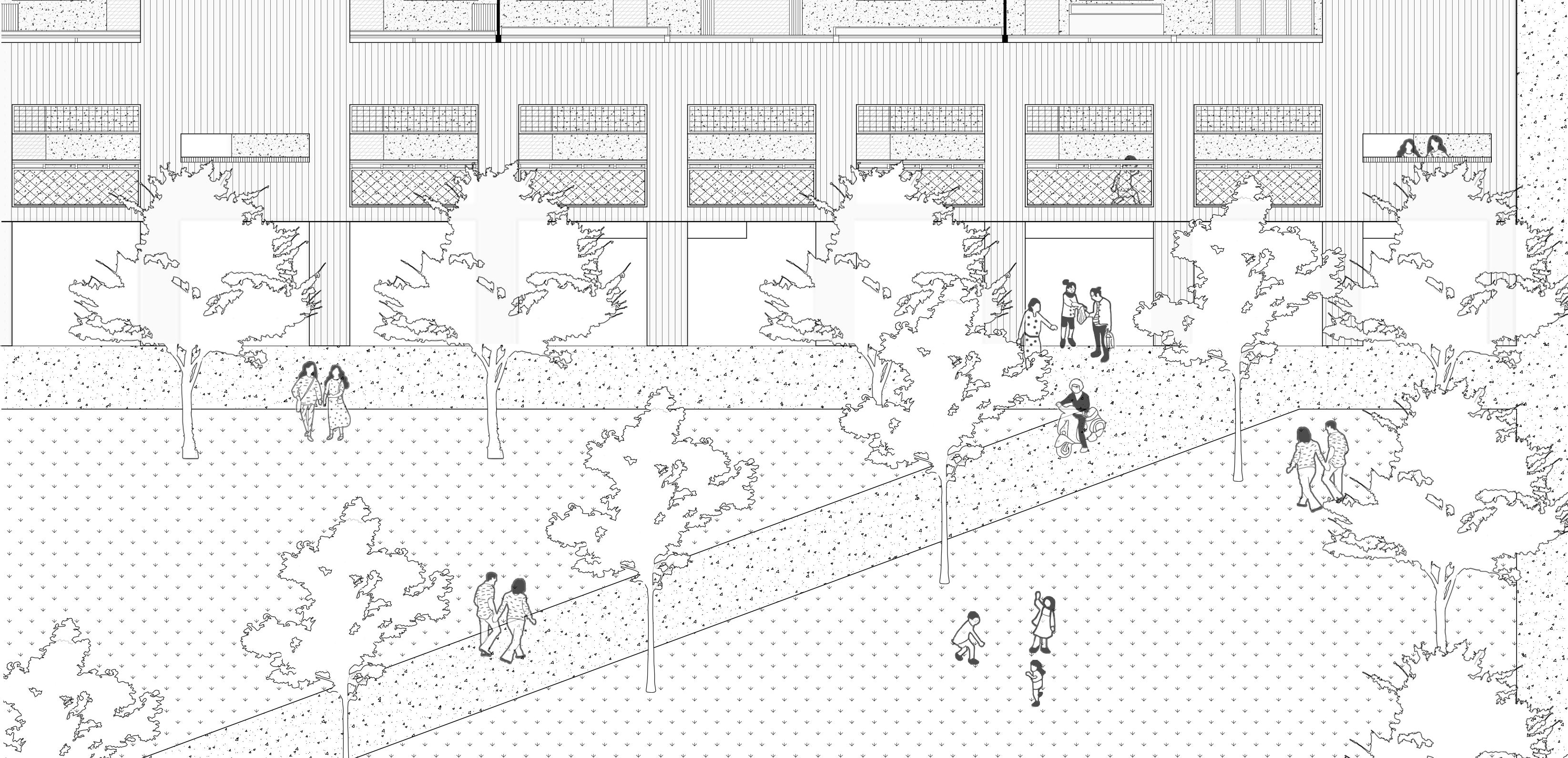
FIG.3.18.1 (Left)
The relation between the building, the open space and the community.
FIG.3.18.2 (Top Right)
The flexible architectural framework leads to different forms of living with different scales. Comparing the solid high-rise residential compounds in today’s city, The diversity of living scale across generations establishes a continuing community life.
FIG.3.18.3 (Bottom Right)
The ground floor of the buildings becomes the continuation of community service. Based on the framework of living units, the ground floor could provide different kinds of community service.
99
BEHIND THE TYPOLOGY
NEGOTIATION OF RESIDENT AND DEVELOPER
The design of this chapter attempts to imagine a new form of living based on economic rationality for Chinese residents in the post-real estate era. Moreover, such a urban imagination also presents a narrative of compromise and collaboration between residents and for-profit housing developers in the new era.
From One-off Business to Keep-run Business
In the current housing system, real estate development is wildly considered a one-time business. Usually, after finishing a residential development project, the developer will leave the finished project behind and start a new one as soon as possible. During the real estate era, housing prices in China were an unjustifiably high bubble, leading developers to pursue a high turnover model to maximize profits. This approach resulted in many low-quality residential development projects in city China, as the quality of living conditions was not a concern for developers (and even buyers). In reality, these residential projects, rapidly developed using this mode, were industrial products produced for investment purposes rather than the shelter for human body.
However, the collapse of the real estate market and the subsequent decline in housing prices will stop such a one-off development mode. In this chapter, the flexible typology provides an opportunity for real estate developers to remain in the community and generate sustainable income. By providing professional services such as space subdivision, renovation, and other services that residents require, a new model of cooperation has been established between residents and real estate developer.
100
Territorial Planning and Land Auction Government and For-profit Developer
Project finish, repeat the process
Conceptual Design and Feasibility
Architectural Design and Construction
Property Sale
For-profit Developer For-profit Developer and Resident
Conceptual Design and Feasibility
Architectural Design and Construction
Territorial Planning and Land Auction Government and For-profit Developer For-profit Developer
Property Sale
Property Subdivision, Renovation and Other Service
Integrated design based on the new typology
For-profit Developer and Resident For-profit Developer and Resident
Developerresident for-profit cooperation
101
FIG.3.19.1 Real Estate Development Model: One-off Business
FIG.3.19.2 Continuous Development Model: Keep-run Business
Zoom In living living living living living living living living living residential compound
The City
medical residential compound residential compound residential compound commercial district administration education
CBD
102
FIG.3.20.1 Market Economy City, 1978 - Now
The City
medical residential compound residential compound
residential compound commercial district administration education CBD
103
FIG.3.20.2 The Post-real-estate City
+
+
Zoom In living+ living+ living+ living+ living+ living+ living+ living+ living+
+ +
residential compound

CHAPTER 4.
The Logic of Ownership
Previous Page
Shougang Ertong General Machinery Plant in Beijing, the urban texture of previous danwei in the planned economic China. The public housing was gradually privatised after the 1980s.
105
1. Ho Cheuk-Yuet, Neo-socialist Property Rights: the Predicament of Housing Ownership in China, (Lanham, Maryland : Lexington Books, 2015).
2. Article 12 of the Constitution of China stipulates: “The socialist public property is sacred and inviolable. The state protects the socialist public property. No organization or individual may appropriate or damage the state or collective property by any means.” Article 13 states: “The legitimate private property of citizens shall not be violated. The state shall protect the private property rights and inheritance rights of citizens in accordance with the law. The state may, for the needs of the public interest, according to the law, requisition or expropriate citizens’ private property and provide compensation.” (Original sentence in Chinese: 我国宪法第十二条规 定:“社会主义的公共财产神圣不可侵犯。国 家保护社会主义的公共财产。禁止任何组织或 者个人用任何手段侵占或者破坏国家的和集体 的财产。”第十三条规定:“公民的合法的私 有财产不受侵犯。国家依照法律规定保护公民 的私有财产权和继承权。国家为了公共利益的 需要,可以依照法律规定对公民的私有财产实 行征收或者征用并给予补偿。”)
BEYOND OWNERSHIP
The Rediscussion of Ownership
In this chapter, the thesis presents an entirely different research approach. The discussion in chapter three is mainly based on the scale of living units and communities, which shows a path dependence to urban development during China’s real estate era. However, this chapter will attempt to go beyond the framework of ownership, which is the core element of housing when it is considered as an investment object. It is also an essential component of China’s current housing system (FIG.4.1).
Additionally, the discussion of ownership is particularly significant in China’s context. Following the market economy reforms since 1978, socialist China has undergone a very long process of rethinking ownership (especially housing ownership) for the entire communist government and all Chinese people 1. The interpretation of private property ownership in the Chinese Constitution also demonstrates a fundamentally different understanding of state-owned property and private property than most capitalist countries in the world 2 .
Ownership is the most important housing element used for investment activity in modern society. Only with ownership can housing become a property that can be managed and traded. The basic logic of contemporary urban development in China is rooted in the neoliberal privatisation strategy after 1980s. In addition to privatising public housing that was initially state-owned, most of the new housing built by real estate developers is also privately owned. As mentioned in chapter two, this economic activity based on ownership is the most significant source of funding and motivation for stimulating urbanisation in China. However, this logic of financial capitalism is a double-edged sword. Today, the collapse of China’s housing system also stems from excessive speculation in the real estate market. Therefore, reconsidering ownership will prevent China’s housing system from falling into the trap of speculation again and avoid future problems. Especially in today’s context, when housing prices are constantly declining, a question should be asked to every Chinese: Do we still need to “own” housing?
106
107 Private Ownership
Forms of Ownership the Housing as Investment Object the Housing as Shelter
Forms of Living
New
New
FIG.4.1 The new forms of ownership as the new forms of living
Structure of the Chapter
In this chapter, the thesis uses the reform and opening-up policy 1978 as the starting point of research. Different scales, including the living units, community, and city, will be compared between the public housing system, danwei, in planned economy China from 1949 to 1978, with the private-owned urban housing forms, xiaoqu, which have dominated China’s urban context since 1978. The thesis tries to understand the relationship between different housing types and ownership systems. This relationship has profoundly impacted the living form of urban residents and the overall urban fabric during different periods.
After the case study, a design test focusing on housing ownership will be conducted on the same site as Chapter Three. The design test will explore whether China’s urban housing can develop a new typology through a revolution in ownership in the context of significantly weakened investment attributes of urban housing. Furthermore, what theoretical framework is needed to fill the gaps behind this changing living form? This chapter will focus on the compromise and cooperation between the Chinese government and urban residents in the post-real estate era to answer these questions.
108

Danwei, public housing in planned economy China
Time: 1949 - 1978
Ownership: the state
More-than-living, the live of complexity
Scale 1. The Living Unit
Scale 2. The Community
Scale 3. The City

Xiaoqu, real estate in market economy China
Time: 1978 - now
Ownership: private
Single-functional, the typology for private benefit
109
FIG.4.2 Comparison as method
3. Chen Yang, From Model Community to Monumental Site: a Workers’ Village through History. (Shanghai: Tongji University Press, 2019).
4. Xiaofeng Xu, Urban Spatial Change From the Perspective of New-Marxism: a Case Study of Workers’ Village in Shanghai, Urban Planning Forum, 7(2019).
5. Source: drawn by Xinhe Deng and Haowen Xu, From Model Community to Monumental Site: a Workers’ Village through History.
6. Yingchun Li, “New Village”: an Alternative Scope for the Study of Built Environmen, Time Architecture, 2(2017).
COMPARISON, SCALE 1 OWNERSHIP AND LIVING UNIT
Danwei: Toward Collectivism
After the Communist Party established its dominant position in mainland China in 1949, a long-term development strategy based on the planned economy was implemented. The core of this strategy was to treat the country as a whole, with the state (government) coordinating and planning most of economic activities and implementing annual development plans. Under this policy, most of China’s enterprises, factories, and land were nationalized, and most Chinese people became employees of state-owned enterprises. In the context of this planned economy, most housing in Chinese cities gradually came under state ownership. The state monopolized the power and obligation to develop housing in urban areas. As a result, the vast majority of urban Chinese residents moved into public housing developed and owned by the state and danwei.
This section selects Caoyang New Village as the main case. Caoyang new village is the first public housing (workers’ new village) built in Shanghai. From 1,002 households when its construction began in 1952, it grew into a large residential area with 32,000 households and 100,000 residents in the 1990s 3. It experiences the urbanization process of Shanghai City, representing the development of public housing in planned economic China (FIG. 4.3).
From the floorplan (FIG. 4.6), the spatial logic followed in constructing public housing of Caoyang New Village can be clearly seen. These public housing units strongly emphasise shared spaces at the scale of living units. Apart from the most basic privacy space (bedrooms), residents of each floor share living infrastructure such as kitchens, toilets, and even bathrooms (FIG.4.5). Such a typology is not only due to the prolonged shortage of funds that the Chinese government faced during the planned economy era for housing construction but also the inclination of the Chinese government to cultivate a collective sense of belonging among urban residents. Through shared spaces, residents can enhance their collective sense of belonging to their danwei 6, which is a value that is highly cherished in communist ideology and planned economy China.
110



111 1947 Line 14 Line 11 Line
11 Line 3 Inner City Caoyang New Village
FIG.4.3 Caoyang new village and urban expansion of Shanghai 4
FIG.4.5 Much of the activity within the public house is focused on shared Spaces 5
1958 2005
FIG.4.4 The Soviet Union delegation visits Caoyang new village, 1950s
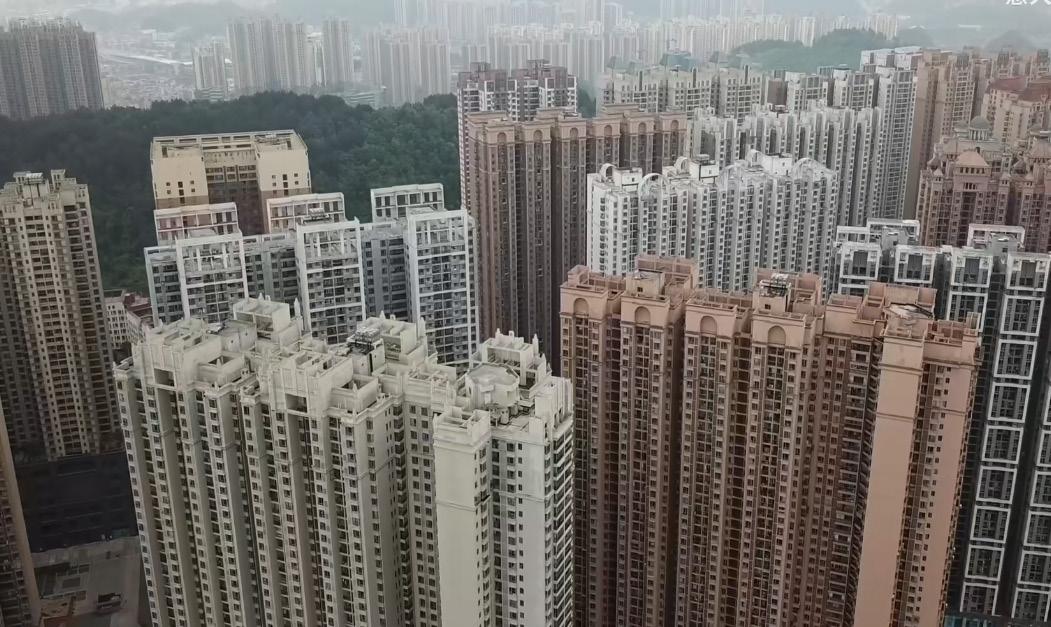
Xiaoqu: Private Interests First
After 1978, due to the demand for reform and opening up, the Chinese government had to prioritize the scarce funds for infrastructure construction to serve the national reform and opening up strategy. This further compressed the funds for public housing construction in the city of China. As a result, the Chinese government implemented a neoliberal housing system reform, gradually making real estate developers the primary providers of urban housing in China. In this context, most urban residents in the urban area moved out of old public housing and into new and larger apartments with higher living standards. Thus, xiaoqu 7 gradually became the most common living form for Chinese urban residents after the reform and opening up (FIG.4.7).
Although the residential buildings in different xiaoqu have different facades, decoration styles, and architectural forms, at the scale of living units, it can be seen that all floorplans still follow similar spatial logic (FIG.4.6). Especially compared to public housing in the era of China’s planned economy, all shared spaces have been removed, and every inch of space, except for elevators and stairs as circulation, is owned by different residents. The logic behind this typology is straightforward: every inch of space in the xiaoqu has clear ownership, respecting every yuan the owners have invested and the private ownership of investors. All ambiguous shared spaces have been removed to maximize the personal interests of residents and developers.
7. Xiaoqu (Chinese: 小区) is a Chinese term that refers to a residential area or community that is typically enclosed by walls or gates and is designed to provide a self-contained living environment.
112
FIG.4.7
A xiaoqu in Guiyang, which has consists of typical high-rise concrete apartment buildings.
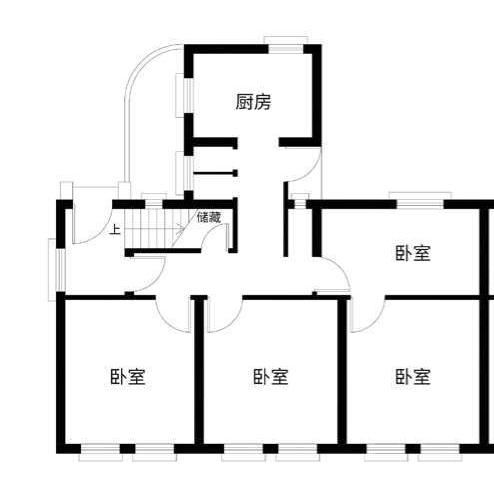
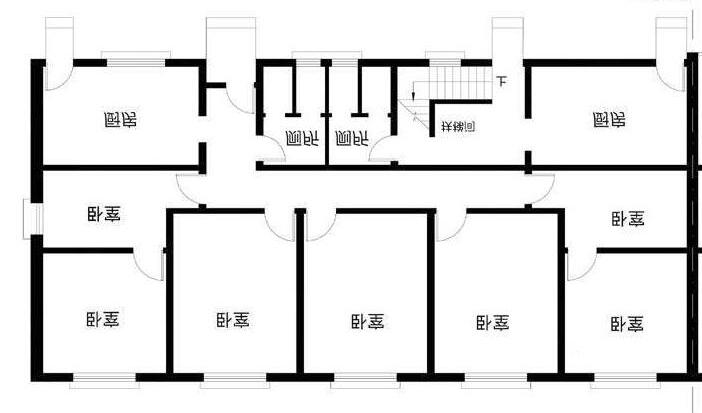
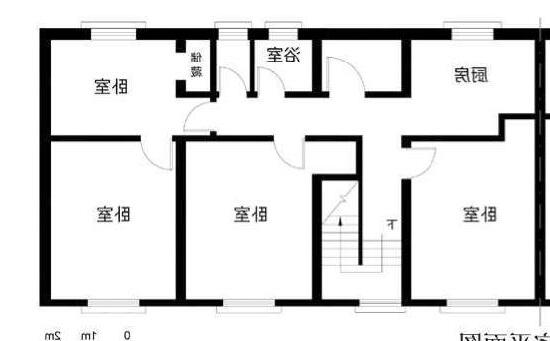
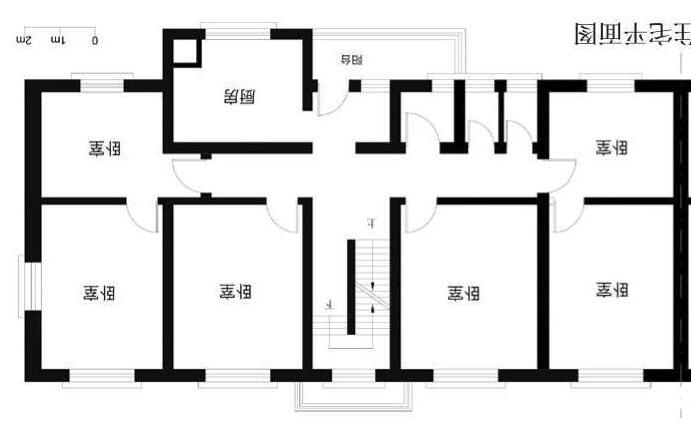




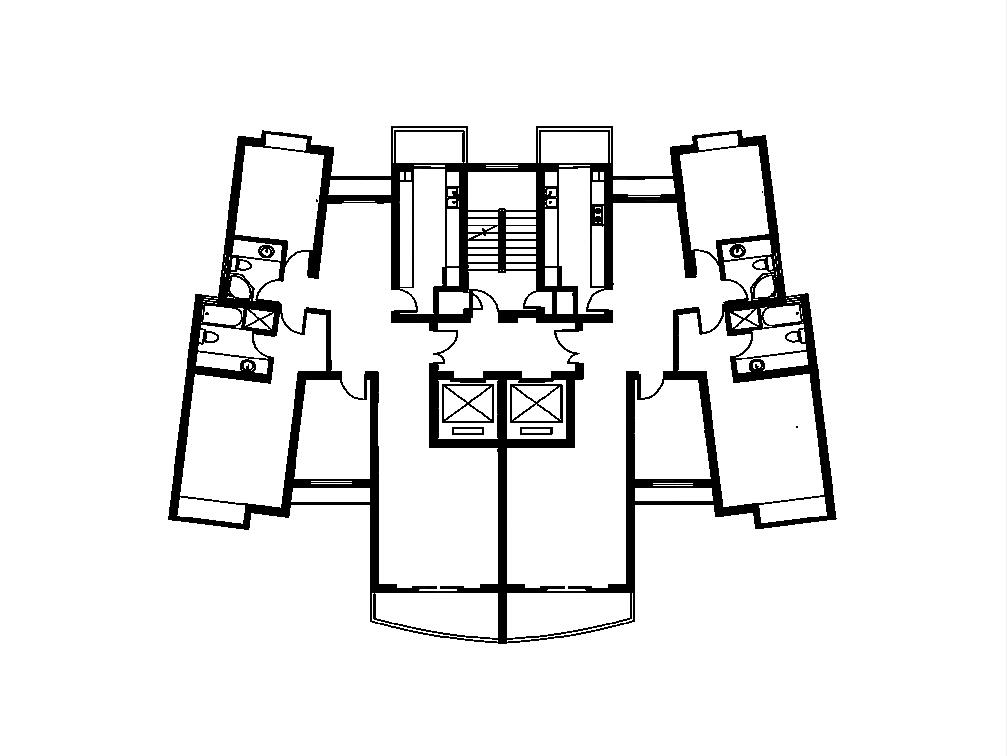











113 Type. A DANWEI (public housing) Circulation Program Expand Expand Expand Expand Program Program Program Circulation Circulation Circulation Type. B Type. C Type. D Circulation A3 1:200 A3 1:200 A3 1:200 A3 1:200 A3 1:200 Two Units Three Units Four Units Circulation Circulation Program Program Program Expand Expand Expand XIAOQU (residential compound) Shared space (kitchen, bathroom and toilet) Circulation Living units
FIG.4.6 Comparison scale 1: living units
8. Source: Dingzeng Wang, Planning and Design of Shanghai Caoyang New Village Residential Area, (1956).
9. Source: drawn by Xinhe Deng and Haowen Xu, From Model Community to Monumental Site: a Workers’ Village through History.
COMPARISON, SCALE 2 OWNERSHIP AND COMMUNITY
Danwei: the Picturesque Scenery
If contemporary Chinese xiaoqu are designed based on the rationality of commodity society, then the public housing during China’s planned economy era was more like an idealistic picturesque scenery. Taking Caoyang new village, the first public housing project in Shanghai, as example, the community planning is spacious, and the nine residential areas are separated by a large number of natural waterways, parks, and green spaces, creating an aesthetically pleasing environment without sparing costs in public spaces (FIG.4.8). The housing is interspersed between various clusters along roads, water bodies, commercial streets, schools, canteens, and hospitals, forming a complex scene with natural landscapes and public facilities.
Unlike commercial xiaoqu’s rigorous layout, these public housing areas have very open spaces (FIG.4.10). Gravel paths naturally divide them into south-facing gardens and north-facing courtyards, where every household grows flowers and vegetables. Residents use these spaces to relax and chat. These spatial characteristics demonstrate that public



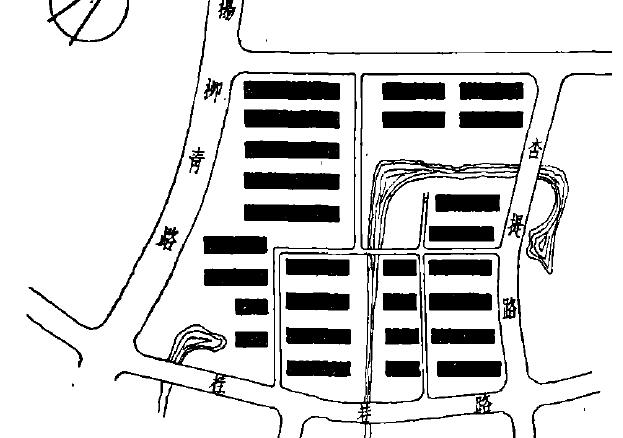
114
FIG.4.8 The relationship between water, landscape and housing in Caoyang new village 8

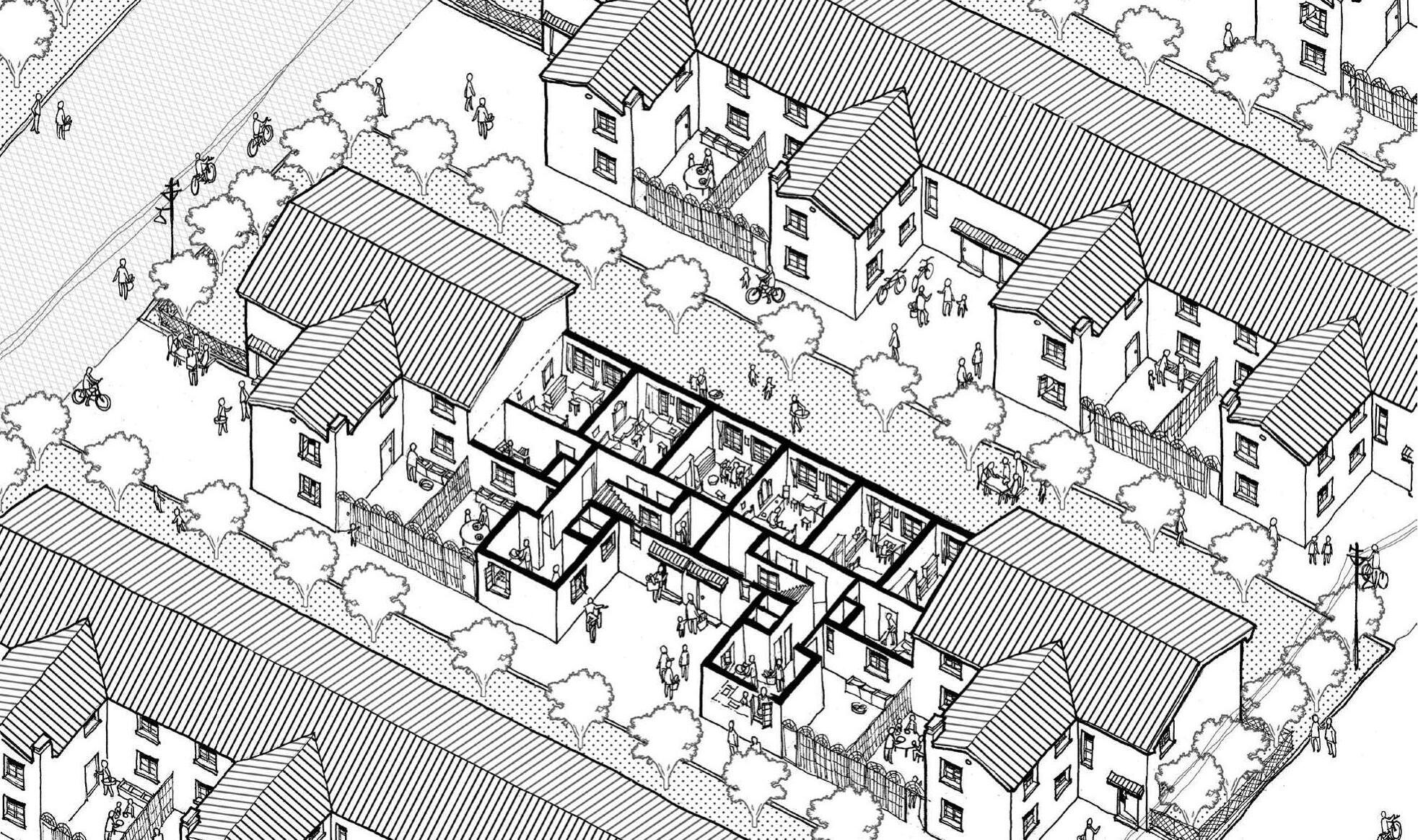
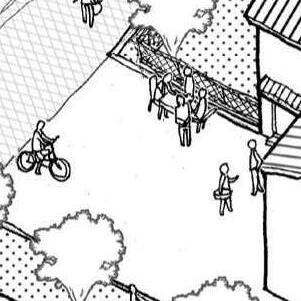
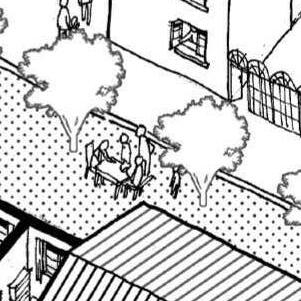
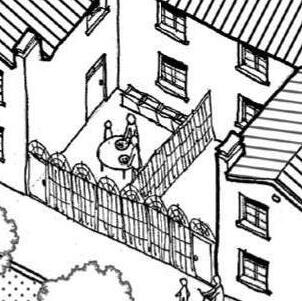
115
FIG.4.10 The outdoor space as the space for people to gather in Caoyang new village 9
FIG.4.9 The overview of Caoyang new village, 1950s
10. Guijie Din, The New Estate for Workers: “Happy Life For Ever”, (doctor thesis, Tongji University).
11. Chen Yang, From Model Community to Monumental Site: a Workers’ Village through History. (Shanghai: Tongji University Press, 2019).
housing construction during the planned economy era did not follow the commercial logic of “maximizing land development benefits” but instead aimed to create new spatial lives for urban residents of socialism through the idealistic “garden village.” The planners believed that emphasizing and complicating public spaces could cultivate a collectivist lifestyle (FIG.4.11). First, the internal service facilities of the danwei, from nurseries to middle schools, from small shops to staff hospitals, provided all the essential daily services for residents. Secondly, due to the long-term shortage of construction funds, the private spaces in these public housing areas have been strictly limited (per capita living space is less than 4 square meter), while public spaces are relatively abundant. Spacious front and back yards, assembly squares, parks, cultural centres, and more are where many activities occur: washing clothes, airing quilts, sewing, and cooking. When it is hot in the summer, many families eat and sleep in their yards rather than the bed room 10
With the limited private space and complex public space/facilities, the “collectivization of daily life” was promoted. This trend peaked during the 1960s of the People’s Commune era. The Communist Party government encouraged retired workers and housewives to serve the collective life of their danwei: cultured old workers and Communist Party members were responsible for organizing reading and newspaper activities; young housewives were mobilized to work in small factories organized by the community on the streets; older women went to public canteens to cook for everyone in the danwei; and even older women organized laundry and sewing groups to take care of the housework of all residents in the village, to solve the worries of dual-worker families
11. Obviously, the community planning strategy of public housing during the socialist era served economic considerations and had significant importance in cultivating a collectivist spirit of residents.
Xiaoqu: Capitalize the Space
If making a strict distinction, the open spaces surrounded by high-rise residential buildings in contemporary China’s xiaoqu should not be called “public spaces”, because these spaces only serve the residents
116
danwei
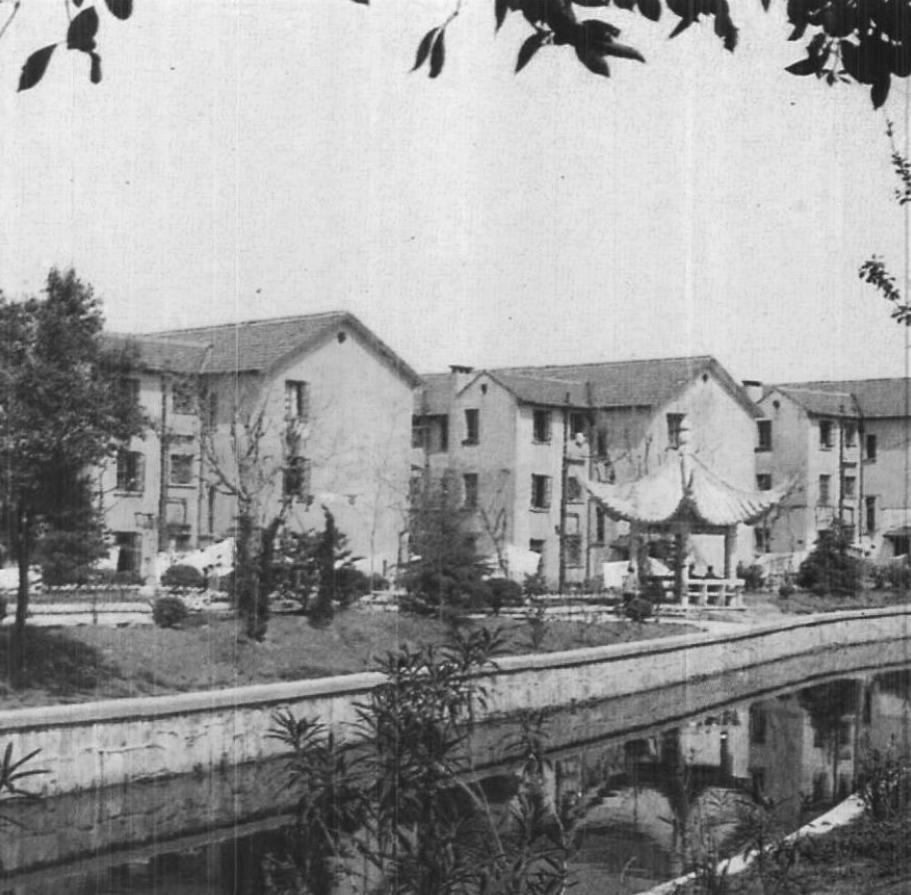
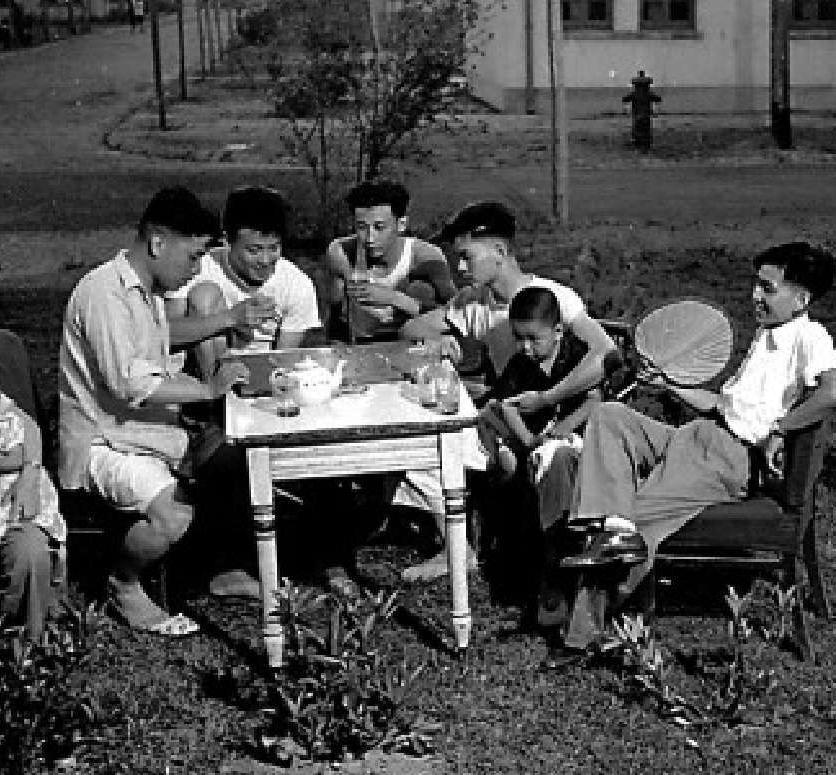



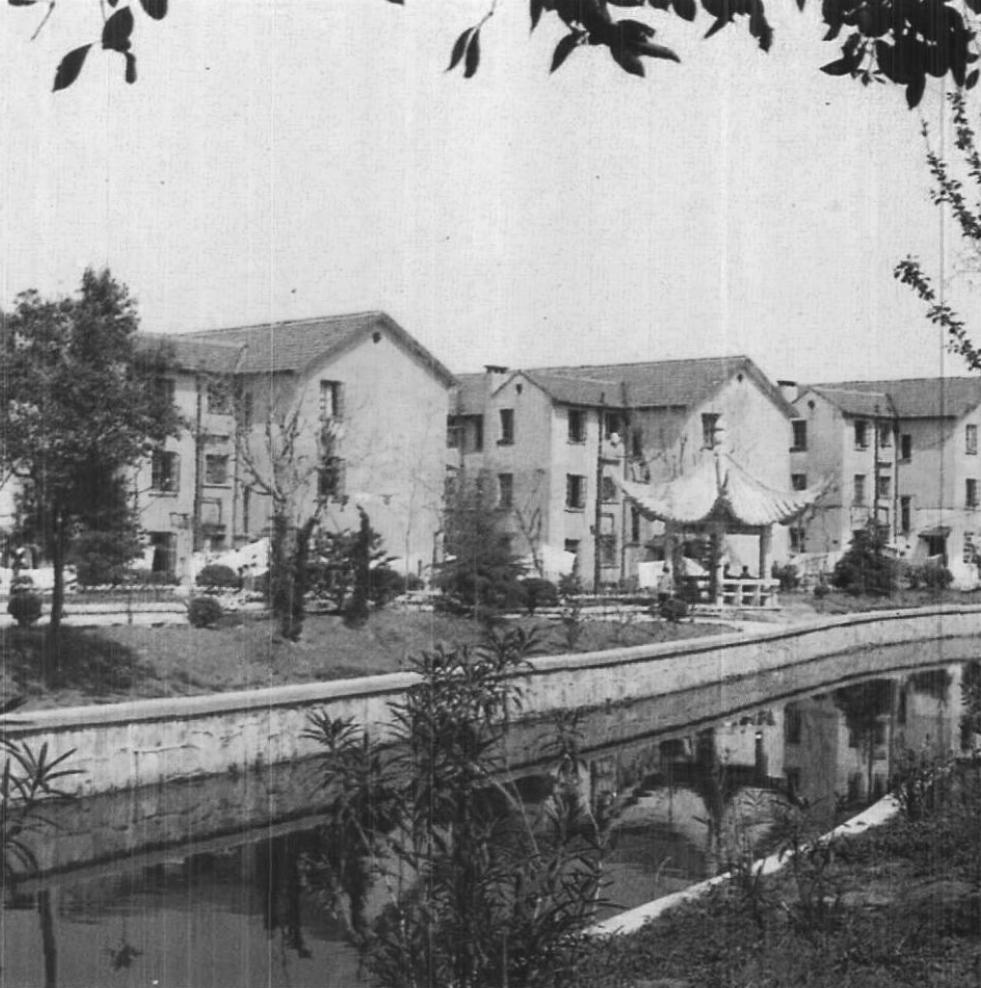
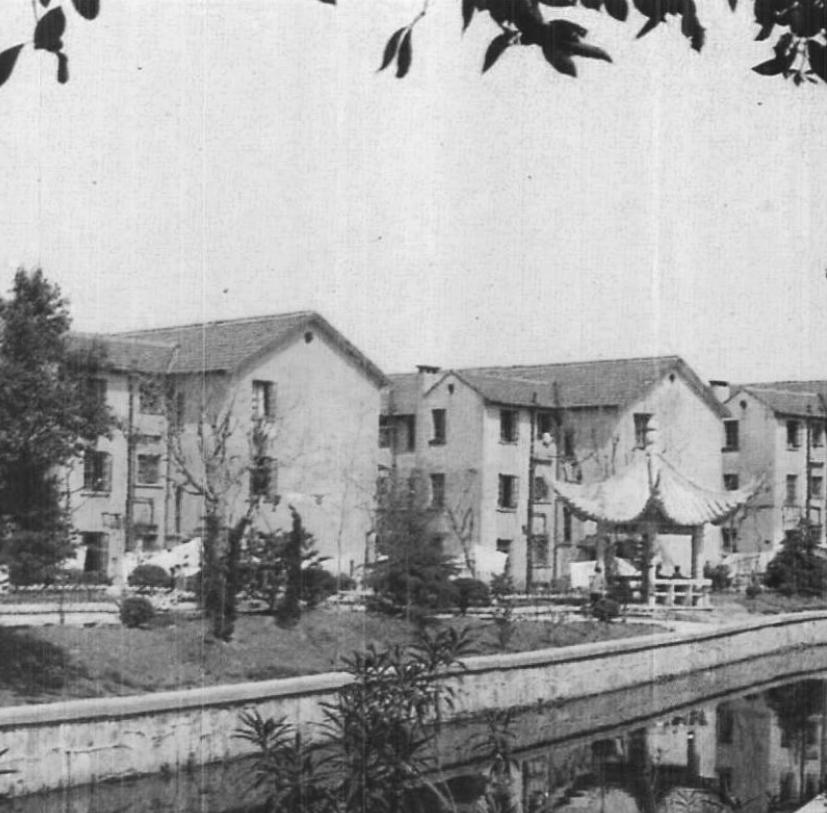


117
working administration entertainment living food education medical living living
FIG.4.11 Danwei, the diversity of space


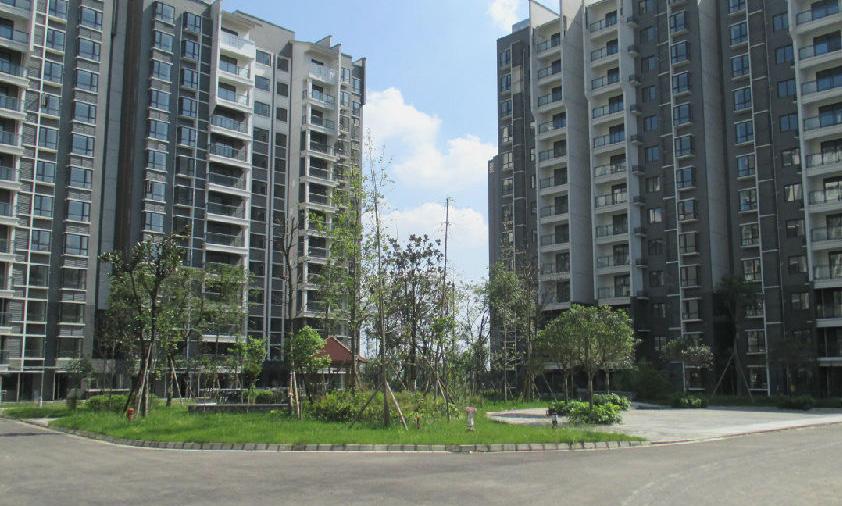
The open space in China’s xiaoqu. These spaces usually manifest as circular flower beds, fountains, and garden landscapes with obvious artificial traces
of the xiaoqu and their visitors, not the general public. When purchasing a property in a xiaoqu, the residents must purchase a certain ratio of green space and continuously pay for its maintenance. In fact, even though the most of China’s xiaoqu do not strictly control the access of personnel like the gate communities in the United States 12, the closed and introverted form also makes it rare for people outside the community to walk or stroll in a strange xiaoqu (FIG.4.12).
These open spaces within Chinese xiaoqu have generally simple recreational facilities and decorative designs, manifesting as circular flower beds, fountains, and garden landscapes with obvious artificial traces. There are also open waters, green spaces, and exotic plants in highpriced middle-class xiaoqu. However, these spaces are usually only used as landscapes rather than social activity spaces (FIG.4.13) 13. The lack of social functionality in these open spaces can be understood from two perspectives.
12. Gated communities are residential neighborhoods enclosed by a physical barrier, such as a fence, wall, or gate. These communities typically offer amenities such as security personnel, surveillance cameras, and controlled access points, and are often marketed as providing a safer and more exclusive living environment. In the American context, gated communities are generally considered to represent the problem of social isolation.
13. Dieter Hassenpflug, the Urban Code of China, trans. Mark Kammerbauer (Basel: Birkhäuser GmbH, 2010).
Firstly, the cost of these open areas is also calculated in the cost of purchasing a property in xiaoqu, and residents must also pay maintenance costs regularly. However, it is obvious that from an economic perspective, the lower the cost of these spaces, the better it is for homebuyers. Because these spaces, fundamentally speaking, do not “belong” to the residents, the property owner cannot make money from this part of the space when selling their property. This is contradictory to the investment logic of housing in China’s real estate era. Therefore, both real estate developers and property owners hope to reduce these open spaces’ construction/maintain costs as much as possible within an acceptable range. Secondly, under the guidance of the logic of modernism urban development movement in China, the community has become a “residential machine,” meaning that the community’s existence is only for housing and personal activities. In fact, Chinese urban residents rarely need to complete activities in these open spaces. If they need to appreciate natural landscapes, they can go to parks in the city; if they need to get together with friends, they can go to malls, cinemas, or restaurants. All activities will point to another part of the city rather than just the xiaoqu. Therefore, it is not meaningful to put the cost and effort into these open spaces (FIG.4.14).
118
FIG.4.12
The boundaries of xiaoqu are typically made up of concrete walls, tree hedges and gatekeepers, takes on a similar enclosed form to gated communities.
FIG.4.13

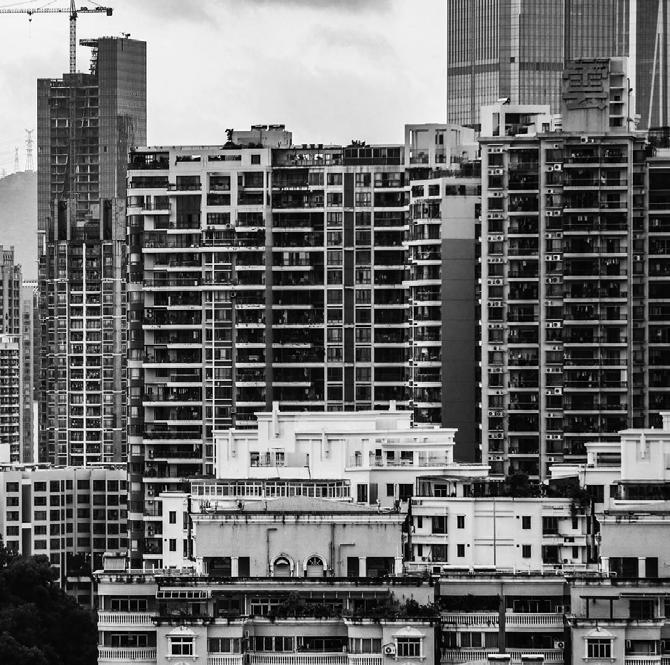



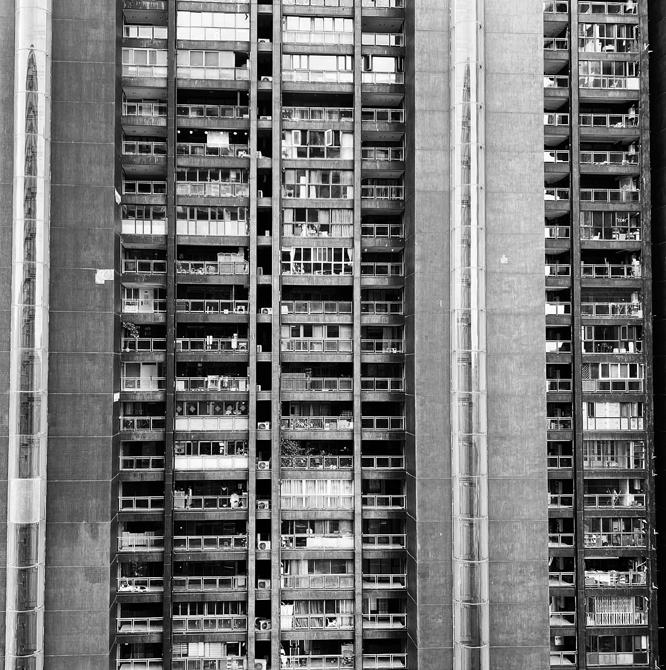



119 living living living living living living living living living xiaoqu
FIG.4.14 Xiaoqu, the monotonicity of space
14. Source: From Model Community to Monumental Site: a Workers’ Village through History.
15. Guijie Din, The New Estate for Workers: “Happy Life For Ever”, (doctor thesis, Tongji University).
16. The masterplan is redrawn by author from: Xinyi Zhu, From Model Community to Monumental Site: a Workers’ Village through History.
COMPARISON, SCALE 3 OWNERSHIP AND CITY
Danwei: the Enclosed Programs
After 1949, the Chinese Communist Party viewed the city walls of China as “symbols of imperial rule and feudalism”. The ancient walls of Beijing and other cities were extensively demolished. However, the enclosed urabn form was preserved in a different way in the planned econemic city. During this period, this form could be manifested as enclosed production and living institutions, danwei. Danwei was an attempt by the Chinese government to merge urban residents’ work and life. The programs in danwei included housing, workplaces, education, health centres, and leisure facilities (FIG.4.15). As government funds increased, danwei would gradually add more facilities and functions. This spatial concept that emerged in planned-economy China aimed to make people living in danwei as self-sufficient as possible. “In this way, residents almost do not need to leave these large courtyards to meet all the services needed for daily life 15” This space’s side reveals China’s anti-urban tendency during the planned economy era. The city is viewed as a collection of countless villages (danwei) that can be self-sufficient. Each of these basic planning units is a part of the city and a small independent unit that could operate independently (FIG.4.16).
At the same time, it should be realized that the premise of this urban organizational form is to have a powerful core (in the planned-economy era, the Chinese government) to organize and plan everything. That is, the values of planned-economy China give the government the power and obligation to be responsible for all aspects of residents’ lives, from housing, entertainment, medical care to education. Due to the nationalization of factories, public facilities, infrastructure, and housing during the planned-economy era, the Communist Party government had the ability and motivation to distribute relatively evenly the infrastructure and public services that were unfairly dispersed throughout the city to each danwei. Therefore, the result is that the urban texture of planned economy China shows single and complex state at the same time. “Single” means that the entire city is composed of danwei with the same spatial structure, while “complex” refers to the rich and diverse programs and activities presented in each danwei, except for housing, making the daily life of residents tend to be collective and complex.
120

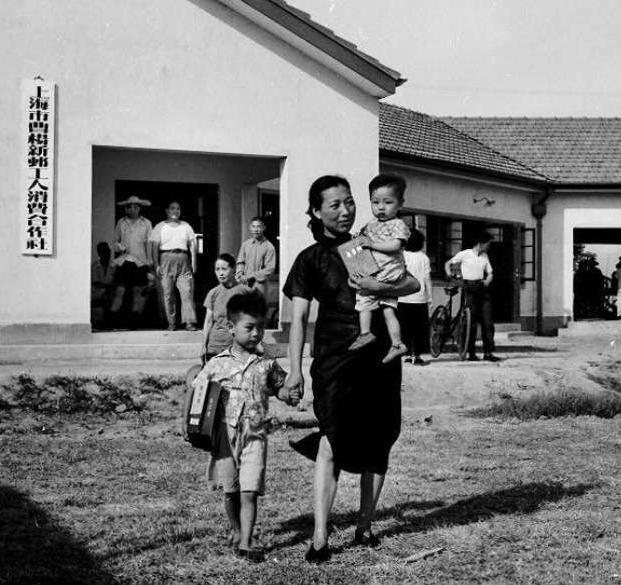

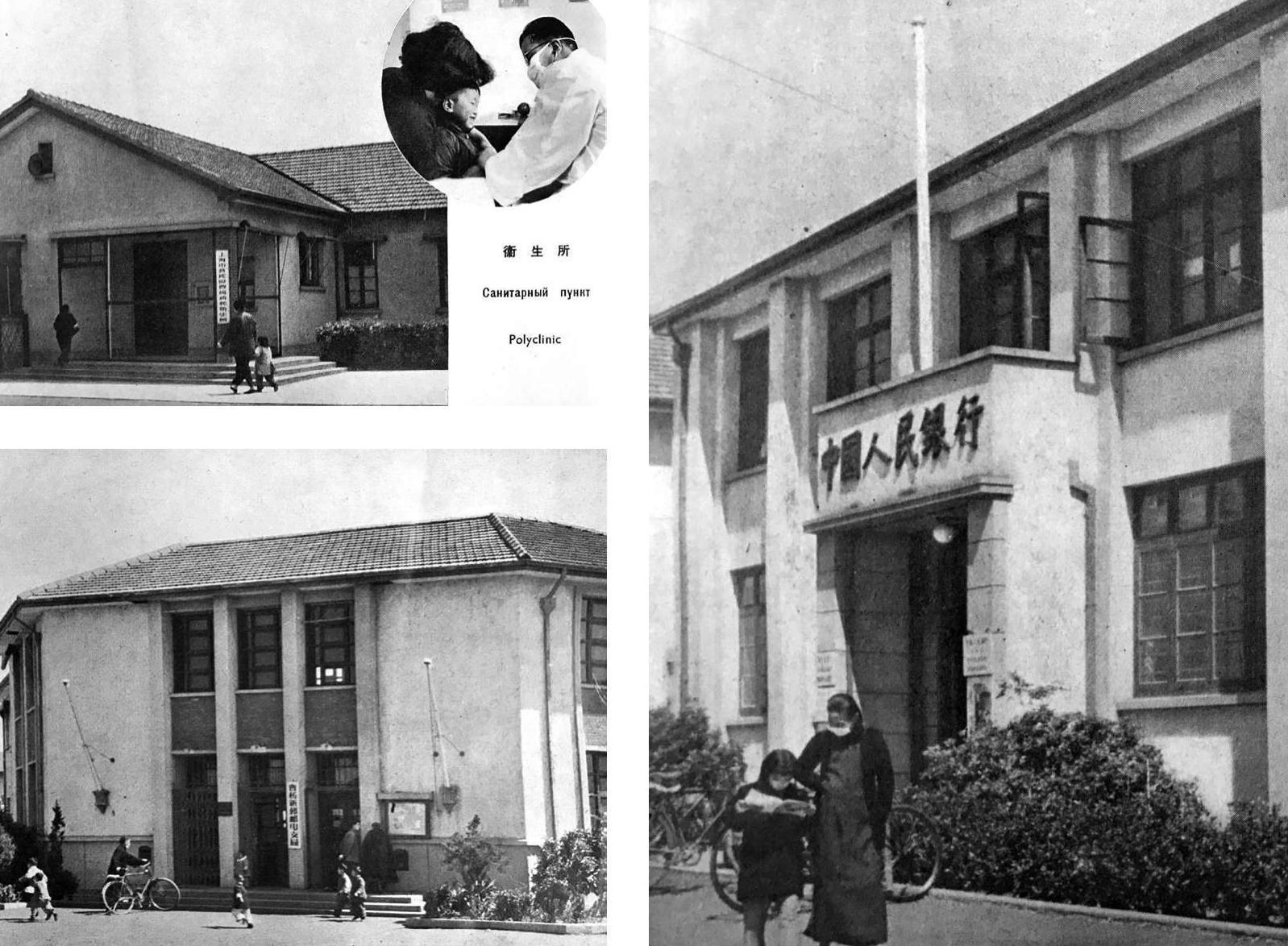
121
1. public bathhouse
2. cooperatives
3. store
4. clinic
5. post office
6. bank
FIG.4.15.1
1 2 3 6 5 4
The public service in Caoyang new village, 1957 14

122 1. kindergarten 2. primary school 3. middle school 4. business school 5. service point 6. store 7. outdoor market 8. repair center 9. business center 10. public bathhouse 11. restaurant 12. hospital 13. clinic 14. cultural palace 15. theater 16. police station 17. neighbor committee 18. engineer agency 19. housing management 20. gardening agency 21. park 22. fire station 23. nursery garden 24. sewage plant 25. dyestuff factory 26. garment factory 27. measuring tool factory 28. stopwatch factory 25. dyestuff factory 26. garment factory 27. measuring tool factory 28. stopwatch factory 29. warehouse 30. free space 31. swimming pool 32. tool factory 33. park 34. vegetable station dwelling public service and factory
FIG.4.15.2 The masterplan of Caoyang new village, 1980s 16
The City

123
danwei danwei danwei danwei danwei danwei danwei danwei danwei
FIG.4.16 Planned economy city, 1949-1978. As the basic urban unit, each danwei have multiple programs to meet the needs of residents in it. At the same time, each danwei shows a state of isolation from each other.
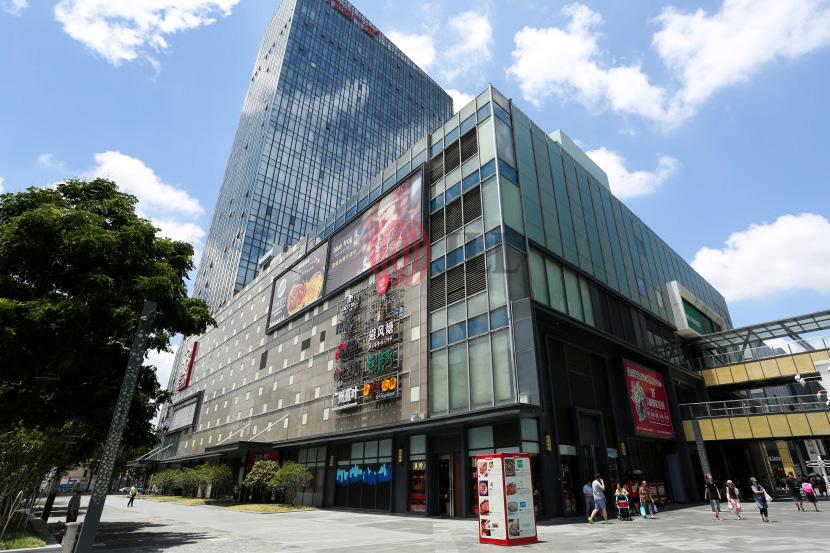
Xiaoqu: the Exclusive Space
Xiaoqu in China has become the main form of urban living since the reform and opening-up policy in 1978, which could be considered as part of China’s privatization reform, closely related to the market-oriented reform of China’s housing system. The core objective of this neoliberal reform in the housing system is to relieve the heavy financial burden on the government. These burdens are not only from the housing construction and maintenance entirely borne by the state, but also from various long-term loss-making state-owned programs, such as cinemas, educational institutions, and entertainment facilities in danwei. In the process of completely abolishing the danwei system and privatizing the public housing within it, various programs in the danwei, such as cinemas, clinics, and state-owned stores, have also been shut down and marketized. The result is the disconnection of programs from the original residential community. Instead, privately owned and profitable programs that are self-financed and selected by the market have become independent blocks in the city (FIG.4.17) 17 .
Therefore, “exclusivity” is a keyword in the context of contemporary Chinese cities. Contemporary Chinese cities are closed and homogeneous, with ubiquitous walls, fences, and gates, presenting a blocklike scene formed by fragmented and disjointed space 18. These blocks contain manufacturing and service industries, public facilities such as courts and urban management, as well as land used for educational institutions and social welfare facilities (FIG.4.18). However, the majority of these blocks are residential areas, namely, the so-called xiaoqu. This overall urban texture is characterized by fragmentation and homogenization, completely breaking the uniform spatial structure of the planned economy era.
17. Li Zhang and Aihwa Ong, ed,. Privatizing China: socialism from afar, (Ithaca : Cornell University Press, 2008).
18. Dieter Hassenpflug, the Urban Code of China, trans. Mark Kammerbauer (Basel: Birkhäuser GmbH, 2010).
19. Duanfang Lu, Remaking Chinese urban form: modernity, scarcity, and space, 1949-2005, (London ; New York : Routledge, 2006).
“
In the language of spatial design, xiaoqu is the demarcated area defined not only by walls, fences, and buildings but also by deliberately crafted surrounding streets and green spaces that give it an isolated character
19.” Modern residential areas clearly define their boundaries and distinguish between the inside and outside areas. In fact, the internal road network of xiaoqu is not considered part of the city.
124
FIG.4.17
Wanda Plaza, Shanghai. Chinese cities today are filled with huge shopping malls like these. These malls are huge, often taking up an entire city block.
 FIG.4.18
The urban context in Shanghai. It could be clearly to notice the different between each block. Contemporary Chinese urban space presents exclusivity with each other
FIG.4.18
The urban context in Shanghai. It could be clearly to notice the different between each block. Contemporary Chinese urban space presents exclusivity with each other

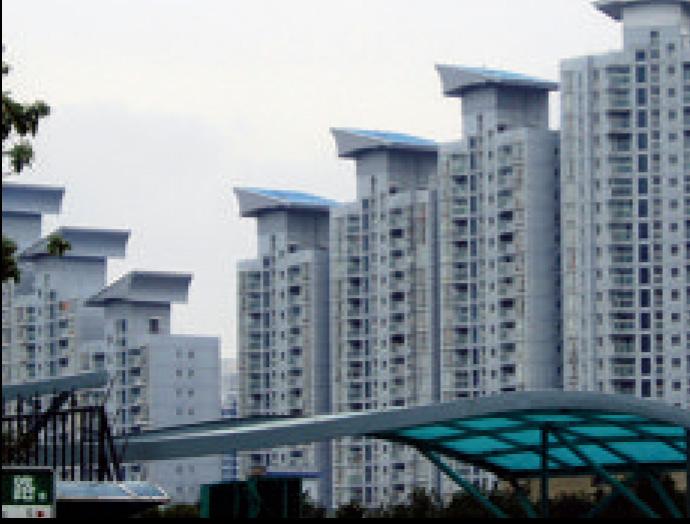
More and more xiaoqu are equipped with fences, iron gates, hedges, and other similar measures to isolate themselves from the outside world. Therefore, Chinese enclosed xiaoqu may seem to be becoming more and more like American “gated communities,” but they are fundamentally different. The essence of an American gated community is to provide residents with a safe living environment and continuously absorb programs (such as stores, public services, and infrastructure) from the city to serve its residents. It is a reflection of social segregation in the United States. In contrast, China as a nation state, xiaoqu is more of a specialized space and results from capitalist urbanization. In this process, many non-residential functions of residential areas during the planned economy era were excluded to urban open spaces (FIG.4.20).
Furthermore, the enclosed form and single function of xiaoqu caters to the needs of the government or private developers in many ways. For example, this form usually matches the size of the block defined by urban development. Secondly, developers usually give each community a distinctive feature to sell successfully and promise an emotional connection to the residents inside the xiaoqu. In order to render this identity and class uniqueness, a clear feature must be provided in the xiaoqu. Separating the residential area from its surrounding environment helps achieve this goal, with similar techniques including adopting a uniform decoration style, colour characteristics, architectural style, or roof decoration (FIG.4.19). This is a clever hybrid of capitalism and collectiveism during the planned economy era in China. The characteristic of the Chinese-style residential area is homogeneous and rejects to mix with other program. Each xiaoqu more or less represents a specific social class or income group, which is evidenced by the repetition of its architectural form. Attempting to establish a socially mixed residential area means questioning the identity of the overall community. Therefore, the xiaoqu that tries to mix with the city and provide different types of spaces is actually difficult to achieve commercial success in the real estate market.
126
FIG.4.19
The similar roof decorations of apartments in xiaoqu, Shanghai.
commercial
The City
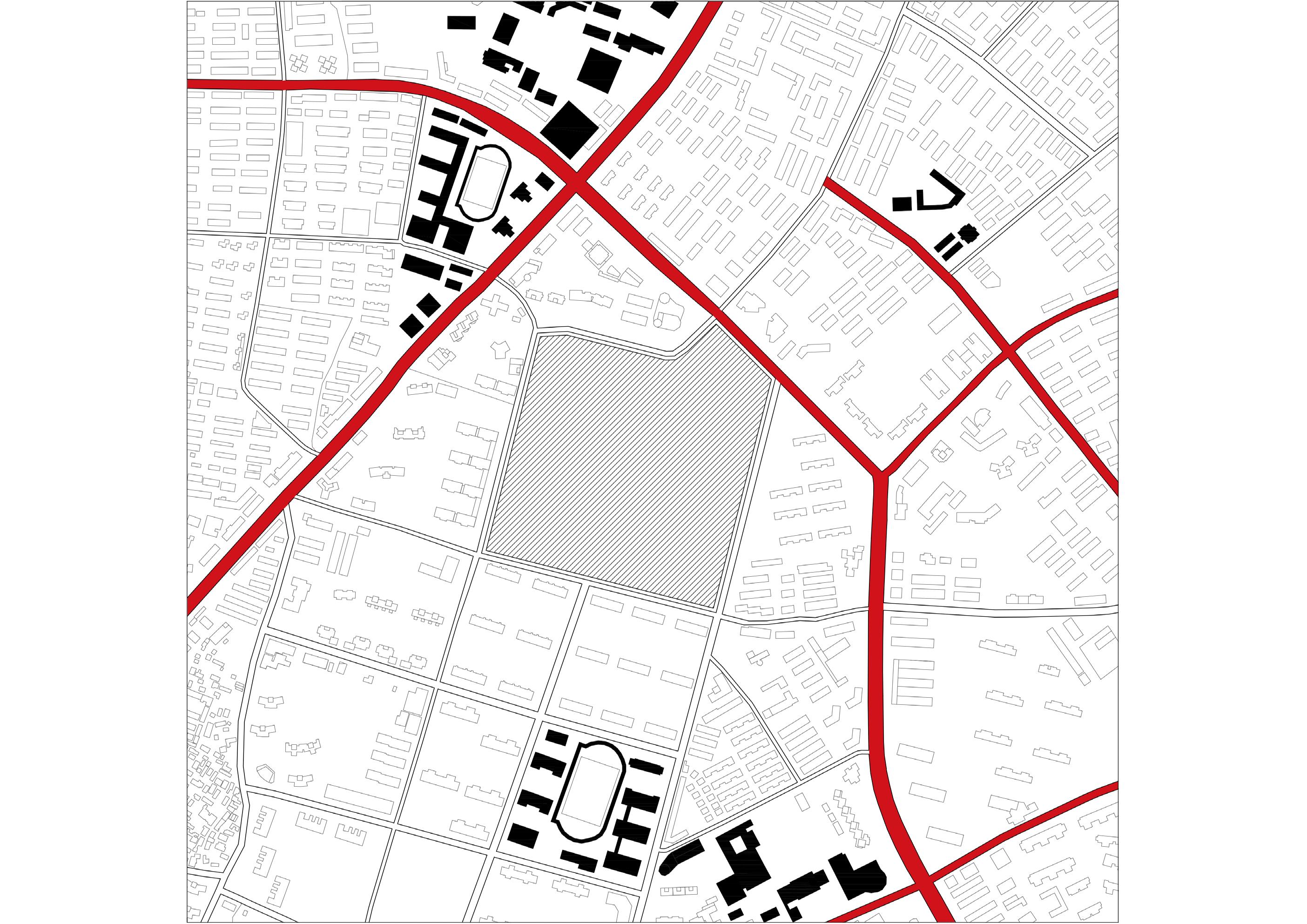
major road program
127
FIG.4.20
Market economy city, 1978-now. In contemporary Chinese cities, each block has only single function and is separated from each other. This is closely related to the private ownership of the program and the dewlling.
district administration CBD education medical residential compound residential compound residential compound
DESIGN TEST
THE NEO -HOMOGENEOUS URBAN IMAGINATION
Rethinking the Ownership
By comparing danwei’s public housing from the planned economy and contemporary xiaoqu’s commercial housing in China, it could be clear how a country’s macro policy and idology can affect the forms of the city fabric and housing system. When housing is viewed as national welfare and a tool for cultivating collectivist spirit, danwei’s public housing demonstrates the importance of collective life and public spaces at all scales of living units, communities, and cities. Conversely, when housing became a private property and investment object after the reform and opening up, maximising its owners’ profits became the essential logic for xiaoqu. This logic further led to simplifying open space in xiaoqu and separating programs in the entire city. The differences in ownership deeply affect the living forms of urban residents and result in completely different relationships between residents, communities, and the entire city.
Xiaoqu, as a form of living driven by investment, exhibits functional simplicity and spatial exclusivity. These attributes are deeply connected to a framework based on the logic of financial capitalism. The privatisation of ownership makes owners tend to maximise their individual interests, thus compressing the open space of communities and the potential of projects. However, in the continuous decline of China’s real estate industry today, we can see that this investment-driven urban housing no longer makes sense because the investment property of housing has been weakened. On the contrary, the existence of property taxes makes everyone question the meaning of housing “ownership”. In the post-real estate era, “owning” a house is wealth or a burden?
The Neo-homogeneous City
As the Chinese real estate market collapses, a meaningful question will be proposed: what new forms of living could we achieve if jumping out of the current housing system based on individual housing ownership? This chapter will use the same site as Chapter Three as a check experiment, while this chapter’s design
128
Maintain the Urban Development Process
The Government Real Estate Developer
Land Sell as Financial Source
Property Sell as Profit Residents
129
FIG.4.21.1 The old housing system based on land development and private ownership.
test will lead to a completely different pathway. The discussion of ownership in chapter four will lead to a “communist-style” urban imagination called “The Neo-homogeneous City”. With the collapse of the real estate market, the value of housing as private property has been diminished; it is no longer a profitable investment but simply a shelter for the human body. Based on this premise, residents will collaborate with the government to construct public housing at a cost price (state-owned housing). Urban residents will continue to pay rent and property taxes for this new housing system. Then, a new form of urban living can be established through the cooperation between urban residents and the government and the transformation of housing ownership (FIG.4.21).
Based on such logic, a new mega-complex living system could be imagined in city China. Due to the change in housing ownership, the more significant change is actually the texture of the whole city rather than the change in urban living typology. The change in housing ownership gives the legitimacy of diversity programs a chance to be part of urban living rather than an isolated block far from the residential area. This, in turn, gives the city and urban residents infinite possibilities for new living forms.
130
131 The Government Real Estate Developer Provide Housing with Cost Price Residents Have the user-ship Rather than Ownership Housing Tax as Financial Source Residents
FIG.4.21.2 The new housing system based on property tax and public ownership.
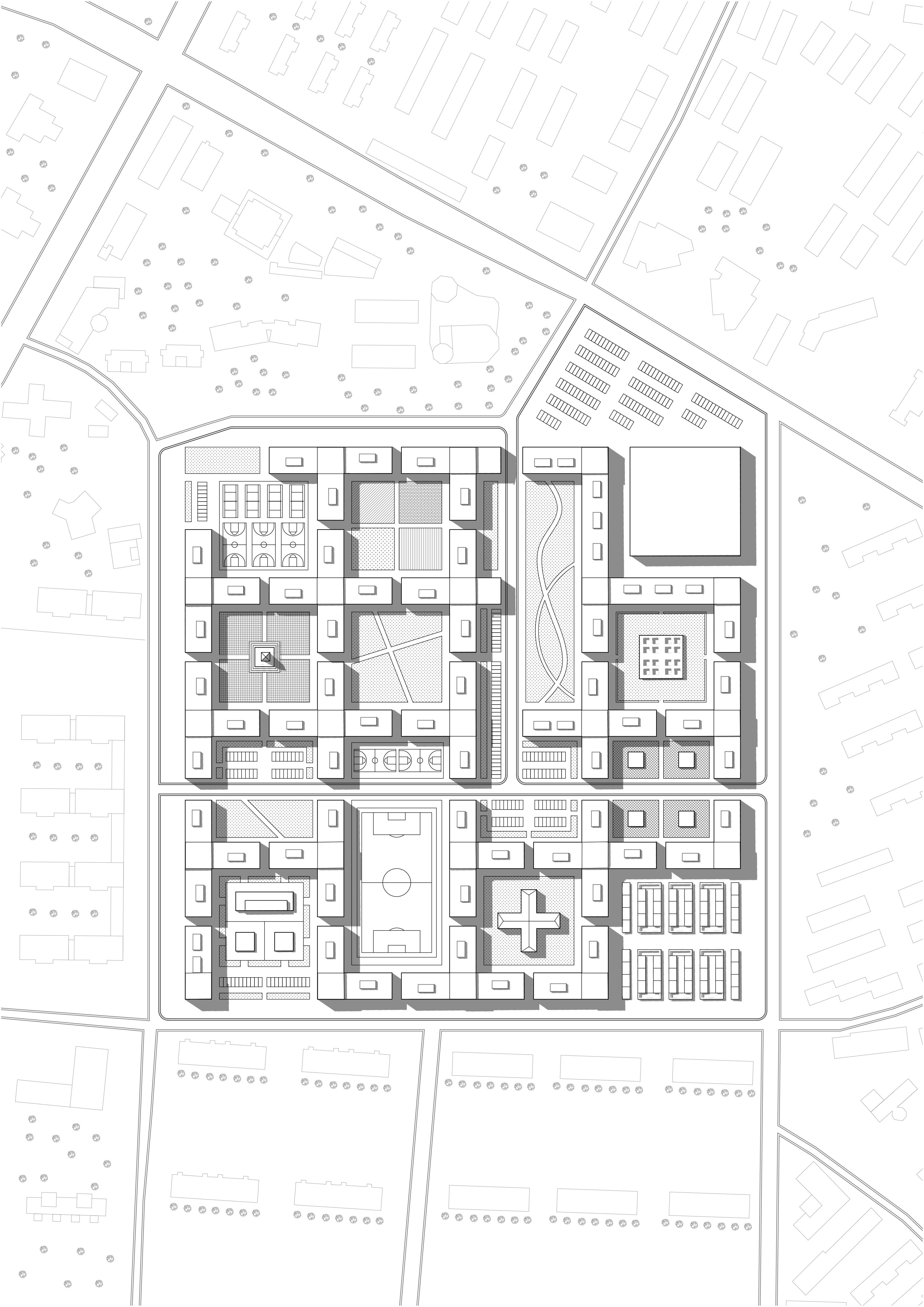
132
FIG.4.22.1 The Neo-homogeneous City, the Masterplan

133
FIG.4.22.2 The Neo-homogeneous City, the zoom-in plan

FIG.4.23.1 The Neo-homogeneous City, the zoom-in axonometric drawing
134
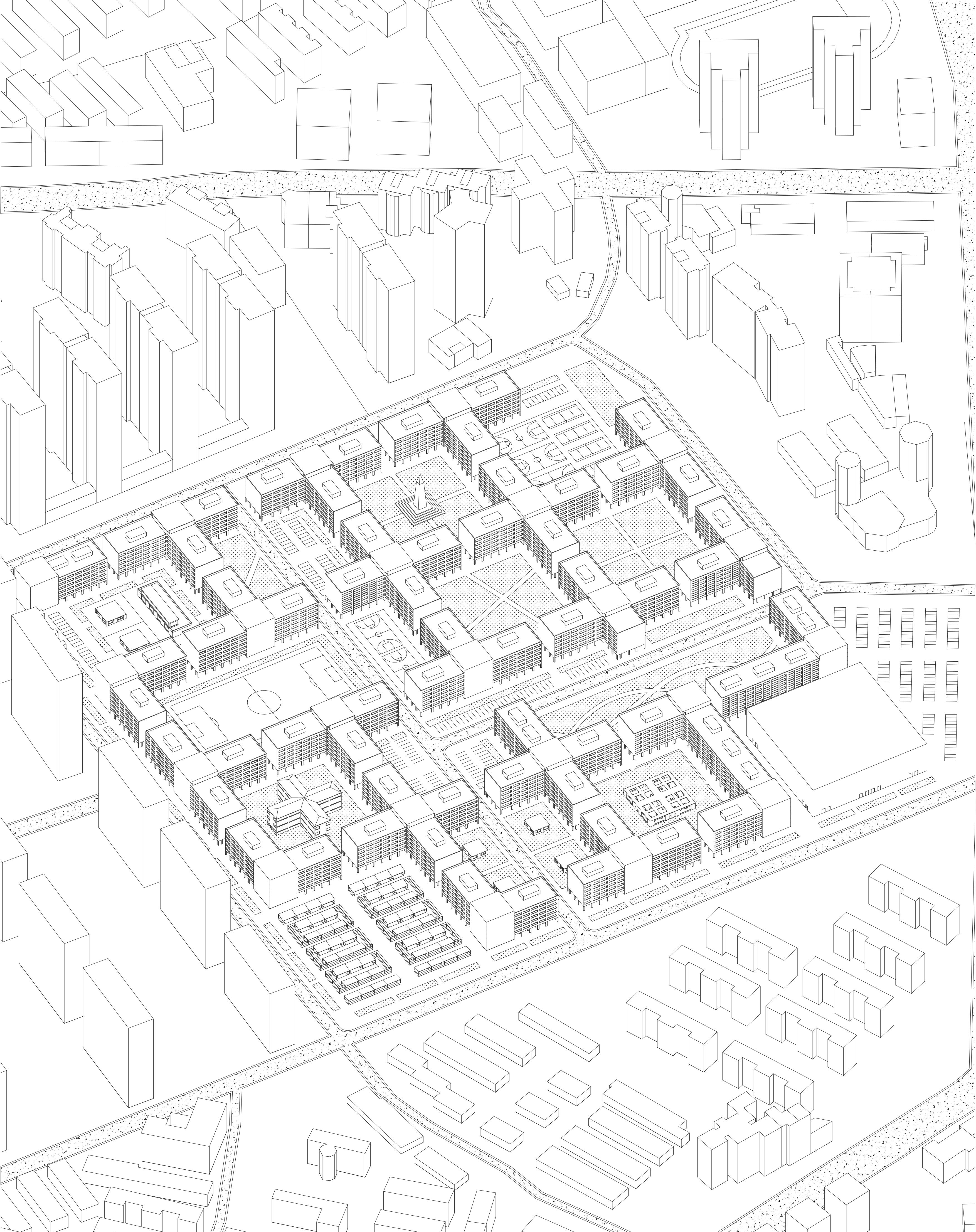
135
FIG.4.23.2 The Neo-homogeneous City, the axonometric drawing

136
FIG.4.23.3 The Neo-homogeneous City. The new ownership framework gives the legitimacy of diversity programs a chance to be part of urban living rather than an isolated block far from the residential area.

FIG.4.23.4 The Neo-homogeneous City, toward the life of complexity. The word neo-homogeneous means the city becomes a city that is so complex and similar at the same time. Every program and urban living are hybrid together as much as possible and lead to the infinite complexity of urban life.
137
Zoom In living living living living living living living living living residential compound
The City
medical residential compound residential compound residential compound commercial district administration education
CBD
138
FIG.4.24.1 Market Economy City, 1978 - Now
living + medical living + leisure
living + working living + nature living + sport living + food living + social care
living + living + education neo-city complex
Zoom In
The City
neo-city complex neo-city complex neo-city complex neo-city complex neo-city complex neo-city complex neo-city complex neo-city complex neo-city complex
139
FIG.4.24.2 The Neo-homogeneous City
The Planned Economy City
danwei danwei danwei danwei danwei danwei danwei danwei danwei
residential compound
medical education
The Market Economy City living medical living administration working leisure living education
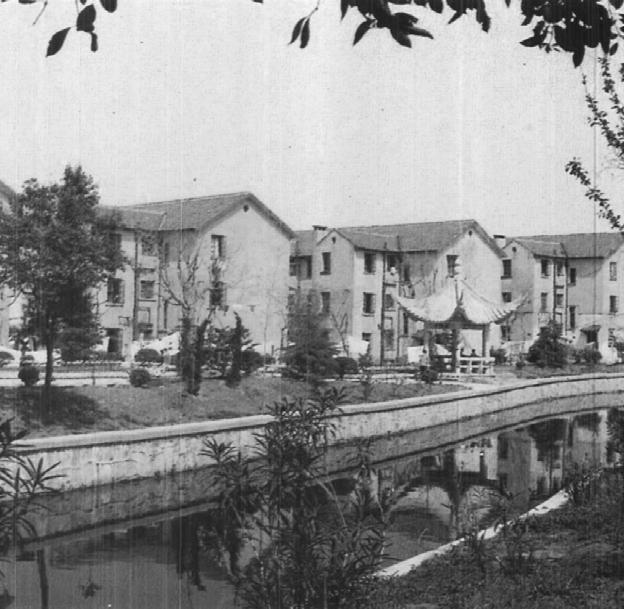


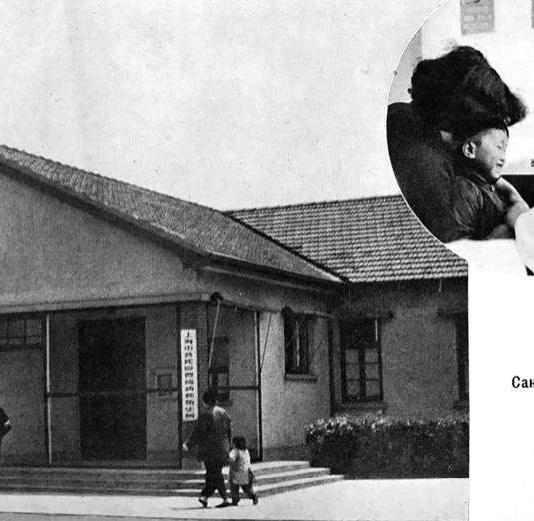


residential compound residential compound administration commercial district CBD
Danwei living living living living living living living living living
Residential Compound
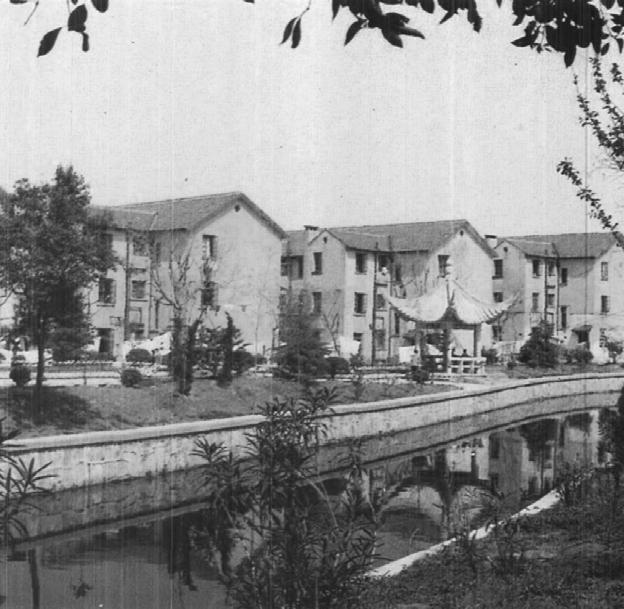
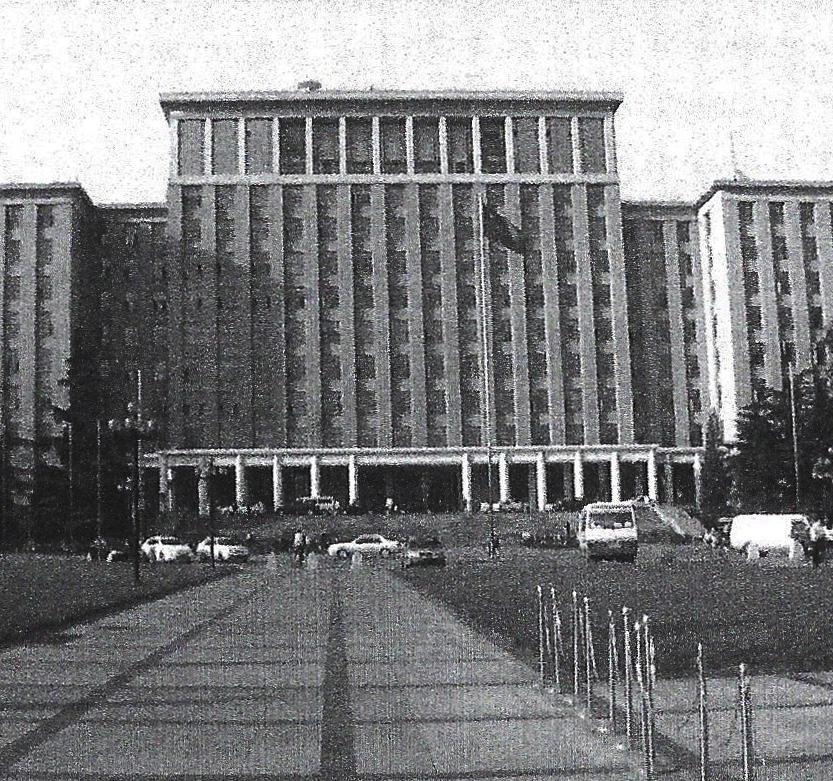
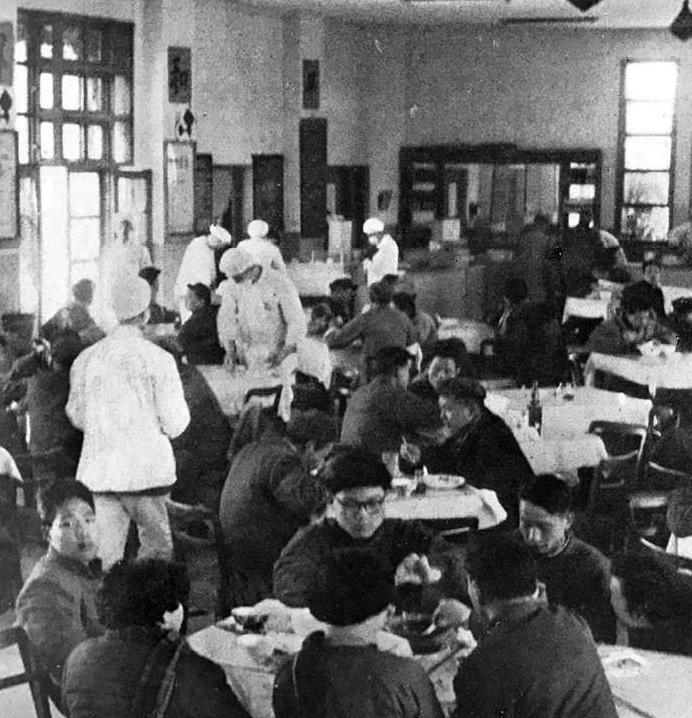
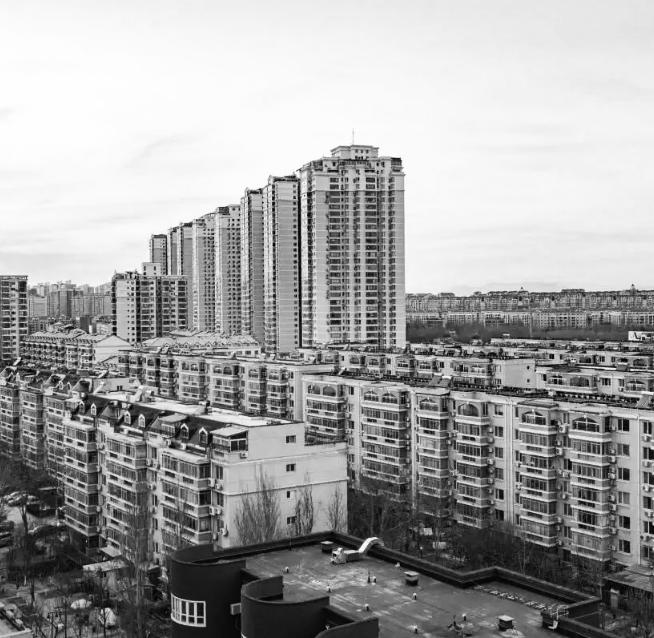








140
The Planned Economy City, 1949 - 1978 The Market Economy City, 1978 - Now
medical education residential compound + + + residential compound residential compound administration commercial district CBD
Residential Compound +
The Neo-homogeneous City
neo-city complex neo-city complex neo-city complex neo-city complex neo-city complex neo-city complex neo-city complex other neo-city complex
Neo-city Complex living+ living+ living+ living+ living+ living+ living+ living+ living+

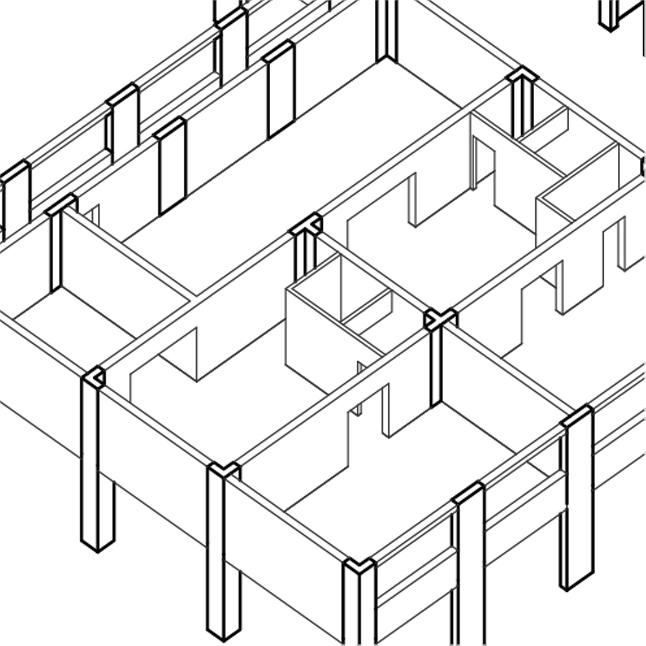




The Post-realestate City living + sport living + living + food living + nature living + education living + social care living + working living + leisure living + medical



The Post-real-estate City

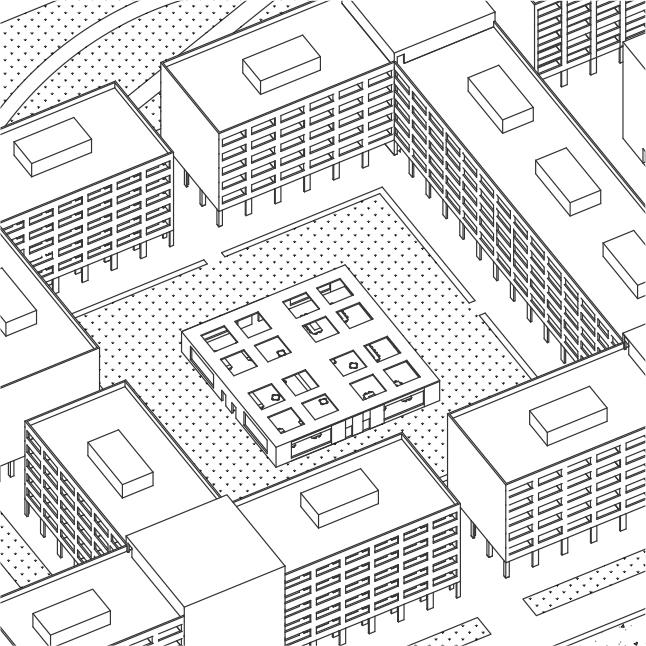




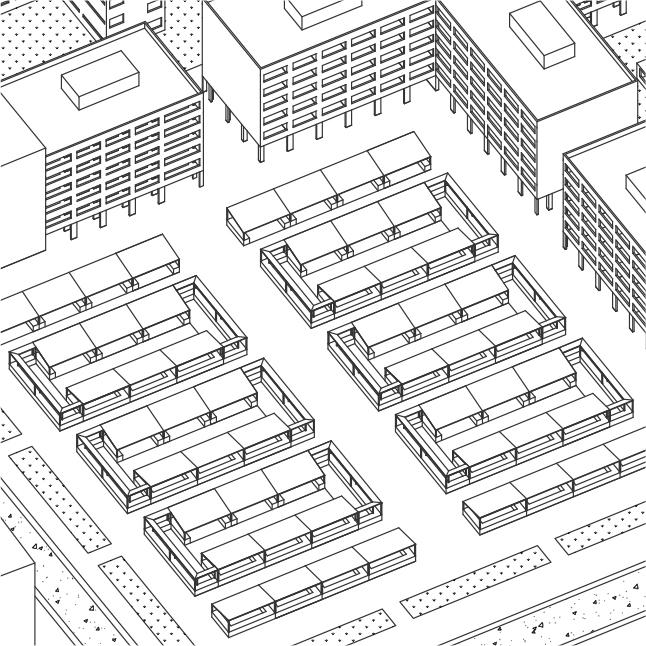
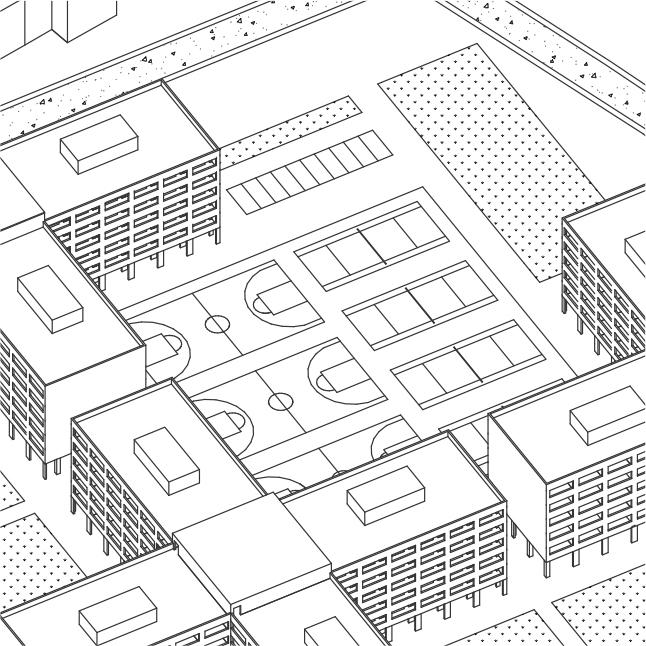
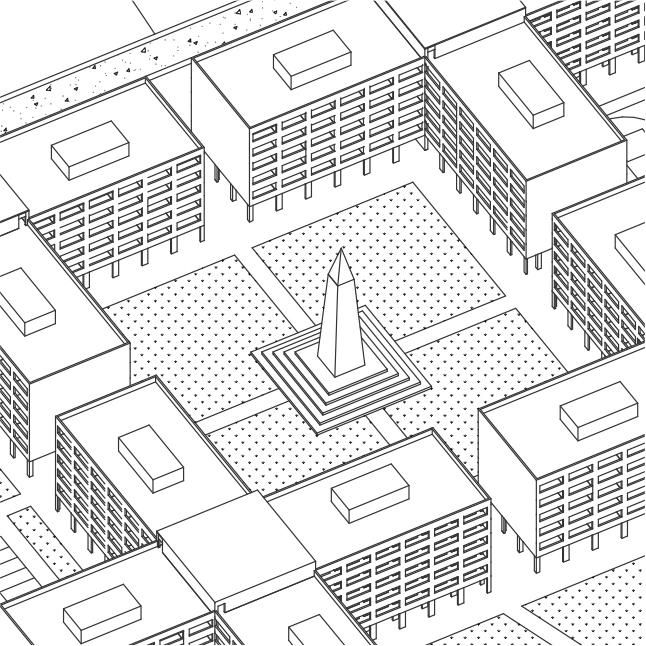
The Neo-homogeneous City
141
THE CHANGING LIVING FORMS AS THE PROJECTION OF CHINA’S MODERNIZATION
142
Starting from a poor, planning, nearly bankrupt economy in the late 1970s, China has emerged as a world economic superpower over the past four decades. China’s economic miracle has profoundly challenged the conventional wisdom that property rights protection, an independent legal system, and a democratic government with checks and balances are requisite to support long-term growth. By international standards, China has a low ranking in the supply of all these institutional fundamentals.
To be fair, the miracle of China’s economy is just as unbelievable for the Chinese as it is for Westerners. While the West may be perplexed by their lack of understanding of China, Chinese people may be even more perplexed by our excessive familiarity with the various flaws within China’s political and economic systems, the backwardness of Chinese technology, and the scarcity of resources per capita. This widespread confusion indicates that we still know too little about the causes of China’s rise, the conditions and mechanisms of economic growth, and the miracle of China itself. We need to reexamine China’s past, to reassess and appreciate the unique factors embedded in China’s economy, politics, and other institutions that have propelled China’s rapid takeoff in a relatively short period of time. This is not only a way to dispel the myth of China, but also a self-examination for Chinese people ourselves.
The transformation of China’s housing system since 1949 is, in a way, a reflection of the difficult and crucial transformation that this ancient and vast country is undergoing. Therefore, through the field of architecture, this thesis aims to provide a framework for understanding and reviewing China’s modernization process, using the collapse of the Chinese real estate system in the 2020s as a starting point. The third and fourth chapters present two abstract urban imaginations, which, although exploring future forms of urban life, can also be understood as imaginations of the promisingly uncertain future of China.
143
144
BIBLIOGRAPHY
IMAGE SOURCES
145
BIBLIOGRAPHY
PRIMARY
Chen Yang, From Model Community to Monumental Site: a Workers’ Village through History, Shanghai: Tongji University Press, 2019.
Bray, David. Social Space and Governance in Urban China: The Danwei System from Origins to Reform. Stanford, CA: Stanford University Press, 2005.
Dogma (Architectural Office), Loveless: the Minimum Dwelling and Its Discontents. Milan: Black Square, 2019.
Hassenpflug, Dieter, the Urban Code of China, trans. Mark Kammerbauer. Basel: Birkhäuser GmbH, 2010.
Duanfang Lu, Remaking Chinese urban form: modernity, scarcity, and space, 1949-2005. London ; New York : Routledge, 2006.
Dingzeng Wang, Planning and Design of Shanghai Caoyang New Village Residential Area, 1956.
Lefebvre, Henri, The Production of Space, trans. Mark Kammerbauer. Oxford; Cambridge, Mass.: Blackwell, 1991.
Fan, Joseph P. H., and Randall Morck. Capitalizing China. London: University of Chicago Press, 2013.
Teige, Karel, the Minimum Dwelling. Cambridge, MIT Press, 2002.
Koh Kitayama, Yoshiharu Tsukamoto and Ryue Nishizawa, Tokyo Metabolizing. Tokyo : TOTO, 2010.
Li Zhang and Aihwa Ong, ed,. Privatizing China: socialism from after. Ithaca : Cornell University Press, 2008.
Lian Zhou. Local Government in a Changing Society: Officer Incentives, Innovation, and Organizational Control. Translated by Weian Li. Beijing: Peking University Press, 2007.
Soules, Matthew, Icebergs, Zombies, and the Ultra Thin: Archi-
tecture and Capitalism in the Twenty-First Century. New York: Princeton Architectural Press, 2021.
Weber, Max, Economy and Society: An Outline of Interpretive Sociology. Oakland, University of California Press, 1978.
Vittorio Aureli, Pier, Project of Autonomy : Politics and Architecture within and against Capitalism. New York, Princeton Architectural Press, 2008.
Rujun Jia and Yin Li, More Than Living: One Hundred Years of Experience in Non-profit Housing Construction in Zurich (Chinese Edition: 不只是居住:苏黎世非营利性住房建设的百年 经验). Chongqing: Chongqing University Press, 2015.
Jacoby, Sam, Drawing Architecture and the Urban. London, John Wiley & Sons, 2016.
Xiaohuan Lan, Involved in the Matter: China’s Government and Economic Development (Chinese Edition: 置身事内:中国政府 与经济发展). Shanghai: Shanghai People’s Publishing House, 2021.
Xueguang Zhou, the Institutional Logic of Governance in China: An Organizational Approach. Shanghai: SDX Joint Publishing Company, 2017.
Yingfang Chen, City Chinese Logic (Chinese Edition: 城市中国 的逻辑). Shanghai: Shanghai SDX Joint Publishing Company, 2012.
Ziyi Yang, More Than Living: Shanghai Modern Residence Design in a Global Context. Shanghai: Tongji University Press, 2015.
SECONDARY
Hildner, Claudia, Small Houses: Contemporary Japanese Dwellings. Basel: Birkhäuser GmbH Basel, 2011.
Hildner, Claudia, Future Living: Collective Housing in Japan Basel: Birkhäuser GmbH Basel, 2014.
146
Dominique Boudet, ed., New Housing in Zurich: Typologies for a Changing Society. Zurich : Park Books, 2017.
Donghang Wu, Yasuo Omi and Noriyuki Kurita, et al., Housing Construction and Industrialization in Japan (Chinese Edition: 日本住宅建设与产业化). Beijing: China building industry press, 2009.
Feizhou Zhou and Mingzhi Tan, the Relationship of Central and Local Government in Contemporary China (Chinese Edition: 当 代中国的中央地方关系). China Social Sciences Press, 2014.
Fengxuan Xue, A History Review on Theories Related to the Development and Change of Chinese Cities, Acta Geographica Sinica, 11(2002).
De Pieri, Filippo, Modern Beijing is No Palimpsest city: its Evolution is One of Wiping Off and Replacing, The Architectural Review, 2015. Available at: https://www.architectural-review. com/essays/modern-beijing-is-no-palimpsest-city-its-evolution-isone-of-wiping-off-and-replacing
Hertweck, Florian and Sébastien Marot, The City in the City: Berlin: A Green Archipelago. Zürich: Lars Müller Publishers, 2013.
Fulong Wu, Packaging a New Way of Urban Life: Gated Communities and Chinese New Urbanism. Cardiff: Cardiff University Paper, 2006.
Guijie Din, The New Estate for Workers: “Happy Life For Ever”, (doctor thesis, Tongji University).
Cheuk-Yuet, Ho, Neo-socialist Property Rights: the Predicament of Housing Ownership in China. Lanham, Maryland : Lexington Books, 2015.
Zinn, Howard. A People’s History of the United States. Harper Perennial Modern Classics, 2015.
Scott, James. Domination and the Arts of Resistance: Hidden Transcripts. Yale University Press, 1992.
Jacobs, Jane. The Death and Life of Great American Cities. London : Pimlico, 2000.
Dellenbaugh, Mary, Majken Bieniok, Markus Kip, Agnes Müller, Martin Schwegmann, eds., Urban Commons: Moving Beyond State and Market. Basel : Birkhäuser, 2015.
Foucault, Michel, Power/Knowledge: Selected Interviews and Other Writings, 1972-1977. New York: Random House USA Inc., 1980.
Momoyo Kaijima, Junzo Kuroda, and Yoshiharu Tsukamoto, Made in Tokyo. Tokyo : Kajima Institute, 2001.
Vittorio Aureli, Pier, Martino Tattara, Neeraj Bhatia and Tatiana Bilbao, El Croquis 208 - Dogma (2002-2021) Familiar/ Unfamilier. Madrid, El Croquis, 2021.
Hirst, Pual, Space and Power: Politics, War and Architecture. Cambridge: Polity Press, 2005.
Sennett, Richard. Building and dwelling : Ethics for the City. London : Allen Lane, 2018.
Shanghai Housing Construction Records (Chinese Edition: 上海 住宅建设志). Shanghai: Shanghai Academy of Social Science Press, 1999.
Shanghai Residence 1949-1990. Shanghai: Shanghai Science Popularization Press, 1993.
Shenzhen Center for Design, Urban Villages: the Disappearing City (Chinese Edition: 城中村:消失中的城市). Shenzhen: Shenzhen Press Group Publishing House, 2020.
URBANUS Architecture and Design, Village/City: City/Village (Chinese Edition: 城·村/村·城). Beijing: China Electric Power Press, 2006.
Xiaofeng Xu, Urban Spatial Change From the Perspective of New-Marxism: a Case Study of Workers’ Village in Shanghai, Urban Planning Forum, 7(2019).
147
Xueguang Zhou, Stratification Dynamics under State Socialism: The Case of Urban China, 1949-1993, Social Forces, March 1996. 74(3):759-796.
Yingchun Li, “New Village”: an Alternative Scope for the Study of Built Environmen, Time Architecture, 2(2017).
Zhiyong Liang, From Village for Commoners to Workers’ New Village: the Continual Civilizing Mission of Shanghai’s Public Housing, 1927-1951, Time Architecture, 2(2017).
Zhongxin Wu and Liuxiu Geng, Some methods of public building planning in Shanghai residential area, Architecture Journal, (1981).
Beijing News, 2014. Source: http://news.sina.com.cn/pl/2014-0812/023930668085.shtml
China Tax Yearbook.
Guiyang Evening News, 2018. Source: https://wb.gywb.cn/ epaper/gywb/html/2023-04/21/node_7486.htm
Japan Real Estate Institute (Japanese: 日本不動産研究所).
Liberation Daily, 1999.
Ministry of Internal Affairs of Japan and Statistics Bureau of Japan. Available at: https://www.stat.go.jp/index.html
National Bureau of Statistics of China. Available at: http:// www.stats.gov.cn/english/
Organisation for Economic Cooperation and Development.
Populationpyramid. Available at: https://www.populationpyramid.net/.
The offical website of Kanton Zürich (non-profit housing), available at: https://www.zh.ch/de.html.
The State Council of The People’s Republic of China. Availa-
ble at: http://www.gov.cn/xinwen/2021-10/23/content_5644480. htm.
2017 SZ-HK Urbanism\ Architecture Bi-City Biennale. Available at: http://www.urbanus.com.cn/uabb/uabb2017/?lang=en
148
149
ABSTRACT AND INTRODUCTION
FIG.0.1
Top: Dingzeng Wang, Planning and Design of Shanghai Caoyang New Village Residential Area, (1956).
Middle and Bottom: Shenzhen Center for Design, Urban Villages: the Disappearing City, (Shenzhen: Shenzhen Press Group Publishing House, 2020).
FIG.1.5
FIG.1.6
FIG.0.2
FIG.0.3.1
FIG.0.3.2
FIG.0.4
Redrawn by author with the data from National Bureau of Statistics of China. Source: http://www.stats.gov.cn/english/.
Author’s Drawing.
Author’s Drawing.
The State Council of The People’s Republic of China. Source: http://www.gov.cn/xinwen/2021-10/23/content_5644480.htm
FIG.0.5
Author’s Drawing.
CHAPTER 1
Previous Page
FIG.1.1
FIG.1.2
Photo by Gaoshi Jiang.
The poster from the Art Work Office of the Cultural Bureau of Jiangsu Provincial People’s Government, 1954. Source: https:// chineseposters.net/posters/d25-216.
David Bray, Social Space and Governance in Urban China: the Danwei System from Origins to Reform, (Stanford, Stanford University Press, 2005).
FIG.1.7
FIG.1.8
Shanghai City Archives, A54-2-158-82; Shanghai Housing Construction Records, 1998: 295-296.
Chen Yang, From Model Community to Monumental Site: a Workers’ Village through History, (Shanghai: Tongji University Press, 2019).
Shenzhen Center for Design, Urban Villages: the Disappearing City, (Shenzhen: Shenzhen Press Group Publishing House, 2020).
Photo by Shanghai Lao Yang Fang.
Official Photo. Source: https://finance.sina. com.cn/china/gncj/2019-02-28/doc-ihrfqzkc0076618.shtml
FIG.1.9
Shanghai Housing Construction Records (Chinese: 上海住宅建设志), (Shanghai: Shanghai Academy of Social Science Press, 1999).
FIG.1.10
FIG.1.11.1
Liberation Daily, 1999.
Xiaohuan Lan, Involved in the Matter: China’s Government and Economic Development (Chinese: 置身事内:中国政府与经济发展), (Shanghai: Shanghai People’s Publishing House, 2021).
FIG.1.11.2
FIG.1.12
Ibid. Author’s Drawing.
CHAPTER 2
FIG.1.3
FIG.1.4
Photo by Guofang Wu.
Redrawn by author with the data from
Previous Page
FIG.2.1
Photo by Juniper Photon.
Guiyang Evening News, 2018. Source: https://
150
IMAGE SOURCE
FIG.2.2
FIG.2.3
FIG.2.4
wb.gywb.cn/epaper/gywb/html/2023-04/21/ node_7486.htm.
Author’s Drawing. Photo by Author.
Matthew Soules, Icebergs, Zombies, and the Ultra Thin: Architecture and Capitalism in the Twenty-First Century, (New York: Princeton Architectural Press, 2021).
FIG.2.5
FIG.2.6
FIG.2.7
FIG.2.8
FIG.2.9
FIG.2.10
FIG.2.11
FIG.2.12
FIG.2.13
FIG.2.14
FIG.2.15
FIG.2.16
Drawn by Xiaoyu Fu.
Redrawn by author with the data from China Land and Resources Statistical Year Book
Matthew Soules, Icebergs, Zombies, and the Ultra Thin: Architecture and Capitalism in the Twenty-First Century, (New York: Princeton Architectural Press, 2021).
Beijing News, 2014. Source: http://news.sina. com.cn/pl/2014-08-12/023930668085.shtml.
CNU Journal, 1968.
Painted by Francis Hayman and Edmund Tull.
Photo by Getty Images.
Painted by Jacques-Louis David.
Photo by Jade Gao/AFP/Getty Images.
News 30 minutes, China Central Television.
Author’s Drawing.
By courtesy of: 1980, Olivia Heussler.
Source: www.clic.li.
FIG.2.17
FIG.2.18 CHAPTER 3
Previous Page
FIG.3.1
Beijing News, 2011.
Author’s Drawing.
FIG.3.2
FIG.3.3
Photo from Google Earth.
Source: www.uh.edu; originally from Tallis’ History and Criticism of the Crystal Palace, 1852.
United States Geological Survey, Source: https://www.usgs.gov/
Source: https://www.hudsonyardsnewyork.com/ discover/vessel?fbclid=IwAR0Hr0OXBsq6AF3FvA49tDVG32l7mJGja0uIoumltr0fbX5kZzFSLPSbU9U
FIG.3.4
FIG.3.5
FIG.3.6
FIG.3.7
FIG.3.8
FIG.3.9
Photo from Japan Real Estate Institute (Japanese: 日本不動産研究所).
Photo from Google Earth.
Koh Kitayama, Yoshiharu Tsukamoto and Ryue Nishizawa, Tokyo Metabolizing, (Tokyo : TOTO, 2010).
Ibid.
Ibid.
Redrawn by author with the data from Organisation for Economic Cooperation and Development (OECD), National Bureau of Statistics of China, and populationpyramid.
FIG.3.10.1
Photo from Google Earth.
151
FIG.3.10.2-.3
FIG.3.11
FIG.3.12
FIG.3.13.1-.6
FIG.3.14.1-.6
FIG.3.15
FIG.3.16.1-.5
FIG.3.17
FIG.3.18.1-.3
FIG.3.19.1-.2
FIG.3.20.1-.2
Author’s drawing.
Author’s Drawing.
Author’s Drawing.
Author’s Drawing.
Author’s Drawing.
Author’s Drawing.
Author’s Drawing.
Author’s Drawing.
Author’s Drawing.
Author’s Drawing.
Author’s Drawing.
CHAPTER 4
Previous Page
FIG.4.1
FIG.4.2
Source: https://www.architectural-review.com/ essays/modern-beijing-is-no-palimpsest-city-itsevolution-is-one-of-wiping-off-and-replacing
Author’s Drawing.
Ho Cheuk-Yuet, Neo-socialist Property Rights: the Predicament of Housing Ownership in China, (Lanham, Maryland : Lexington Books, 2015)
FIG.4.4
FIG.4.3
Fengxuan Xue, A History Review on Theories Related to the Development and Change of Chinese Cities, Acta Geographica Sinica, 11(2002).
FIG.4.5
FIG.4.6
FIG.4.7
FIG.4.8
Chen Yang, From Model Community to Monumental Site: a Workers’ Village through History. (Shanghai: Tongji University Press, 2019).
Ibid.
Author’s Drawing.
Guiyang Evening News, 2012.
Dingzeng Wang, Planning and Design of Shanghai Caoyang New Village Residential Area, (1956)
FIG.4.9
FIG.4.10
FIG.4.11
FIG.4.12
FIG.4.13
FIG.4.14
FIG.4.15.1
Drawn by Xinhe Deng and Haowen Xu, From Model Community to Monumental Site: a Workers’ Village through History
Chen Yang, From Model Community to Monumental Site: a Workers’ Village through History. (Shanghai: Tongji University Press, 2019).
Author’s Drawing.
Photo by Author.
Photo by Author.
Author’s Drawing.
Chen Yang, From Model Community to Monumental Site: a Workers’ Village through History. (Shanghai: Tongji University Press, 2019).
FIG.4.15.2
FIG.4.16
Redrawn by author from Dingzeng Wang, Planning and Design of Shanghai Caoyang New Village Residential Area, (1956).
Author’s Drawing.
152
FIG.4.17
FIG.4.18
FIG.4.19
FIG.4.20
FIG.4.21.1-.2
FIG.4.22.1-.2
FIG.4.23.1-.4
FIG.4.24.1-.2
Photo by Author.
Photo from Google Earth.
Dieter Hassenpflug, the Urban Code of China, trans. Mark Kammerbauer (Basel: Birkhäuser GmbH, 2010).
Author’s Drawing.
Author’s Drawing.
Author’s Drawing.
Author’s Drawing.
Author’s Drawing.
153






























































 FIG.3.5 Tokyo, 2010s. The urban fabric of Japan exhibits fragment condition.
FIG.3.5 Tokyo, 2010s. The urban fabric of Japan exhibits fragment condition.












 FIG.3.10.1 The urban context in Shanghai, the generic urban context of city China.
FIG.3.10.1 The urban context in Shanghai, the generic urban context of city China.


















 FIG.3.17
The axonometric, different residential type create a diverse and sustainable communities.
FIG.3.17
The axonometric, different residential type create a diverse and sustainable communities.





























































 FIG.4.18
The urban context in Shanghai. It could be clearly to notice the different between each block. Contemporary Chinese urban space presents exclusivity with each other
FIG.4.18
The urban context in Shanghai. It could be clearly to notice the different between each block. Contemporary Chinese urban space presents exclusivity with each other









































